CHEWS LIFE: BONES AND ALL ’S TAYLOR RUSSELL IS HUNGRY FOR CHALLENGE



DEADLINE.COM/AWARDSLINE DECEM ER OSCAR PREVIEW
ZOE
JODI
DP
CINEMATOGRAPHERS LENS DIRECTORS’ PERSONAL PROJECTS 14 years on from the barnstorming In Bruges, COLIN FARRELL and BRENDAN GLEESON re-team with director MARTIN MCDONAGH to unleash The Banshees of Inisherin PLUS + DANIELLE DEADWYLER + HONG CHAU + ANDREA RISEBOROUGH + CLAIRE FOY + STEPHANIE HSU IN BED WITH
TIMES OF CHANGE:
KAZAN AND
KANTOR FIGHT FOR JUSTICE
BIO:







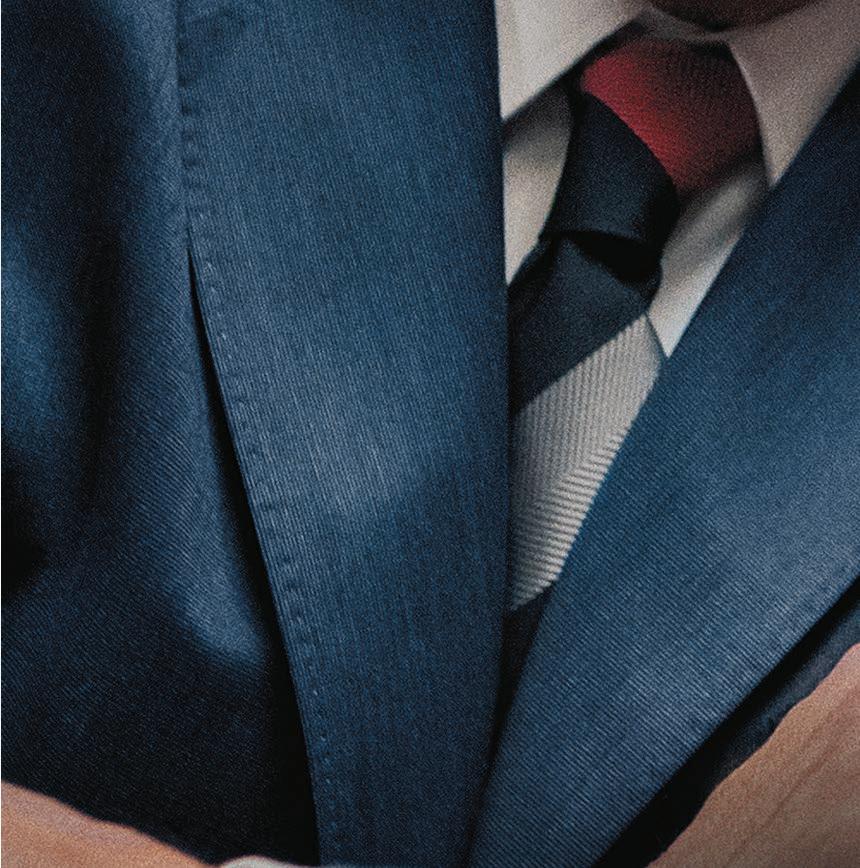
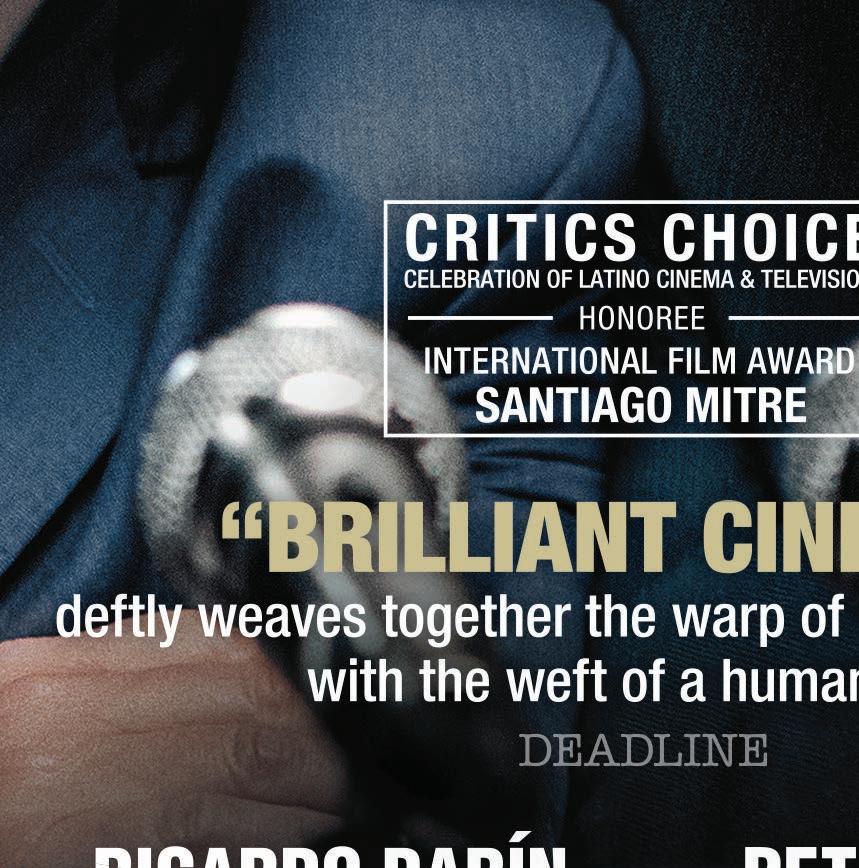
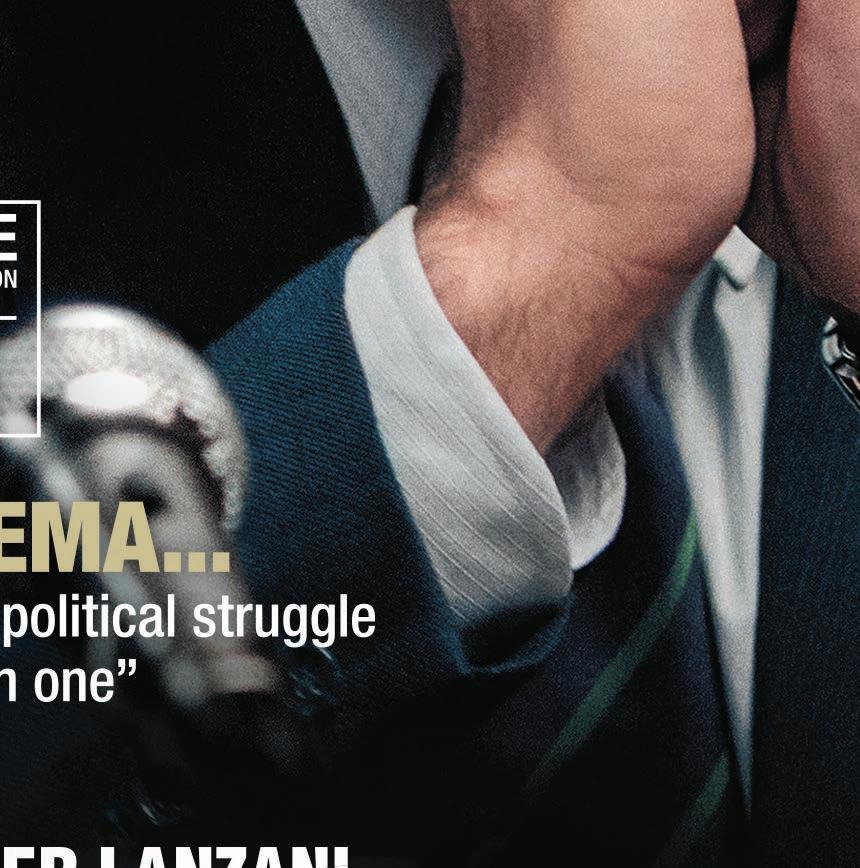






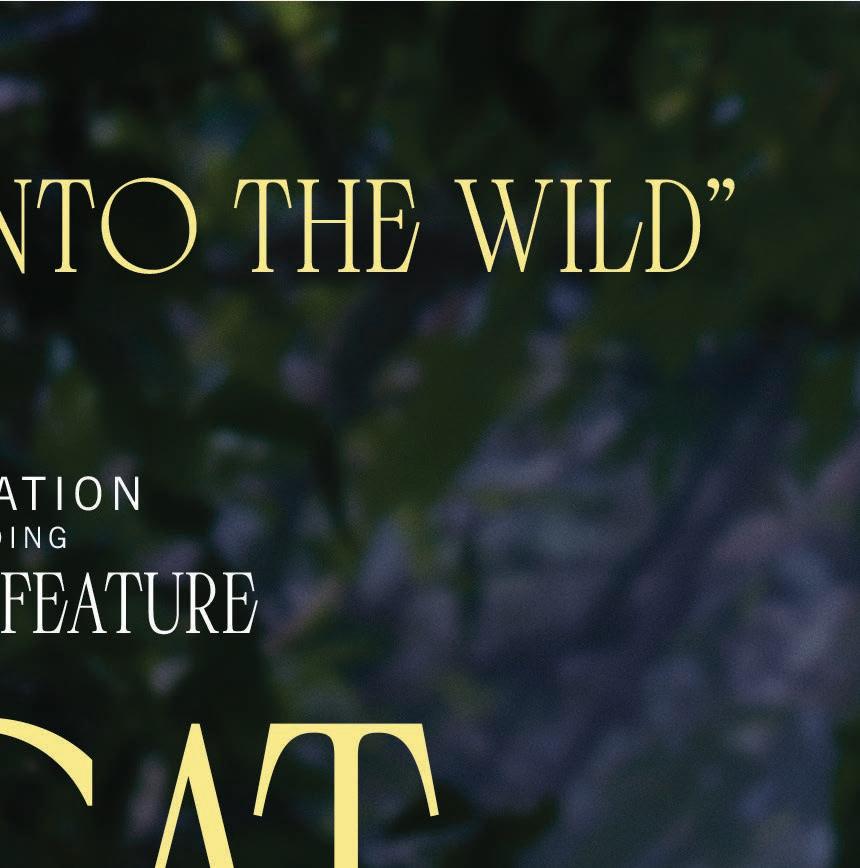



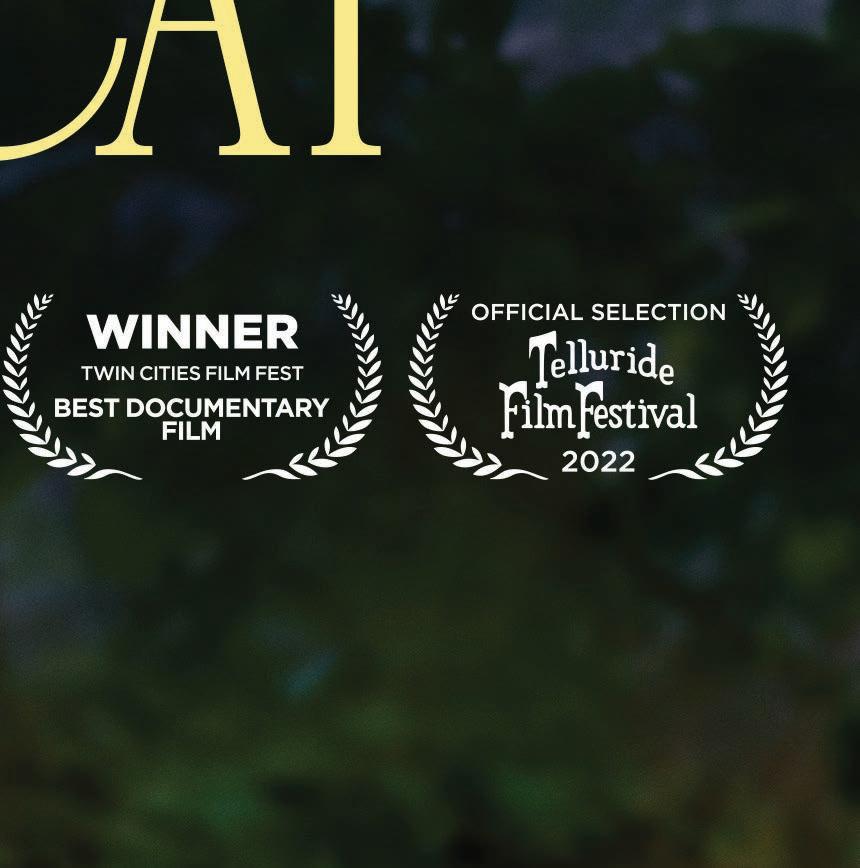




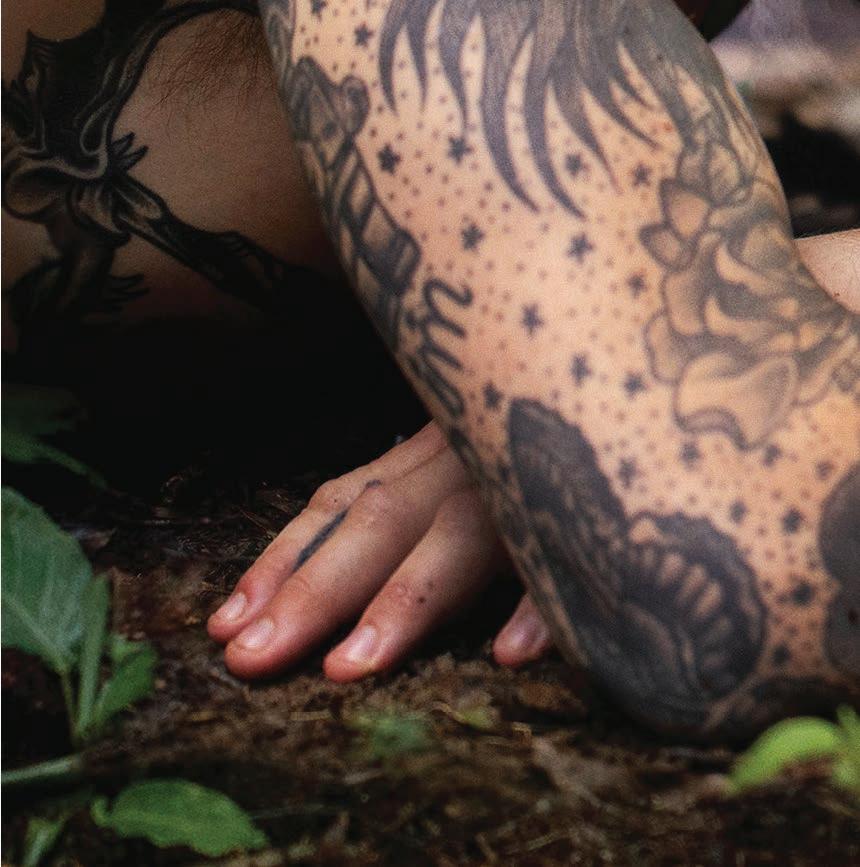

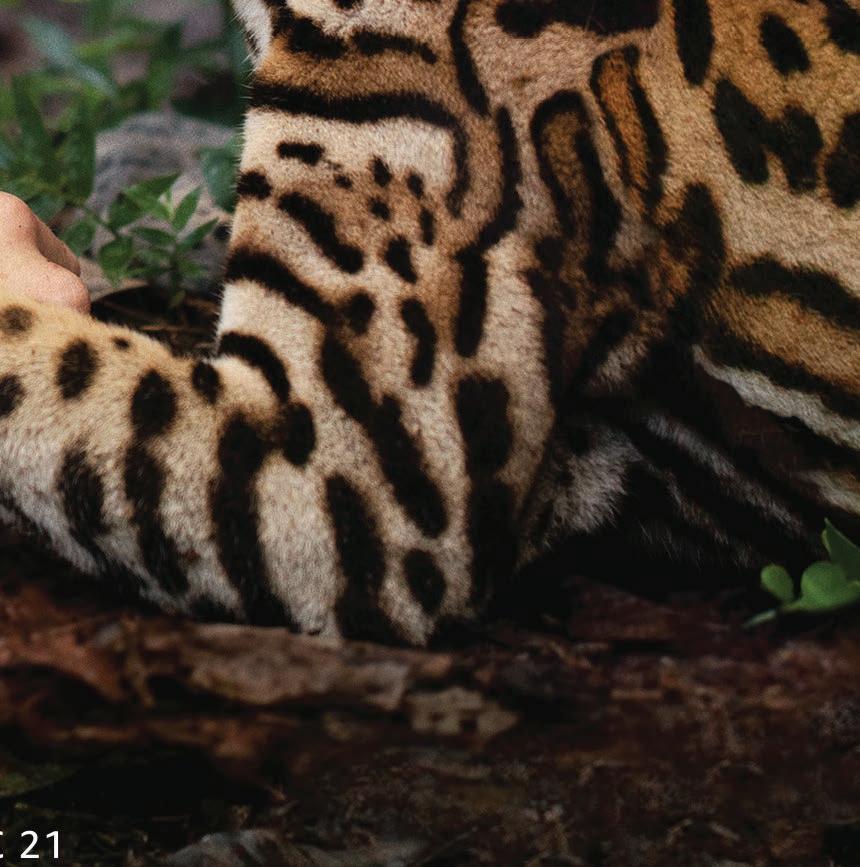
CO-EDITORS-IN-CHIEF
AWARDS
COLUMNIST
EXECUTIVE MANAGING EDITOR Patrick Hipes
EDITORIAL DIRECTOR & BOX OFFICE EDITOR Anthony D’Alessandro
SENIOR
SENIOR
INTERNATIONAL TELEVISION EDITOR Max Goldbart
INTERNATIONAL FEATURES EDITOR Diana Lodderhose
INTERNATIONAL BOX OFFICE EDITOR & SENIOR CONTRIBUTOR Nancy Tartaglione
INTERNATIONAL TELEVISION CO-EDITOR Jesse Whittock
ASSOCIATE EDITOR & FILM WRITER Valerie Complex
ASSOCIATE EDITORS Greg Evans Bruce Haring
CONTRIBUTING EDITOR, ASIA Liz Shackleton
SENIOR TELEVISION REPORTER Rosy Cordero
SENIOR
DEADLINE.COM
Breaking News Follow Deadline.com 24/7 for the latest breaking news in entertainment.
Sign up for Alerts & Newsletters
Sign up for breaking news alerts and other Deadline newsletters at: deadline.com/newsletters
VIDEO SERIES
The Actor’s Side Meet some of the biggest and hardest working actors of today, who discuss their passion for their work in film and television. deadline.com/vcategory/theactors-side/
Behind the Lens
Explore the art and craft of directors from first-timers to veterans, and take a unique look into the world of filmmakers and their films. deadline.com/vcategory/ behind-the-lens/
The
Film That Lit My Fuse
Get an insight into the creative ambitions, formative influences, and inspirations that fuelled today’s greatest screen artists. deadline.com/vcategory/thefilm-that-lit-my-fuse/
PODCASTS
20 Questions on Deadline
Antonia Blyth gets personal with famous names from both film and television. deadline.com/tag/ 20-questions-podcast/
Scene 2 Seen
Valerie Complex offers a platform for up-and-comers and established voices. deadline.com/tag/ scene-2-seen-podcast/
Crew Call
Anthony D’Alessandro focuses on the contenders in the belowthe-line categories. deadline.com/tag/ crew-call-podcast/
SOCIAL MEDIA
Follow Deadline
Facebook.com/Deadline Instagram.com/Deadline Twitter.com/Deadline YouTube.com/Deadline TikTok.com/@Deadline
CHAIRMAN & CEO Jay Penske
VICE CHAIRMAN Gerry Byrne
CHIEF OPERATING OFFICER George Grobar
CHIEF ACCOUNTING OFFICER Sarlina See
CHIEF DIGITAL OFFICER Craig Perreault
EXECUTIVE VICE PRESIDENT, BUSINESS AFFAIRS & CHIEF LEGAL OFFICER Todd Greene
EXECUTIVE VICE PRESIDENT, OPERATIONS & FINANCE Paul Rainey
EXECUTIVE VICE PRESIDENT, OPERATIONS & FINANCE Tom Finn
EXECUTIVE VICE PRESIDENT, PRODUCT & ENGINEERING Jenny Connelly
MANAGING DIRECTOR, INTERNATIONAL MARKETS Debashish Ghosh
SENIOR VICE PRESIDENT, SUBSCRIPTIONS David Roberson
SENIOR VICE PRESIDENT, DEPUTY GENERAL COUNSEL Judith R. Margolin
SENIOR VICE PRESIDENT, FINANCE Ken DelAlcazar
SENIOR VICE PRESIDENT, HUMAN RESOURCES Lauren Utecht
SENIOR VICE PRESIDENT, BUSINESS DEVELOPMENT Marissa O’Hare
SENIOR VICE PRESIDENT, CREATIVE Nelson Anderson
SENIOR VICE PRESIDENT, LICENSING & BRAND DEVELOPMENT Rachel Terrace
VICE PRESIDENT, ASSOCIATE GENERAL COUNSEL Adrian White
VICE PRESIDENT, HUMAN RESOURCES Anne Doyle
VICE PRESIDENT, REVENUE OPERATIONS Brian Levine
HEAD OF INDUSTRY, CPG AND HEALTH Brian Vrabel
VICE PRESIDENT, PUBLIC AFFAIRS & STRATEGY Brooke Jaffe
HEAD OF INDUSTRY, FINANCIAL SERVICES Carla Dodds
HEAD OF INDUSTRY, TECHNOLOGY Cassy Hough
VICE PRESIDENT, SEO Constance Ejuma
VICE PRESIDENT & ASSOCIATE GENERAL COUNSEL Dan Feinberg
HEAD OF LIVE EVENT PARTNERSHIPS Doug Bandes
VICE PRESIDENT, AUDIENCE MARKETING & SPECIAL PROJECTS Ellen Deally
VICE PRESIDENT, GLOBAL TAX Frank McCallick
VICE PRESIDENT, TECHNOLOGY Gabriel Koen
VICE PRESIDENT, E-COMMERCE Jamie Miles
HEAD OF INDUSTRY, TRAVEL Jennifer Garber
VICE PRESIDENT, ACQUISITIONS & OPERATIONS Jerry Ruiz
VICE PRESIDENT, PRODUCTION OPERATIONS Joni Antonacci
VICE PRESIDENT, FINANCE Karen Reed
VICE PRESIDENT, INFORMATION TECHNOLOGY Kay Swift
HEAD OF TALENT Marquetta Moore
HEAD OF AUTOMOTIVE INDUSTRY Matthew Cline
VICE PRESIDENT, STRATEGIC PLANNING & ACQUISITIONS Mike Ye
VICE PRESIDENT, PRODUCT DELIVERY Nici Catton
VICE PRESIDENT, CUSTOMER EXPERIENCE & MARKETING OPERATIONS Noemi Lazo
VICE PRESIDENT, ASSOCIATE GENERAL COUNSEL Sonal Jain
VICE PRESIDENT, MARKETING & PORTFOLIO SALES Stephanie Parker
VICE PRESIDENT, ASSOCIATE GENERAL COUNSEL Victor Hendrickson
DEADLINE HOLLYWOOD IS OWNED AND PUBLISHED BY PENSKE MEDIA CORPORATION
Nellie Andreeva (Television) Mike Fleming Jr. (Film)
COLUMNIST & CHIEF FILM CRITIC Pete Hammond
& INTERNATIONAL EDITOR-AT-LARGE Baz Bamigboye
EDITOR, LEGAL & TV CRITIC Dominic Patten
MANAGING EDITOR Denise Petski
MANAGING EDITOR Erik Pedersen
DEPUTY MANAGING EDITOR Tom Tapp TELEVISION EDITOR Peter White
INTERNATIONAL EDITOR Andreas Wiseman BUSINESS EDITOR Dade Hayes EDITOR-AT-LARGE Peter Bart
FILM CRITIC & COLUMNIST Todd McCarthy EXECUTIVE EDITOR Michael Cieply
SENIOR FILM WRITER Justin Kroll CO-BUSINESS EDITOR Jill Goldsmith LABOR EDITOR David Robb
POLITICAL EDITOR Ted Johnson
Goodfellow FILM REPORTER Matt Grobar INTERNATIONAL FILM REPORTER Zac Ntim TELEVISION REPORTER Katie Campione PHOTO EDITOR Robert Lang PRESIDENT Stacey Farish EXECUTIVE AWARDS EDITOR Joe Utichi VICE PRESIDENT, CREATIVE Craig Edwards SENIOR AWARDS EDITOR Antonia Blyth TELEVISION EDITOR Lynette Rice FILM EDITOR Damon Wise DOCUMENTARY EDITOR Matthew Carey CRAFTS EDITOR Ryan Fleming PRODUCTION EDITOR David Morgan EDITORIAL ASSISTANT Destiny Jackson DIRECTOR, SOCIAL MEDIA Scott Shilstone DIRECTOR, EVENTS Sophie Hertz DIRECTOR, BRAND MARKETING Laureen O’Brien EVENTS MANAGER Allison DaQuila VIDEO MANAGER David Janove VIDEO PRODUCERS Benjamin Bloom Jade Collins Shane Whitaker DESIGNERS Catalina Castro Grant Dehner SOCIAL MEDIA COORDINATOR Natalie Sitek EVENTS COORDINATOR Dena Nguyen DESI N/PRODUCTION COORDINATOR Paige Petersen CHIEF PHOTOGRAPHER Michael Buckner SENIOR VICE PRESIDENT, ASSOCIATE PUBLISHER Kasey Champion SENIOR VICE PRESIDENT, GLOBAL BUSINESS DEVELOPMENT & STRATEGIC PARTNERSHIPS Céline Rotterman VICE PRESIDENT, ENTERTAINMENT Caren Gibbens VICE PRESIDENT, INTERNATIONAL SALES Patricia Arescy VICE PRESIDENT, SALES & EVENTS Tracy Kain SENIOR DIRECTOR, ENTERTAINMENT Brianna Corrado DIRECTOR, ENTERTAINMENT London Sanders DIRECTOR, DIGITAL SALES PLANNING Letitia Buchan SENIOR DIGITAL ACCOUNT MANAGER Cherise Williams
PLANNERS Luke Licata Kristen Stephens SALES ASSISTANT Daryl Jeffery
DIRECTOR Natalie
DISTRIBUTION DIRECTOR Michael Petre PRODUCTION MANAGER Andrea Wynnyk
INTERNATIONAL FILM CORRESPONDENT Melanie
SALES
PRODUCTION
Longman

First Take 4 TAYLOR
10
and
12 DOCUMENTARY:
. 18 INTERNATIONAL:
. 22 FRESH
Cover Story 24 LEGENDS
Colin
Dialogue 52 DANIELLE DEADWYLER 56 HONG CHAU 60 ANDREARISEBOROUGH 64 CLAIRE FOY 68 STEPHANIEHSU Craft Services 72 BIO
Three
their
Armageddon
and
The Partnership 80 ZOE
KANTOR:
Flash Mob 88 CONTENDERS
ON
MICHAEL BUCKNER FOR DEADLINE CALL SHEET
RUSSELL: The up-andcoming Canadian sinks her teeth into Bones and All.
QUICK SHOTS: Creating a treacherous cave for Thirteen Lives
a multiverse for Everything Everywhere All at Once.
A forensic breakdown of this season’s non-
The year’s
FACE: Aftersun’s C .
OF THE FALL-OUT:
Farrell and Brendan Gleeson reunite for director Martin McDonagh’s acerbic break-up comedy The Banshees of Inisherin
DIVERSITY:
cinematographers interpret
directors’ personal stories with
Time, The Inspection
The Fabelmans
KAZAN AND JODI
The actress and reporter discuss how art imitates life in their #MeToo drama She Said
FILM - LA: The W C .
THE COVER: Colin Farrell, Martin McDonagh & Brendan Gleeson, photographed by .
T I A
R K

S E T
EAT,
By Damon Wise

F
YANNIS DRA OULIDIS/ PICTURES
QUICK SHOTS DOC RO ND IN ERNA IONAL IN RI E RES ACE RAN IE CORIO
PREY, LOVE
Chewing the fat with Taylor Russell, the breakout star of Luca Guadagnino’s cannibal romance Bones and All


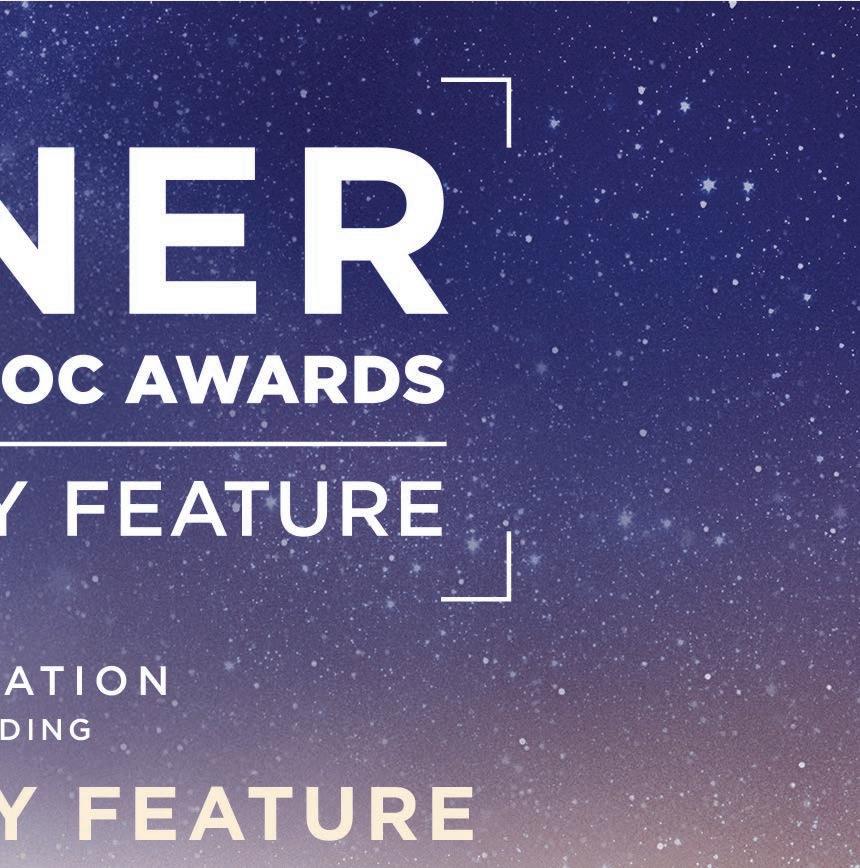











“I’ve worked since I was 13 years old,” says Taylor Russell. “So many random things. Mostly restaurants, but I worked at a jewelry store, and I almost worked for Amazon, doing shipping and receiving.” She laughs. “Yeah, I’ve dipped my toe in a few different sectors.” Surprisingly, the job that probably proved useful in later life was a short stint in a butcher’s shop: handling all that raw meat must have come in handy when Luca Guadagnino came calling with the female lead for his stylish new horror project, an adaptation of Camille DeAngelis’s acclaimed 2016 YA novel Bones and All.
Set in ’80s America, the film stars Russell as Maren Yearly, a teenage misfit who comes to realize that her taste for human flesh makes her part of an underground subculture. On a quest to find a reason for this from her estranged mother, Maren meets another ‘eater’, Lee (Timothée Chalamet), and together they embark on a bloody but strangely tender killing spree.

Russell didn’t know any of this beforehand. “I didn’t know the book, I didn’t know the subject matter, I didn’t know anything at all,” she says. She certainly wasn’t expecting to co-star in it either. “I kind of felt—and still feel—that it could have led to anything. It could have just been a small role, and by the grace of whatever is looking out for me in this world, it was not a small role. That was a good and pleasant surprise.”
It’s a testament to her intrepid spirit that the
28-year-old did not need to be asked twice. What sealed it? “He’s a real leader, Luca. He’s somebody who’s so specific in what he’s looking for.
At the same time, he’s also open to being changed every day. There’s a malleable sense to him that, I think, is just innate to who he is. He has that beautiful blend of knowing where he wants to get to but not necessarily knowing how he’s going to get there. That’s the sweet spot where all of us want to live, but it’s definitely where he resides.” Did it rub off? “Being around that every day is scary at first,” she says, “but you learn how to trust yourself and trust your
choices. I had a lot of support in the jumping off of the cliff into the abyss. I didn’t feel like I was alone.”
She is similarly flattering about her co-star Chalamet, whom she’s known for a while and who she almost worked with on a few projects that didn’t come together. “Timothée is also somebody who’s very available,” she says. “He’s always looking for another way to do a scene, or for a way push it further, to squeeze all of the beautiful, creative juice out of it. Working with him in that way, you never really feel like there was anything left undiscovered. You feel great at the end of the day, because you’re like, ‘OK, I’ve done everything that maybe I would’ve wanted to try there, because the actor across from me is pushing himself to the same degree that I want to push myself.’”
Then there’s Mark Rylance, the British Oscar-winner who plays Sully, Maren’s guide to the cannibal cognoscenti. She appears with him in a gruesome and wholly indelible scene where, dressed only in his baggy white undies, he invites Maren to tuck into a dying grandmother. “He’s a very curious and gentle soul,” says Russell, “and when you look in his eyes, he’s so ancient and
6 DEADLINE.COM/ AWARDSLINE YANNIS DRA OULIDIS/ PICTURES FT CLOSE-UP














wise. I felt immediately very comfortable with him. The fascinating thing about Maren and Sully is that it’s not like she’s completely freaked out by him. It’s not black and white. She feels a sort of familial draw to him.”
Though she’s taking it in her stride, Bones and All marks a new stage in Russell’s career, moving up from eye-catching supporting roles like the one she had in 2019’s Waves that won her a Gotham Award for Breakthrough Actor. But Russell still can’t quite place where the impulse to act first came from.

“I don’t really know,” she says. “I’ve been asked that a lot lately. I wish I had a more simple answer, but, on reflection, ever since I was a little girl, I definitely wanted to be in the arts. I loved dancing, and my ultimate dream was to go to Julliard to be a ballerina.”
That didn’t happen, and so she thought for a while that maybe she’d be a painter instead. “I also really liked psychology and English,” she recalls. “I loved reading. I didn’t start acting until I was 18, when I took a theater class. My parents are very artistic people, and I was always a little ham and a goofball, in my own way. It was around me. I just didn’t accept it, necessarily, until
I graduated.”
The first play she remembers doing was Fame. “It was just a small role,” she says. “I don’t remember what part I played, I don’t even think I said anything, but I’d broken my wrist the night before, so I had a bright pink cast on my arm. My mom said, ‘You have to go out and do the play. You committed to this.’ That was the first time I experienced ‘the show must go on’: no matter what’s going on, you have push forward and prevail in your
own way.” She laughs. “Yeah, that’s my first acting memory.”
Russell grew up in Canada, and she definitely feels that the healthy film scene in Vancouver helped her progress. “I got my agent there after high school,” she says, “and then just started doing smaller roles, or auditioning for whatever I could. I think—although I’m not 100% sure— that the first thing I did was a show called Emily Owens MD. I played Mean Girl 2, I had just one line, and the part got cut.”
After five years or so, she landed a regular job in the streaming series Lost in Space, as Judy Robinson. “I was so broke until that point,” she says, “and then suddenly I was making good Netflix money. I finally felt like, ‘Oh, I guess I can quit my job now.’ But, even then, I felt that I would go back to it at some point.”
Another lifeline came while Russell was working on a movie called Words On Bathroom Walls in the Carolinas with actor Kelvin Harrison, Jr. He FaceTimed her to talk about the movie he’d just signed up for. “I’m doing this movie called Waves,” he said, “and it looks like you could play my sister.” So, Russell sent an audition tape and got the part.
“I had this wonderful experience on it,” she says, remembering a dreamlike time on set. “I had so much space. I really was able to daydream and look at the clouds and kind of float. It felt like the first time I was able to float while working.” She laughs. “I don’t even really know what I mean by that, but it felt really good. Yeah, it definitely changed my life.”
More changes came in 2020, with her first documentary, The Heart Still Hums, about the fostercare system. “I love documentary filmmaking,” she says. “I think, as an actor, you’re also trying to strive for some sort of truth. It may exist in acting, but it exists for sure in documentary storytelling. That was really interesting to me.”
Russell has no immediate plans to return to documentary filmmaking. Instead, she’s working on “a really wonderful indie film” called Mother Couch, by up-and-coming Swedish director Niclas Larsson. “It’s about a mother who will not leave the couch,” she says, rather helpfully. “Ellen Burstyn’s in the film, so is Ewan McGregor, and a whole other slew of incredible actors. I’ve never done a comedy before, so I’m feeling very pushed in a great way, and I feel very unsure of if I’m going to be totally treacherous in it. I’m in the middle of filming it, so it’s hard for me to fully dissect it yet.”
And after that? What would a director have to say to pique her interest? She laughs. “I love that question! Nobody’s ever asked me that before! What would they have to say? I don’t know, but I’d want to feel as though they were offering me a meal that I had never tasted before, metaphorically, and that it also would feel very dangerous.”
Isn’t that the exact pitch that Luca gave her for the rigorous roadtrip of Bones and All? “It’s not far off. Not far off at all. Yeah, I want to feel scared is how I want feel. I know a lot of actors say that, and I used to think, ‘What does that even mean?’ Now I kind of understand. It means that you want to be suspended and know that maybe it’s all going to crack. Or maybe it won’t. Who knows?” ★

DEADLINE.COM/ AWARDSLINE FT CLOSE-UP YANNIS DRA OULIDIS/ PICTURES/COURTESY
PICTURES
EVERETT
Right: Taylor Russell in Waves ; below: with Timothée Chalamet in Bones and All .














Tight Spaces
cave system tight enough to be actors and cameras.
Thirteen Lives is based on the true story of a Thai soccer team
brave volunteer rescue divers who saved them. “This is an event that was seen all over the world and there were so many photographs,” says Hughes. “What you don’t have is photos of the inside.”


With little documentation of the cave system to go on, Hughes in stead focused on what would work best for the story. “We needed a

Distorted Frames
How VFX supervisor Zak Stoltz created a complex multiverse with only a small team

With all the mind-bending multi verse action of Everything Every where All at Once, directors Dan Kwan and Daniel Scheinert trusted Zak Stoltz to lead a VFX team of . E W (Michelle Yeoh), as she is swept up in an adventure that connects her with versions of herself from other . W all the different universes and time starts to distort,” Stoltz says. To create that distortion, he changed the same shot. “Certain things are going at 24 frames per second and

other things are going at 12 frames per second.”
While working with a small team was a challenge, Stoltz says there . I time to be able to play around,” he says. “Every artist was able to have one-on-one work sessions with D D . I able to get all of the crazier visual effects done.” —Ryan Fleming
moment where Chris loses the line and he gets lost,” she says. “A tun nel full of stalactites seemed like an appropriate place for that because it’s confusing. You can’t tell which direction you’re going.” Hughes designed the tunnel to be 90 feet long, with a large enough area where the line could get so high that someone couldn’t reach it.
Early on in the production, the actors decided that they wanted to do the dives instead of stunt dou bles. “Part of my design is also the face masks, and making sure you could see the actor’s face,” Hughes . I realized it would be so much better if it was them diving. There would be so much more footage to use.”
DEADLINE.COM/ AWARDSLINE 1 Jessie Buckley Woman Talking ODDS................................... / 2 Kerry Condon The Banshees of Inisherin ODDS................................... / 3 Claire Foy Women Talking ODDS................................... / 4 Stephanie Hsu Everything Everywhere All at Once ODDS................................. / 5 Hong Chau The Whale ODDS................................. / 1 Cate Blanchett Tár ODDS................................... / 2 Michelle Yeoh Everything Everywhere All at Once ODDS................................. / 3 Michelle Williams The Fabelmans ODDS.................................. / 4 Danielle Deadwyler Till ODDS................................. / 5 Viola Davis The Woman King ODDS................................. /
Oscar
Get up-to-date
your
Actress in a Leading Role Actress in a Supporting Role At press time, here is how Gold Derby’s experts ranked the
chances in the Lead and Supporting Actress races.
rankings and make
own predictions at GoldDeby.com Charted Territory
Production designer Molly Hughes on recreating cave system
FT QUICK SHOTS
/DAVID
VINCE VALITUTTI/
ORN RIEND/A /COURTESY EVERETT COLLECTION/ A STOLT
Ryan Fleming
For Thirteen Lives, production designer Molly Hughes was tasked with building a set based on the Tham Luang cave in Thailand. The
Viggo Mortensen and Colin Farrell in Thirteen Lives
Michelle Yeoh in Everything Everywhere All at Once
FOR YOUR CONSIDERATION

BEST DOCUMENTARY FEATURE






























““Sr.” proves a tender portrait and fitting tribute to an offbeat hero and creative pioneer.”




















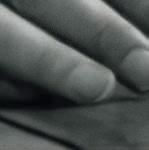





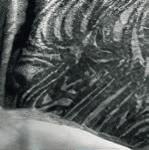











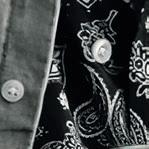











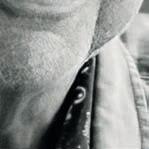
















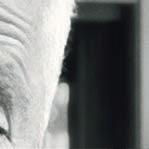




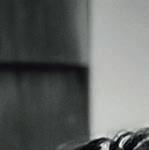
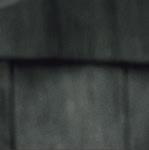

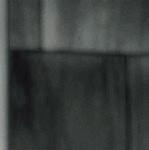
















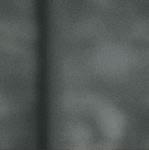










“Funny and moving. It is both deeply personal and incredibly universal.” Joey Magidson,









 From Director CHRIS SMITH and Producer ROBERT DOWNEY JR.
From Director CHRIS SMITH and Producer ROBERT DOWNEY JR.
FILM.NETFLIXAWARDS.COM
HOT DOCS
Your complete guide to the frontrunners and surprise
By Matt Carey
For years HBO Documentary Films, under the stewardship of Sheila Nevins, domi nated the Oscars, racking up nominations and wins left and right. But since her departure in 2018 it has faced an Oscar dry spell, at least in the documentary feature category. All that could change this year, in a major way.
HBO Documentary Films has roared into awards season with perhaps the strongest slate of contenders of any distributor, beginning with Oscar favorite All That Breathes (with theatrical partners Side show and Submarine Deluxe). Shaunak Sen’s lyrical film about two brothers in Delhi, India who rescue and reha bilitate injured birds of prey won the Grand Jury Prize for World Cinema Documentary at Sundance and followed that up by winning the L’Œil d’or prize for documentary at Cannes. All That Breathes has kept the momentum go ing with nominations from the Cinema Eye Honors and IDA Documentary Awards, among others.
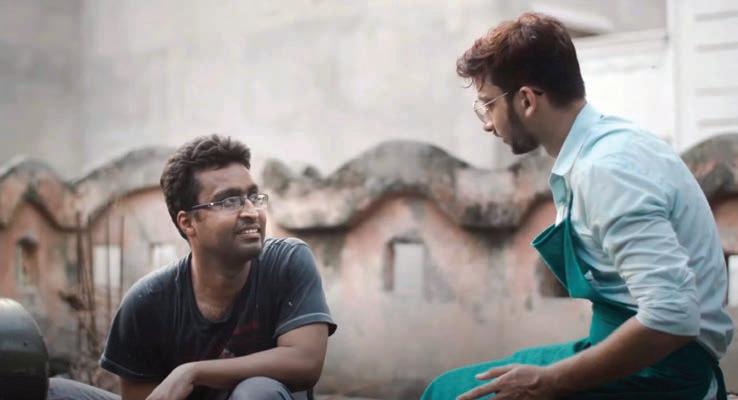
All the awards attention has left Sen somewhat flummoxed. “Just to get into the likes of Sundance and Cannes, let alone winning them, is already at the top of my desire matrix,” he says. “It’s really something that feels not entirely processed.”
That feeling may be shared by Nancy Abraham and Lisa Heller, who took over HBO Documentary Films from Nevins. They’ve got another top Oscar contender in Moonage Daydream, in tandem with
Neon, far and away the highest-gross ing documentary to reach theaters this year with $12 million world wide. Brett Morgen’s film on David Bowie has stunned with its immersive exploration of the late rock star’s artistic ambitions.

Morgen has traveled the world in support of the film and conducted a running master class on Twitter, explaining his color correction choices virtually frame by frame. “It’s not just about aesthetics. Color has a profound impact on a film’s pacing,” he tweeted just before Thanksgiving. “Thrilled that so many of you find the color conversation intriguing.”
HBO Documentary Films’ contenders by no means end there. It’s also got TheJanes, directed by Tia Lessin and Emma Pildes; Katrina Babies, from director Edward Buckles Jr., and
Master of Light, a film about formerly imprisoned artist George Anthony Morton directed by Rosa Ruth Boesten and produced by a trio that includes Oscar winner Roger Ross Williams.
Further burnishing the HBO brand are The Balcony Movie (from HBO Europe), Paweł Łozinski’s curiously absorbing documentary filmed entirely from his balcony overlooking a street in Warsaw, Poland, and All the Beauty and the Bloodshed, an Oscar favorite directed by Laura Poitras (Citizenfour). The Poitras film examines the life and work of artist Nan Goldin, emphasizing Goldin’s campaign to expose the role of the Sackler family—owners of OxyContin maker Purdue Pharma—in the opioid crisis. The artist became addicted to OxyContin and made it her mission to get the Sackler name removed from many of the world’s leading museums, which had accepted reputation-cleansing funds from the wealthy philanthropists.
“When she started doing these protests,” Poitras noted during a discussion of the documentary at the New York Film Festival, “I was just so moved and inspired that Nan was using her position in the art world to hold the Sackler family accountable.”
All That Breathes
DEADLINE.COM/ AWARDSLINE
FT FOCUS ON: DOCUMENTARY
NEON/SIDESHOW/COURTESY EVERETT COLLECTION
Moonage Daydream














All the Beauty and the Bloodshed
All the Beauty and the Bloodshed, winner of the Golden Lion at Venice, was produced by Participant and released in domestic theaters by Neon, the independent production company and distributor that has become a perennial Oscar documentary contender. Along with All the Beauty and the Bloodshed and Moonage Daydream, Neon boasts an impressive slate that includes Beba, directed by Rebeca Huntt, and Three Minutes – A Lengthening, from director Bianca Stigter, a film that conducts a forensic investigation into rare footage shot in a Jewish section of a Polish town on the eve of World War II.
The Academy’s Documentary Branch—which determines the shortlist of 15 features and the eventual five Oscar nominees—has welcomed many international members to its ranks in recent years. That has helped open the door to international-themed films that might otherwise have failed to break through, including recent nominees Writing with Fire (India), The Mole Agent (Chile), Collective (Romania), and Honeyland (North Macedonia). The international factor could boost the prospects of several films this year, from A House Made of Splinters, Simon Lereng Wilmont’s documentary about a temporary shelter for children in Eastern Ukraine, to Evgeny Afineevsky’s timely Freedom on Fire: Ukraine’s Fight for Freedom, a film that went into production almost immediately after Russia’s brutal invasion of its neighbor.

“We wanted to try to influence that the war will not be neglected,”


Afineevsky says, “that people will not forget that every day innocent people are dying.”
Tantura, out of Israel, and Young Plato, from Ireland, are among the other films that could benefit from the Doc Branch’s international dimension.

National Geographic won the Oscar in 2019 for Free Solo, and it’s back this year with two more Oscar favorites: Fire of Love, directed by Sara Dosa, and The Territory, directed by Alex Pritz. Fire of Love, winner of numerous awards around the world, tells the gripping story of French couple Katia and Maurice Krafft, scientists whose obsessive study of volcanoes ultimately cost them their lives. The Territory centers on a portion of Brazil’s Amazon rainforest that is home to the Indigenous Uru-Eu-Wau-Wau people, whose protected lands come under constant invasion by miners, loggers and homesteaders. The invaders have burned down huge tracts of the rainforest, threatening not only Indigenous tribes but one of the planet’s most important ecosystems.
“We’re nearing 100 film festivals now and it’s just been an incredible ride,” Pritz notes. “One of the most meaningful things for us was that NatGeo supported us to release the film in Brazilian theaters… The response from Brazil has been overwhelmingly positive.”
DEADLINE.COM/ AWARDSLINE FT FOCUS ON: DOCUMENTARY ALE PRIT /NATIONAL EO RAPHIC DOCU ENTARY IL S/NEON/COURTESY EVERETT COLLECTION
We wanted to try and in uence that the war will not be neglected... that people will not forget that every day innocent people are dying.”
“
—Evgeny Afineevsky
The Territory














Retrograde, also from National Geographic, marks the latest Oscar contender from filmmaker Matthew Heineman (Cartel Land, The First Wave). Netflix, meanwhile, contends with a quartet of films, its hopes pinned primarily on Sr., Chris Smith’s documentary about filmmaker Robert Downey Sr. and his relationship with his son, Robert Downey Jr., and Descendant, directed by Mobile, Alabama native Margaret Brown. She documents a Mobile neighborhood known as Africatown that was settled in the 19th century by descendants of the Clotilda, the last known slave ship to enter U.S. waters.
Netflix and Higher Ground, the production company founded by former President Obama and First Lady Michelle Obama, acquired Descendant out of Sundance Film Festival, where the film won a Special Jury Award for Creative Vision. The Obamas made a surprise appearance on behalf of the film at the Martha’s Vineyard African American Film Festival last August.
“Descendant reminds us of the power of the stories that we have,” Mrs. Obama noted on that occasion. President Obama said, “This documentary captures an important chapter in our history—one that’s too often distorted, forgotten, or buried… For the people of Africatown this represented a story of pain and extraordinary hardship, but also a story of strength, resilience, and overcoming.”
Among other streaming powerhouses, Amazon Studios contends with Wildcat, directed by Melissa Lesh and Trevor Beck Frost, and Good Night Oppy, directed by Ryan White. The latter film, from Amblin Enter-
tainment, leverages exceptional visual effects by ILM to take viewers to the surface of Mars, where NASA rovers Spirit and Opportunity searched for evidence that organic life may once have existed on the red planet.

The announcement in late October that CNN under new CEO Chris Licht would back away from producing documentaries with outside partners was met with shock in the nonfiction community. But CNN Films, which earned an Oscar nomination with RBG, could go out with a bang with two fresh contenders: Gabby Giffords Won’t Back Down, from RBG directors Julie Cohen and Betsy West, and Navalny, directed by Daniel Roher. Navalny focuses on Alexei Navalny, the Russian opposition leader whose anti-corruption campaign and criticism of Vladimir Putin made him the target of a near-fatal poisoning attempt. It has earned awards at film festivals from Seattle to Sundance.
Shortlist wildcards include Last Flight Home from Ondi Timoner (MTV Documentary Films), Bad Axe, the feature directorial

debut of David Siev from IFC Films, Riotsville, U.S.A. (Magnolia Pictures), I Didn’t See You There (XTR), Mija (Disney Original Documentary), What We Leave Behind (Array Releasing), The Corridors of Power (Showtime), and Lowndes County and the Road to Black Power (Greenwich Entertainment/Participant).
Two contenders from Apple Original Films focus on American icons: Sidney, the Oprah-produced film about actor Sidney Poitier, directed by Reginald Hudlin, and Louis Armstrong’s Black & Blues, directed by Sacha Jenkins. The Armstrong film delves into private audio recordings made by the jazz great which shed light on his struggles as an African American artist and entertainer in a deeply racist society.
“Both Imagine Documentaries and Apple have been extremely supportive. And never in my career have I had this kind of attention on my work and our work as a team and it feels great. It makes you feel appreciated,” Jenkins observes. “There are so many things people can watch today. There’s so many platforms and networks and documentaries that are great that come out and they’re gone a week later.”
More than 140 feature documentaries have qualified for Oscar consideration, up from last year’s totals. They’re all vying for recognition that ensures they aren’t gone in a week, but stand the test of time. ★

6 DEADLINE.COM/ AWARDSLINE FT FOCUS ON: DOCUMENTARY A A ON/ A NOLIA PICTURES/NET LI /COURTESY EVERETT COLLECTION
Above: Riotsville, U.S.A. ; below: Descendent .
Good Night Oppy






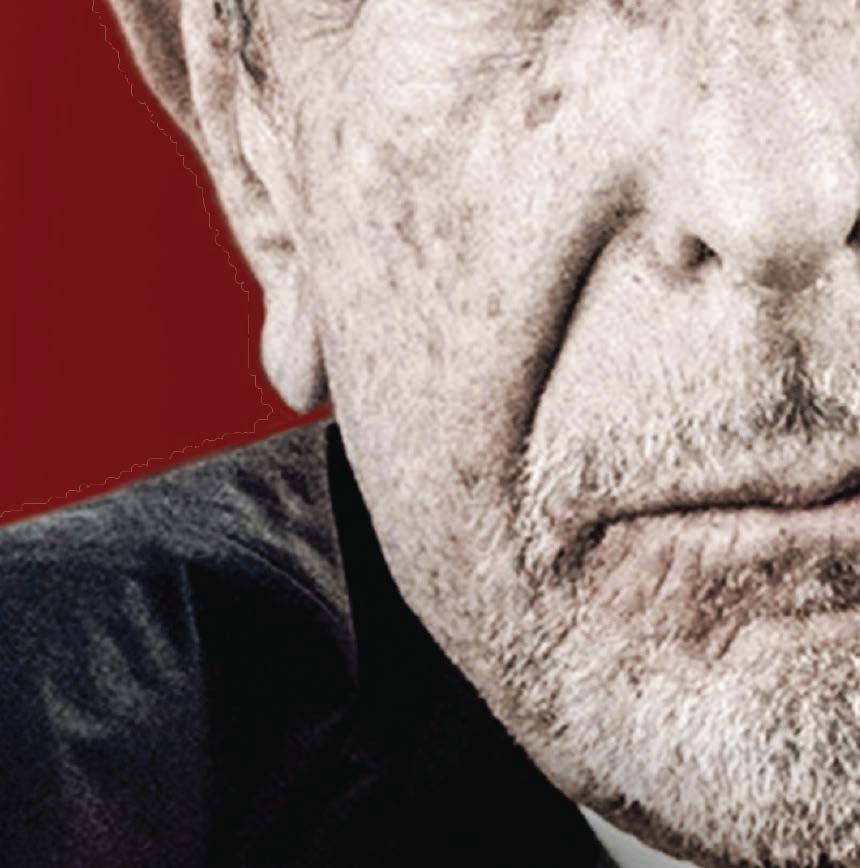







WARNINGS FROM HISTORY
By Damon Wise
Strange as it may seem, the Oscar for Best International Feature tends to go to movies that are universal rather than geographically specific. Last year’s winner Drive My Car spoke more about mankind’s default setting to loneliness than it did about the specifics of relationship dynamics in modern Japan, just as the Danish drunks in 2021’s Another Round got hammered in a way that was relatable to boozers in every country from Albania to Zambia. Maybe the Academy feels that real life is better left to docs, but a 2015 win for the harrowing Second World War drama Son of Saul suggests that the door is always open. And after a year that saw the whole world reeling from Vladmir Putin’s invasion of Ukraine, this might be one of those years that addresses the fact.
Clearly, the abrupt nature of Putin’s surprise maneuver on February 24 caught many unawares, especially in an industry that can be slow to react. Maryna Er Gorbach, however, had begun work on her film Klondike—Ukraine’s official entry in the Oscar stakes—nearly two years before. “We shot this movie non-stop in 2020,” she told a press conference in Sarajevo, “having this feeling that we are already late because, there had already been six years of [Russian] occupation [after the annexation of Crimea].”
Set on 17 July 2014, the day when unknown forces believed to be using a Russian missile shot down Malaysia Airlines Flight 17, Klondike
tells the story of a pregnant farm owner caught up in Russia’s assault on Donbass. “I remember the day well,” said Er Gorbach, “because it was a huge civil and inter national air-crash catastrophe. It was not a Ukrainian or Russian airplane, it was not a military plane. It was a totally shocking event. And we thought, ‘This event will not be ignored by the world, by international politicians, by journalists, whatever. It will bring a huge conversation about the events in Ukraine.’ But in 2016 I realized that this wasn’t happening.”

With Klondike, Er Gorbach aims to remind people of the human cost of war: not just the loss of lives but the loss of homes and livelihoods in the displacement that follows. “Often when people are in war zones, after a few months or after a few years, they have a feeling that they’re forgotten,” she said, “that nobody shares their pain, and that no one understands what’s really happening with them. I know that for many Ukrainians it’s hard to watch [my] movie, but I also want these people to know that I feel the same pain, and I’m trying to share this
feeling with the viewers, so that they won’t be alone with their feelings. [With this film] I want the viewer to experience the power of women’s instincts to survive, to resist, and to fight for the future.”
Russia, of course, won’t be competing this year, having snubbed the Oscars in a pre-emptive strike. Some countries, though, are only too keen to offer up mea culpas about shameful episodes from the past. New Zealand is backing Tearepa Kahi’s Muru (a Maori word with many readings, one being “forgive”). Set in the otherwise peaceful Ruatoki Valley in the Tühoe region of New Zealand, Kahi’s film deals with a series of police raids in 2007 in which the authorities targeted an Indigenous community, hoping to shut down Maori activists in the area by falsely portraying them as domestic terrorists.

The film’s star, Cliff Curtis, acknowledges that this is something of a stain on such a progressive nation. “But what’s great about our country is that we’re telling a story about this with the support of our government,” he says. “Y’know, other governments might not be so willing to participate in this kind of exploration of who we are. And so it’s critical, and healthy, to be able to examine those things we’re uncomfortable with.”
Argentina is another country that is willing to open up the wounds of the past. Indeed, it has
DEADLINE.COM/ AWARDSLINE
Will the war in Ukraine have an impact on this year’s International Oscar shortlist?
PROTI /JAW ONE PICTURES
Klondike
Muru
FT FOCUS ON: INTERNATIONAL









“WHETHER YOU CALL IT A RELAUNCH, COMEBACK, RETURN OR REBIRTH, IT’S CAPTURED IN A DOWN-TO-EARTH, MEMORY-INFUSED DOCUMENTARY THAT’S A GIFT MOVING, THOROUGHLY ENGAGING.” TANYA TUCKER THE RETURN OF featuring BRANDI CARLILE FOR YOUR CONSIDERATION IN ALL CATEGORIES INCLUDING BEST DOCUMENTARY FEATURE BEST DIRECTOR Kathlyn Horan AMPAS® MEMBERS: WATCH NOW IN THE ACADEMY SCREENING ROOM
previous form for it, winning the 2009 Oscar with Juan José Campanella’s noir-thriller The Secret in Their Eyes, which was set during in the pre-dictatorship years when far-right death squads ran amok. This year the region is getting behind Santiago Mitre’s Argentina, 1985, an account of the trial that led to jail time for those responsible for the torture and murder of thousands.

The years ’75-’83 have been addressed a lot, and those dark times have cast a long shadow. Says the star of Argentina, 1985, Ricardo Darin, “There was a wave of Argentine screenwriters who, after having lived through such a difficult period and through such a horrific dictatorship, felt obliged to make reference to it, which is why there were some very hard-to-watch films that emerged from that period.”
Now, he says, there is a new generation, and one that doesn’t feel the same obligations to the past: “Which is why you get the same subject matter, the same history, being treated and presented through films in a completely different way.” And is also why Argentina, 1985 might catch the Academy’s eye: although it is perfectly serious in its assessment of the misdeeds of the Junta, the film is often very funny, notably in its depiction of Darin’s character, the witty, irreverent lawyer Julio Strassera.
“I think it’s a very clever script-strategy,” says Darin, “because it lowers our defenses for the second half of the film, which otherwise might come off to audiences as too heavy or almost too cruel or too burdensome. It’s one of the really strong aspects of the film for me, that the heavy themes we’re exploring don’t ever overburden the audience.”
Wartime stories, however, are relatively thin on the ground this year. One that might catch voters’ attention, however, is the Jordanian con tender Farha, about a teenage girl caught up in the controversial af
termath of the 1947 U.N. plan to partition Palestine (also known as the Nakba or “catastrophe”). “When you watch a film about Palestine, you always think you’re going to watch a political film,” says direc tor Darin J. Sallam. “But this was always going to be a human story first, about a child who’s forced to grow up and to become a woman. She didn’t choose any of this.”
Producer Deema Azar explains a little more. “The film is called ‘Farha’ and, in Arabic that means joy,” she explains. “It refers to the joy that was stolen from the Palestinian people in 1948, and it was important for us to show that there was light in Palestine, that it was a land with people who had lives, dreams and aspirations. In almost every household in Jordan, you’d hear a story about Pal estine 1948, about what happened to that specific family, and how they ultimately ended up in Jordan because of that.”

No conflict so far, though, has seen as a much global upheaval as the Second World War, which is the subject of Edward Berger’s Netflix hit All Quiet on the Western Front, an adaption of Erich Maria Remarque’s 1929 memoir/novel. For many, the 1930 American version is unimpeachable, so why make it
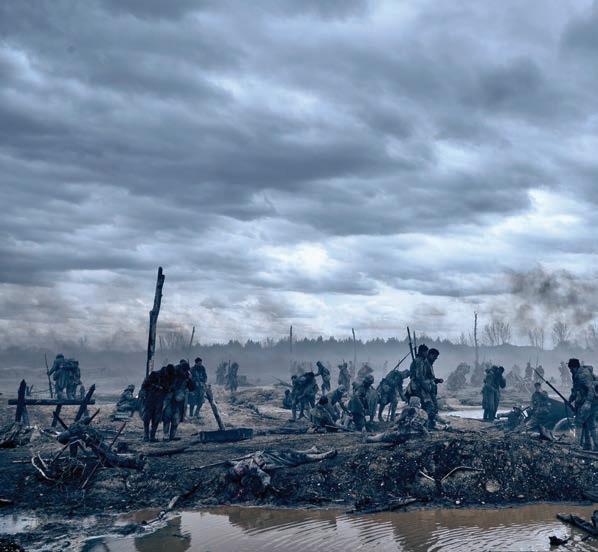
Argentina, 1985 again? “For me,” he says, “the big reason was to go back to the German novel and make a German film out of it by bringing what we have, the things that make German, to this movie—things that no English or American filmmaker can theoretically do, because they don’t have that heritage.”
England, he points out, was attacked during the war and so defended itself, and then America joined in and liberated Europe from fascism. “There’s a sense of pride about that,” he says. “It’s about honor. There’s something to commemorate. But in Germany, there’s nothing like that. There’s just shame and guilt, and terror, and responsibility towards what happened. And that makes a very different film, in my opinion.” ★
A A ON/NET LI /TALE O
All Quiet on the Western Front
FT FOCUS ON: INTERNATIONAL
Farha














FRESH FACE
By Destiny Jackson WHO Frankie Corio Age:
12
Hometown: Livingston, Scotland
WHAT
In her debut role in Charlotte Wells’ Aftersun, Frankie Corio is Sophie, the
pre-teen daughter to Paul Mescal’s Calum. On a Turkish vacation, the emo tional ebb and flow of their relationship takes center-stage. As a young, single father, Calum is wracked by a kind of existential pain that includes the loss of his own dreams. Bogged down by his personal demons and unre solved traumas, he is at turns both a loving and distant father. While Sophie struggles to understand her father’s fluctuating moods, her love emerges through the lens of the camera she constantly trains on him.

In the absence of a full script from Wells, the decision to play Sophie as someone who was equal parts self-assured and playfully mischievous was Corio’s idea. “I don’t think she told me much about the character because she wanted me to see how I would play it, rather than how it was meant to be played.” Corio says. “But obviously, if I was doing something wrong, in a different way, she’d tell me how she thinks it should be shown. She never really told me much about Sophie or what she’s acting like. I added her humor and her hyperness and her excitement because without that, I think she’d be pretty boring.”

WHY
Before landing the part, Corio had no acting experi ence at all. It was her mother that ushered her into it, after seeing a casting call for the movie on her Facebook page. “She sent a little photo of me in and then [the agency] kept asking for videos and weird requests.” Corio recalls. “They wanted me to send a video of me whispering and then climbing a tree, and that was good because I was in a more natural state. Then, Lucy Pardee, the casting director, called us when we did get the part. But I had already met her two times in Glasgow because, before I got the call, I had two auditions when I got to see Charlie [Wells].”
Not long after booking the role, Corio was officially bitten by the acting bug. “I was excited and happy; not nervous or confused. I was just ready for it. I wanted to be an actor then.”
Corio had two weeks with Mescal before filming to cultivate that palpable father-daughter bond. From shooting pool together at the billiards table, showing off swimming techniques, and even being coerced into listening to Corio’s favorite singer, Olivia Rodrigo, Mes cal did it all. Did the experience feel like he could be
her real parent in a way? “Yes,” Corio gushes, “Paul is amazing. He is funny, and so nice and silly when he is off camera. But the minute that he steps on set, he has his game mode on and he gets to acting. He’s my best friend. Sorry, Ma.”
WHEN & WHERE
The future shines bright for Corio. Although it’s too soon to share all the details about what’s coming next, Corio does confirm that she will be play a character named Emily in Colm McCarthy’s supernatural thriller The Bagman starring Sam Claflin. As for the future, she says, “I want to do something where there are lots of kids in it, so I can make best friends with people like on Stranger Things. I’m inspired by Mason Thames, Mad eleine McGraw, Millie Bobby Brown, Sadie Sink, and all the Stranger Things cast.” ★
DEADLINE.COM/ AWARDSLINE FT FRESH FACE
A /COURTESY EVERETT COLLECTION
Left: Frankie Corio in Aftersun ; below: Corio and Paul Mescal.















14 years after they last shared the screen in Martin McDonagh’s In Bruges, Colin Farrell and Brendan Gleeson reunite for the writerdirector’s latest, The Banshees of Inisherin I they tell Joe Utichi
 Photos by Josh Telles
Photos by Josh Telles
DEADLINE.COM/ AWARDSLINE
On Inisherin
a young woman wrestles with her conscience as she tries to decide between starting her own life on the mainland or remaining in service to her beloved brother in the home they share. On Inisherin, a young man struggles to escape the abusive hand of his own father, shunned as he is by the rest of the small community. On Inisherin, the distant thunder of civil war on the mainland plays frequently in the background, constantly threatening to inch ever closer to the island’s residents. And yet… And yet, on Inisherin, as a half-dozen more dramatic stories
are playing, the banshees are instead wailing a song about two friends, Pádraic Súilleabháin and Colm Doherty, who’ve had a mysterious falling out. For Colm, the reasons are clear—he wants to create music and put something new and original into the world, and he doesn’t want to spend any more of his days downing pints at the pub while Pádraic discusses his miniature donkey’s ablutions. But few others on the island can understand the brutality with which he swings the ax on his longestlasting friendship. And so, even with more important things going on, it’s this trivial preoccupation with which the island of Inisherin is obsessed.

6 DEADLINE.COM/ AWARDSLINE
JONATHAN HESSION/SEARCHLI HT PICTURES/
TH CENTURY STUDIOS
Brendan Gleeson, left, and Colin Farrell in The Banshees of Inisherin














It began with an ending. As the Covid
pandemic
loomed, Martin McDonagh found himself in a dark place of his own, struggling to process a failed relationship. And as the writer and director of Three Billboards Outside Ebbing, Missouri and In Bruges is wont to do, processing it meant picking up a pen. “I think I was tapping into being in that sad sort of breakup place,” he says now. “I was getting sad on a daily basis and writing this was like a side of joy.”

The sadness found a release as he came up with the denizens A I I
the trauma of two friends undergoing their own conscious . E O . A notes. “I think that was probably one of the things that helped bring me out of it.”
through his own issues so directly with his work, but it seemed McDonagh found himself back on the small, remote island chain on which he’d set two plays, The Cripple of Inishmaan in 1996 and The Lieutenant of Inishmore in 2001.

“That feeling that Colm has, that he might be wasting his time, was a thought I had a lot during the pandemic,” McDonagh says.
of an island community dealing with existential issues couldn’t help but be informed by the way life was readjusting around him. “I think we all thought about how much time we were wasting, and what we might want to do afterwards. Do you just keep going along like you did before, or do you rush to make up time?”
I incorporate the pandemic into their storytelling, The Banshees
of Inisherin the world is grappling with big, seemingly insurmountable obstacles that our own much more petty and personal complaints appear to take on a disproportionately seismic importance. So, despite the story taking place M M D tiff, and not on the larger issues going on around them.
McDonagh borrowed the title from a play he’d written years earlier but had been too embarrassed to publish. The Banshees of Inisheer would A I . .
The Banshees of Inisherin as a title, as much as to include a reference to it in the script itself. M D knew he wanted to bring a cinematic scale to the landscapes, opening the I on the extant isle of Inisheer felt disingenuous. So, Inisherin was born from
DEADLINE.COM/ AWARDSLINE JONATHAN HESSION/SEARCHLI HT PICTURES/
TH CENTURY STUDIOS
Gleeson as Colm Doherty with Farrell as Pádraic Súilleabháin
Director Martin McDonagh on set















I WANTED TO WORK WITH THE BOYS AGAIN, BUT THERE WAS A TREPIDATION THERE TOO, NOT TO DO ANYTHING LESSER THAN IN BRUGES.
Martin McDonagh

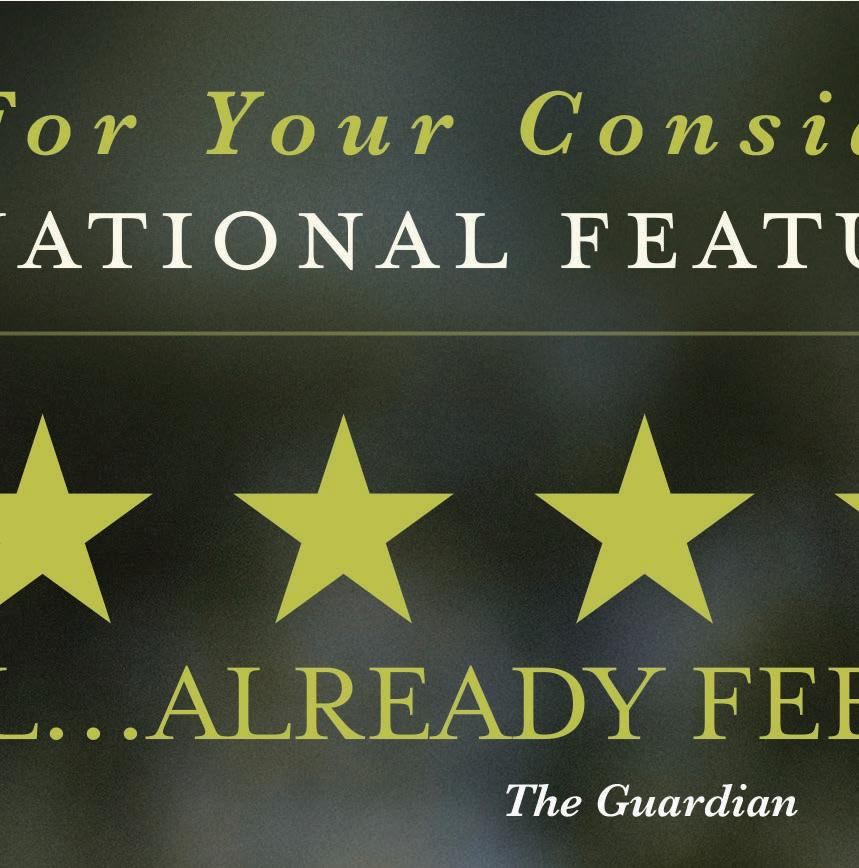












the trilogy. “I guess in my heart it had to feel like it could be one of the Aran Islands,” he notes.
But the banshees of the title might not be quite so elusive. In Irish folklore, banshees are female spirits whose shriek is a portent of death, and McDonagh’s script slides in one of his own in the form of Mrs. McCormick, played with comical wickedness by Sheila Flitton. It’s not that Mrs. McCormick is a literal banshee, but she does seem to appear just when she’s not wanted. And as with the nature of that mythology around the outskirts of his screenplay, McDonagh affords himself the opportunity to stretch the extremities of his story to the heights . seems destined to come to Inisherin. But in the middle of it all, truths are told and deep heartbreak must be processed.
decision to focus his narrative on Pádraic and Colm: he wanted to reunite Colin Farrell and Brendan Gleeson, with whom he’d collaborated on 2008’s In Bruges . Though the two actors had met and discussed other projects, it was on In Bruges , with McDonagh’s writing to hand, that they became an indelible on-screen pairing. And it had been 14 years since they had shot


the film; 14 years since they last worked together.
W M D . I wanted to work with the boys again, but there was a trepidation there too, not to do anything lesser than Bruges. In the years since it had come out, we’ve all had people come up to us to say how much they liked it. You don’t want to disappoint those people, at the same time as you don’t want to replicate exactly what you did before. If In Bruges is a love story between their characters, this is the end of that. The end of love.”
In that way, Banshees is, suggests Farrell, “In Bruges 10 years later, 90 years before.”
The actor jokes that reading the script was a slog. “It kind of comes alive on camera, but it’s tough to get through as a read,” he laughs. But, in fact, he did have a real hesitation when he picked it up. “It wasn’t a nervousness of, ‘I wonder if Martin is going to send me a good script,’ because that’s fucking ridiculous. But because I love him so much, I did have a fear of, ‘What if I don’t like it?’ There’s a part of me, the fucking eejit that I am, that not want to do it.”
He needn’t have worried. “I just fucking adored it. I had a feeling it was going to be sad, I had a feeling it was going to be violent, I had a feeling it was going to be funny and disturbing and provoking and all those things. And it was, and I was incredibly moved.”
“This is the stuff you wait for,” says Gleeson of his own reaction to the script. “The Colm character, his journey became so apparent, but it was such a challenge. When the script came in… It reminded me of when my boys were into Harry Potter. They used to buy two books, because they .
whole thing was done. And with Martin’s scripts, that’s what happens to me. I just disappear. You go into his world and it’s always a thrill.”
Even as Inisherin toplines the very real heartbreak of a friendship lost, those peripheral stories happening on the island are given no less care and attention. “Everywhere you look there’s the truth of the human struggle,” says Farrell. He points to Kerry Condon’s touching portrayal of Pádraic’s sister, Siobhan, who might be the only one on Inisherin talking sense. And
being the person she wants to be. Farrell also points to Barry Keoghan’s turn as Dominic, whose abuse by his own father, the local policeman,

There was another desire driving McDonagh’s
DEADLINE.COM/ AWARDSLINE
JIN
A EN NI/ INHUA VIA
ETTY
A ES/JONATHAN HESSION/SEARCHLI HT PICTURES/
TH CENTURY STUDIOS
Left: Graham Broadbent, McDonagh, Kerry Condon, Farrell and Gleeson in Venice. Below, from left: Condon as Siobhan; Pádraic with his pet donkey Jenny.














becomes apparent as we spend more time in his company. On Inisherin, the suffering is as harsh and unforgiving as the
Martin McDonagh’s scripts, the stakes are raised with every passing scene.

M D . I . A C In Bruges. I did wonder
. . Martin McDonagh hadn’t necessarily designed the script this way, but as the production of The Banshees of Inisherin set up shop on A I I A L C D W . I M D .
JONATHAN HESSION/SEARCHLI HT PICTURES/ TH

. A that on the day, I get it. I’m going to go over and say, ‘Can you not just act, and any chance of a hug?’ I’m not that needy. But I In Bruges of mad, deep respect and affection and . . I . I on the same hymn sheet, from their various perspectives.” I off in a corner, and days when you’d be off . S to be on your own…” . . I . I . I was just wondering. Because I knew where he was going to go. I at the script, and how it was a . A I . I . A that you don’t have to do that your character.” I . I . that process, and they need that DEADLINE.COM/ AWARDSLINE
CENTURY STUDIOS
Farrell with Barry Keoghan as Dominic Kearney
Gleeson and Farrell with Pat Shortt as publican Jonjo Devine
















6 DEADLINE.COM/ AWARDSLINE
JONATHAN HESSION/SEARCHLI HT PICTURES/
TH CENTURY STUDIOS
Top: Pádraic and Siobhan discuss Colm over tea; bottom: Colm takes an outdoor table to avoid his former pal.












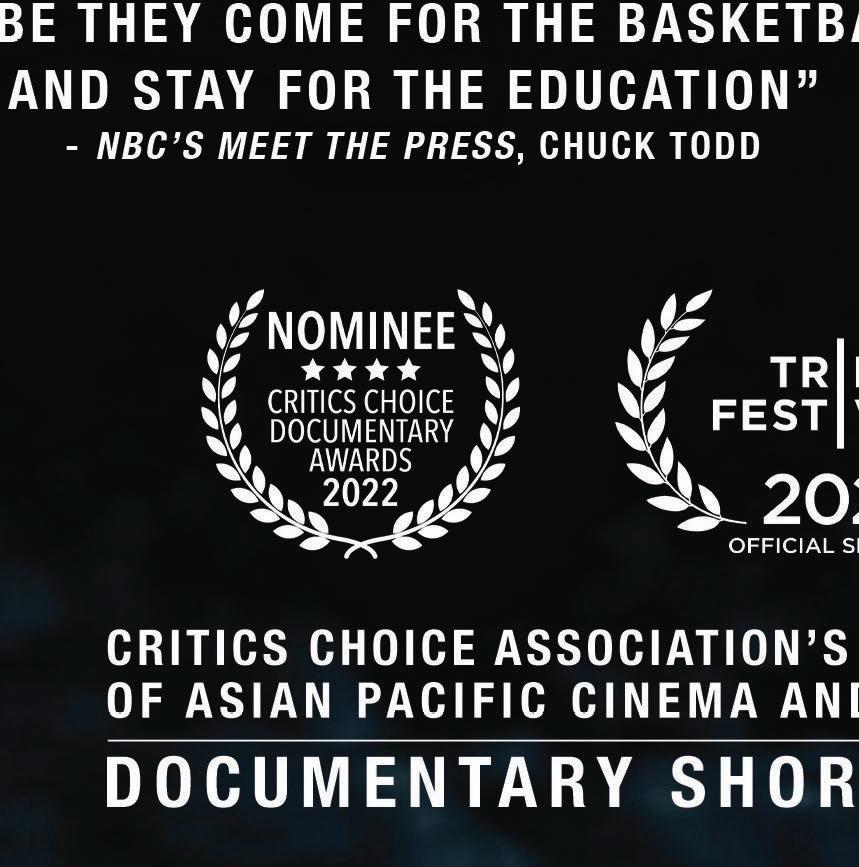

to the saloon where they’re squabbling.”
“I had to stop myself from ordering a sarsaparilla when I got to the bar,” laughs Gleeson.

“We leaned into that kind of John Ford style of shooting through doorways,” McDonagh adds. “A Searchers vibe was .
And while Ireland has a reputation for verdant green landscapes dulled by days, weeks and months of rain and spell in the late summer of 2021 meant those colors took on added vibrancy. So, as dark as the story becomes at times, it is nevertheless awash with saturated visuals. “There was a book that was released recently that included retro-colored images of the west of Ireland at the turn of the 20th Century,” says Farrell. “And it was extraordinary seeing splashes of color. Everything was so vivid, so bright, and so optimistic. It was all
the colors that are represented in nature.”
Banshees of drab, Irish weather and equally monochromatic lives. “Nothing was M . E had a reference point that was grounded in truth. That’s what allows for the heightened aspect of the language and the performance and the story. Allegory begins to creep in a little bit, and the power of allegory is that it allows us to feel further from the story we’re telling, but then over time you go, ‘This thing that seems a little bit farfetched is actually… oh, shite, it’s about me.”
“There’s a lot of truth in the room, isn’t there?” asks Gleeson rhetorically. “It reminds me of something Martin said to me years ago, which is that all his stuff, it’s all about love, really, even if it doesn’t always look that way.”
“Absolutely,” says Farrell. “The work I’ve read of his, and all the time I’ve spent with him, I’ve never been able to detect any hint of subliminal darkness or a sneaky agenda getting through. For all the hilarity, all the awkwardness, all the fucking dynamism of the macabre he presents in the writing, at its core there is, honest to God, a very deep sweetness and tenderness, and a real consideration for human beings, and why we are the way we are.”
The discussions about what it all meant started with rehearsal, a process McDonagh insists upon, harking back to his roots in the theater. “We rehearsed and ironed out certain things,” says Gleeson. “We came up with various different backstories within that, and to what extent there was a closeness between the various characters.”
“It put out all of the questions there, of why Colm was being so harsh in M D . I or is that the only move he can see that will work? And those discussions imbued each later scene with different dynamics and different tones, so that it wasn’t one-note. It wasn’t a guy just saying harshly, ‘I don’t want to be friends with you.’ It was so much more subtle than that, and it almost got more subtle as it went on.”
McDonagh had experienced the elevation of his material in this way when he charged Gleeson and Farrell with their characters in InBruges. “On the page, In Bruges seemed like a just a funny genre story,” he says. “But .
 Colm and Pádraic debate their broken friendship
Farrell and Gleeson at the London Film Festival in October
JE
SPICER/ ETTY
A ES OR WALT DISNEY STUDIOS
OTION PICTURES U /
JONATHAN HESSION/SEARCHLI HT PICTURES/
TH CENTURY STUDIOS
Colm and Pádraic debate their broken friendship
Farrell and Gleeson at the London Film Festival in October
JE
SPICER/ ETTY
A ES OR WALT DISNEY STUDIOS
OTION PICTURES U /
JONATHAN HESSION/SEARCHLI HT PICTURES/
TH CENTURY STUDIOS




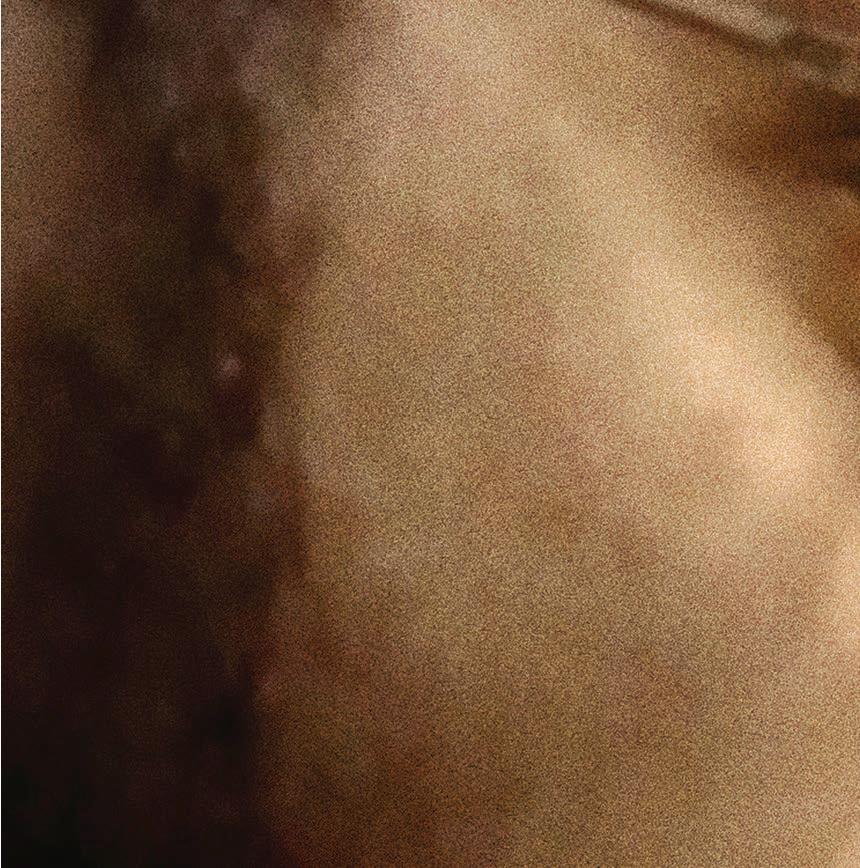
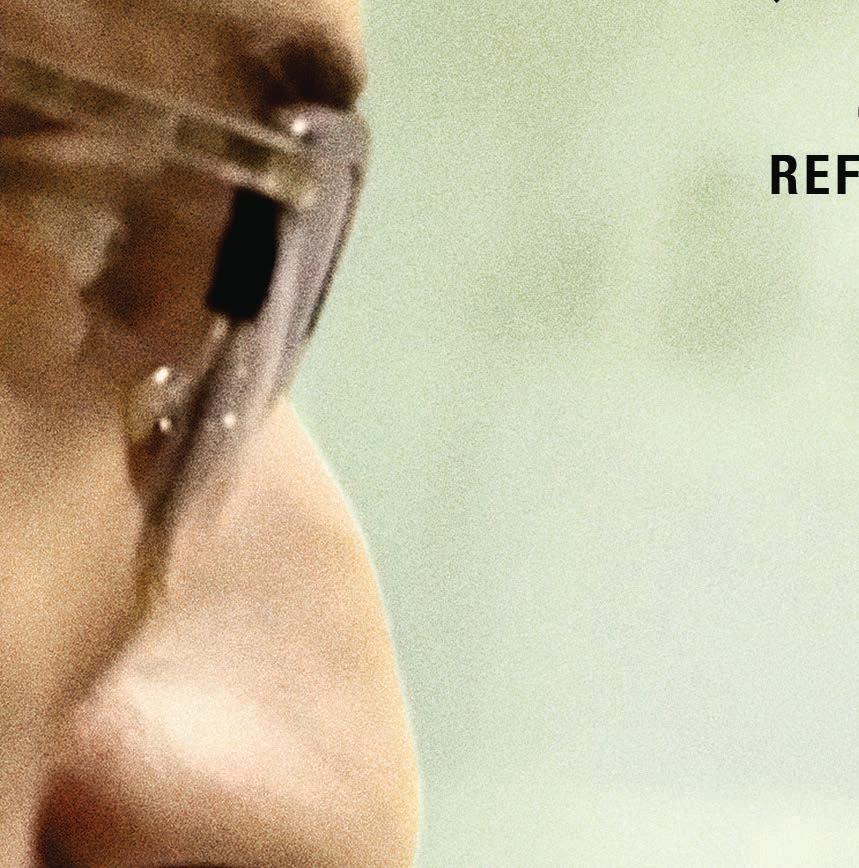









PEOPLE DO TERRIBLE THINGS TO THEMSELVES ALL THE TIME. THE HUMAN EXPERIENCE IS OVERWHELMING FOR A LOT OF US. YOU’VE EITHER GOT TO BE FULLY PLUGGED IN OR PLUGGED THE FUCK OUT.
Colin Farrell











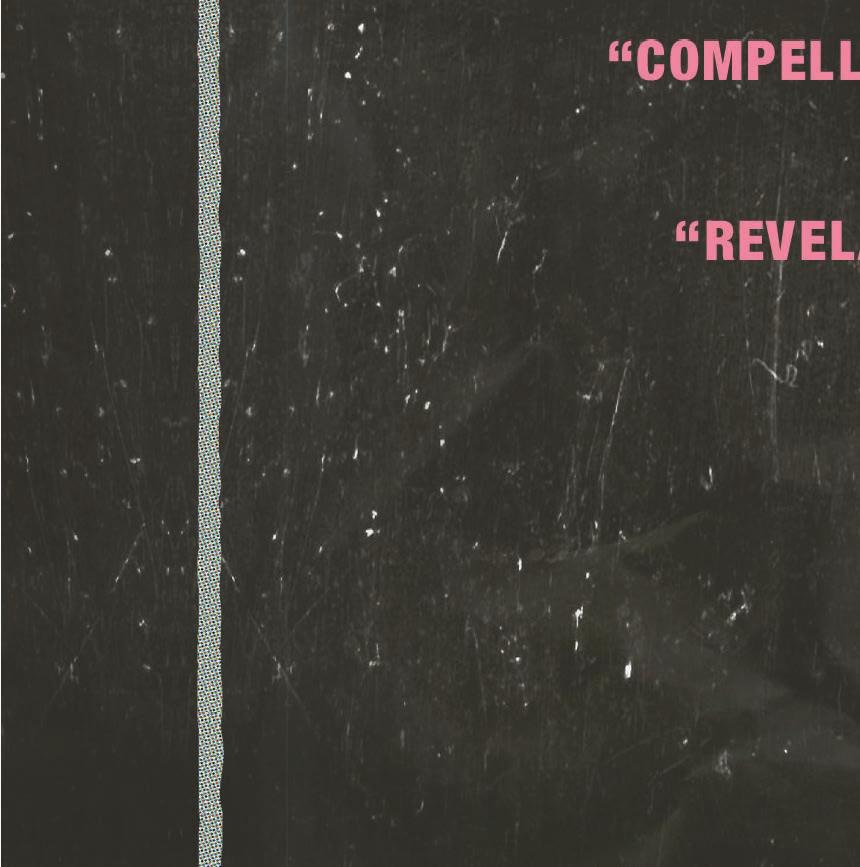
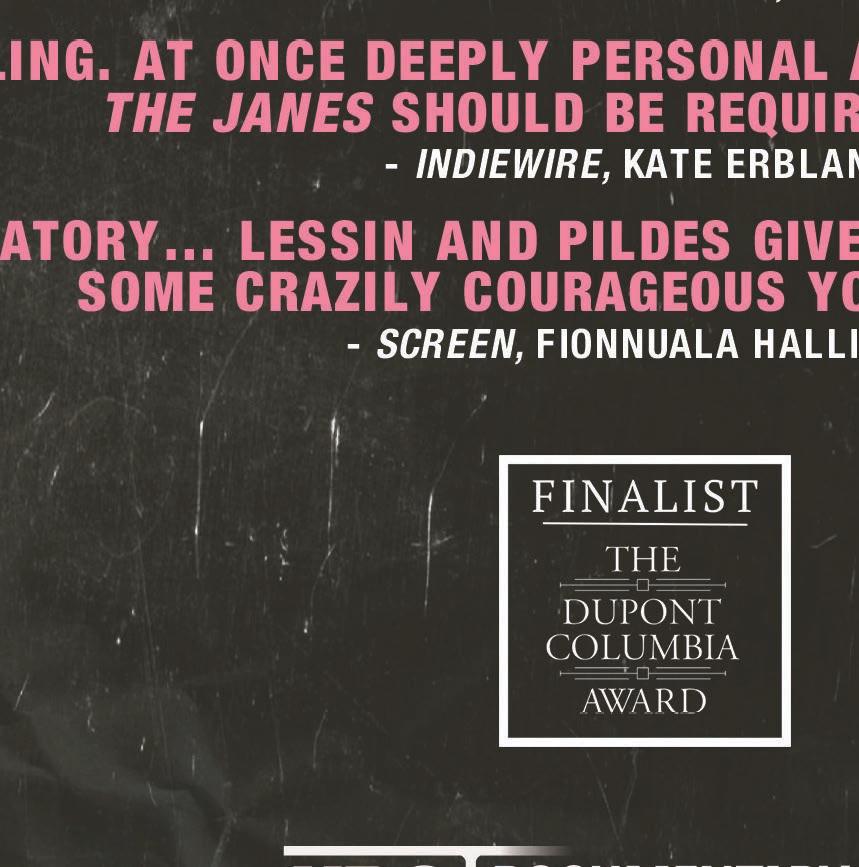

. I . . I M I . . W I I I O I M D C . S . A . S . . I . . . . . I I . I I . I . M I . M I W I . . I The Banshees of Inisherin . . . S . . C


JONATHAN

DEADLINE.COM/ AWARDSLINE
As the tension between Colm and Pádraic ramps up, C . . D C I I M D . I M D . M S . . . . . I . S I C . . . I HESSION/SEARCHLI
HT PICTURES/ TH CENTURY STUDIOS
Above, from left: Colm plays his beloved fiddle; Pádraic at home with his animals; left: a bereft Pádraic visits Colm's cottage.






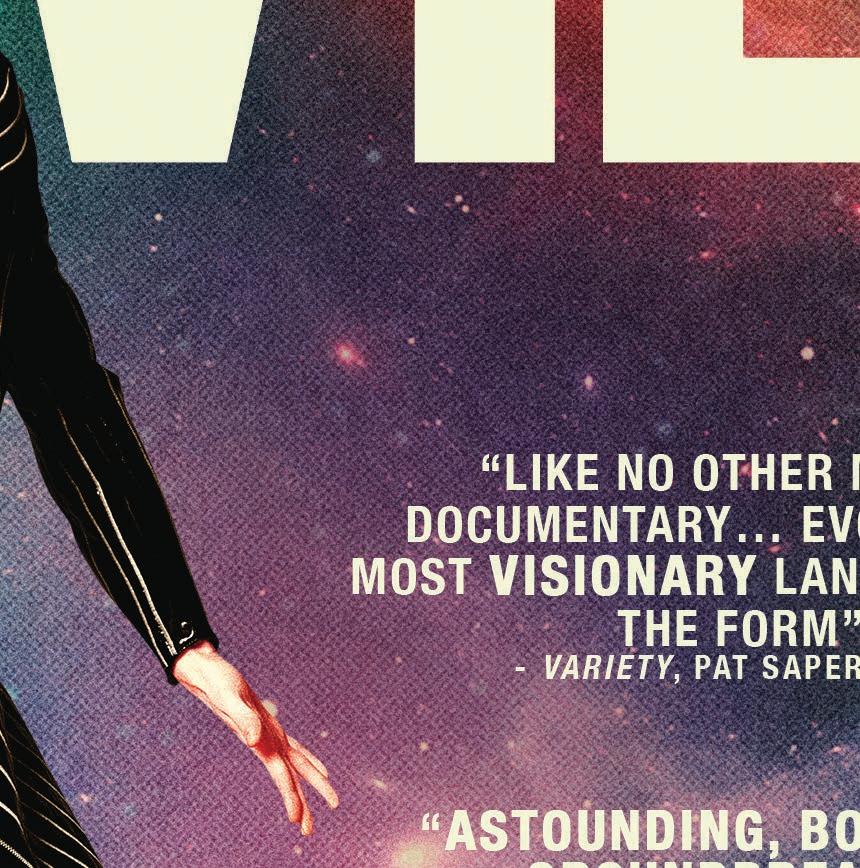








I PREFER WORKING WITH PEOPLE THAT STRIVE TO DO SOMETHING ON THE SAME HYMN SHEET, FROM THEIR VARIOUS PERSPECTIVES.
Brendan Gleeson
A STORY OF LOVE AND DETERMINATION TO STAY TOGETHER

GUERRILLA HABEAS
DIRECTEDBY: BETSY HERSHEY & EMMA WALL


FOR YOUR CONSIDERATION
BEST DOCUMENTARY SHORT SUBJECT
was that Pádraic and his sister came to live together with no sign of their parents on the island. The question of what happened to them provided a key to Pádraic’s inability to deal with anything beyond the trivial, and Siobhan’s irrepressible need to take care of her naïve brother.


the nature and the pain of loneliness and isolation, which is something he’s never experienced before,” says Farrell. “He’s so dismissive, like, ‘Lonely? What do you mean lonely? What are you talking about?’ But it’s visited on him by everyone
. R I C can understand why, but for Pádraic it’s absolutely crushing. Everyone pays a price for what they need.”
In the end, each of the characters we meet
on I
that we acknowledge and some that we don’t; some even that we can’t. Gleeson asks McDonagh how he knows, instinctively, when a particular line feels off. “You’re very exacting with what you write,” he says. “You know when you’re unhappy with a line. A I know how to be happy or not with a line is because it has to feel true to a part of yourself.”
I M D . I character, if it’s going well, and then each line has to be true to that person more than me, necessarily.”
“Does it ever get uncomfortable, writing?” asks Farrell, making this reporter’s job even easier. “Does the emotion that I I feel as powerful to you as it does to us?”
I M D
Dominic, who makes an awkward attempt at one point in the story to romance Siobhan, only for his advances to be gently, but . W D . I with me, so many times. Or they’ve fallen out of love, or whatever. I . .
I . of obtuse at the way you come around at different things, but every so often you hit it straight between the eyes with a line like that.”
“Well,” says McDonagh, “especially with a character like Dominic, it’s like a sea of crazy stuff and then, boom, just a moment that’s crystal clear. But all of the craziness is just a disguise for that moment to be there, and sometimes you have a whole play or a script that’s leading up to a moment like that.”
He recalls a scene in In Bruges, where Farrell’s character regards himself in a mirror just before going on a date. He’s fussing, and awkward, and the nervousness of a trained assassin desperate to impress a girl is both funny and disarming in equal measure.
Farrell remembers the moment, and being given a particular direction .
“There was something about malleability and the impermanence of the human body, and of not trusting any part of it,” Farrell says. “He can touch it, but he can’t feel it.” He remembers that moment saying everything R Bruges, without a line of dialogue spoken. He remembers McDonagh’s certainty about it.
“You find those moments, Martin, with a fearlessness,” says Gleeson. A . I
Banshees for the second time and thinking about how wars start, because you’ve got the civil war going on over there, but then this war between these . I can do is work with a director whose sensibility is diametrically opposed to your own, where your instincts just can’t . I impossible, then.”
R M
D . E
than working with a dickhead?”
“Absolutely, more than a dickhead and more than an incompetent, because you can kind of fucking ignore them.”
A to the arsehole behavior sometimes where it’s not indicative of the core.”
I going entirely against your instinct, and entirely against your conception of the character and what motivates them… that’s an impossible situation.”
Siobhan resists Dominic's advances
6 DEADLINE.COM/ AWARDSLINE SEARCHLI HT PICTURES/ TH
Colm stares out to sea
CENTURY STUDIOS
















DEADLINE.COM/ AWARDSLINE
JONATHAN HESSION/SEARCHLI HT PICTURES/
TH CENTURY STUDIOS
Top and bottom: Martin McDonagh shares laughs on set with his two leads.














As
gather
breakfast
talk

this latest collaboration, they are fresh from its London premiere. Their bags are packed for a whistlestop visit to Dublin where The Banshees of Inisherin will play to a hometown crowd for the . A . M D I

Gleeson confesses to feeling especially sensitive to the . M D . I . “That kind of shit was banging around in my head last night, . extraordinary. The idea that people would feel in any way . I . M . I I I . I . Their conversations, in prep, production, and now as the film is being unspooled around the world, come easily. There are, they say, always more layers in need of unpeeling. They . . S I . ★


they
for
to
about
From top: Gleeson and Farrell in In Bruges ; McDonagh and Farrell on the set of Seven Psychopaths ; McDonagh with Frances McDormand for Three Billboards Outside Ebbing, Missouri ; left: Farrell, McDonagh and Gleeson in London.
ETTY
A ES/CHUC
LOTNIC /C S
IL S/ ERRIC
ORTON/
TH CENTURY O /
COURTESY EVERETT COLLECTION/ OCUS
EATURES








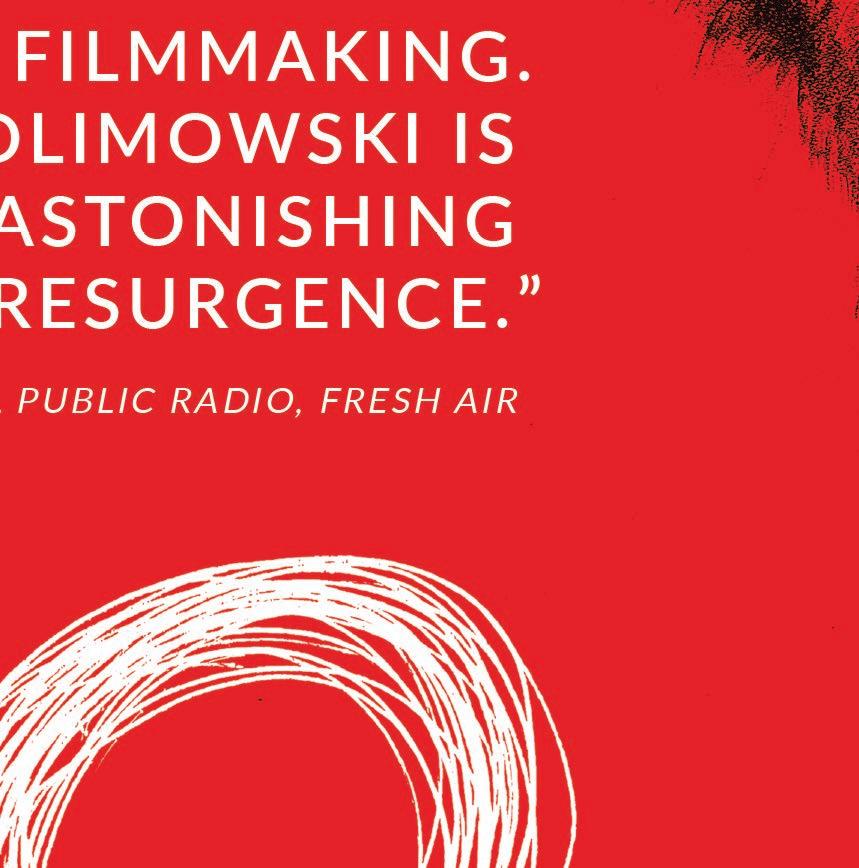




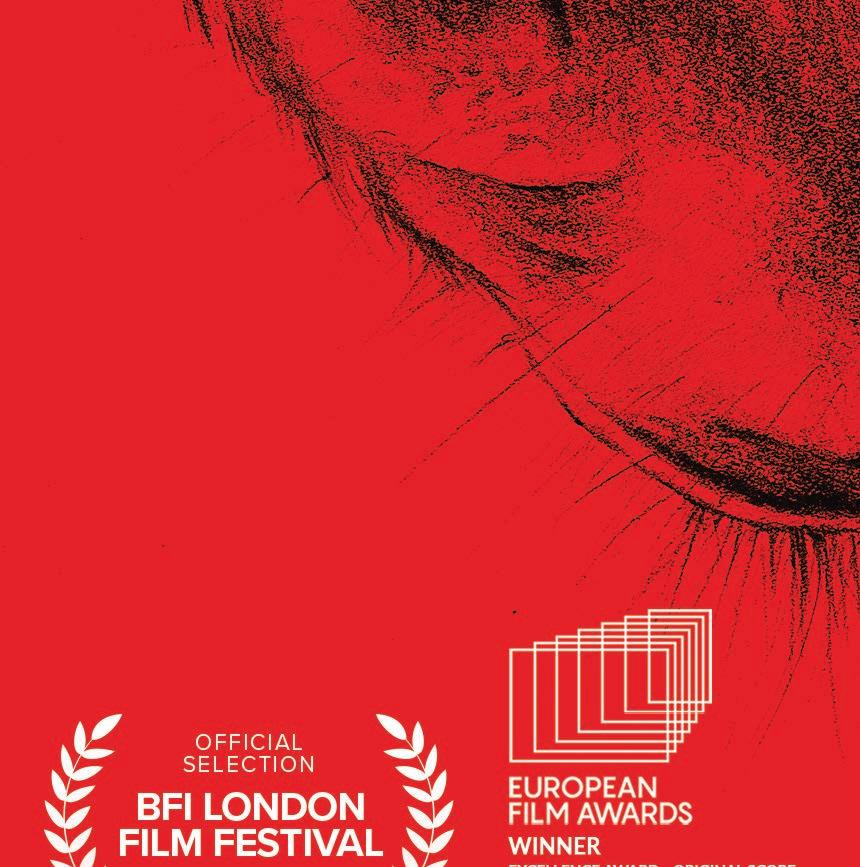 BAZ BAMIGBOYE
BAZ BAMIGBOYE
With all that you’ve been through it taken on you?
It’s multi-fold, so there’s before, during, and a er. The before was the initial reading of Death of Inno cence, Mamie’s memoir, and that was about gauging what the weight would feel like. And then there’s the during. I felt really covered because
I know people in every department. I know people from Atlanta who I’ve worked with for years. They’re in wardrobe; there’s my dialect coach; people in every department like background or in location. So, I knew that it’s a community car ing for me through it. And then the a er, that’s just, well, you’re wrecked. I’m completely and utterly wrecked, and I had to do the ulti mate rehabilitative work.

Which is what?
Which is therapy. It’s physical, traditional therapy, one-on-one. Physical therapy, acupuncture, chiropractor. Just not working for the bulk of the year. Journaling, and processing what I went through on a psychic and a spiritual level and stepping away from anything else. Being my son’s mother and having to make those negotiations with him because I’m under the residual e ects of that experience. And trying to rear him with that same will that she [Mamie] was trying to rear Emmett. Not muting the fullness of him, and being honest with my son about that, “Yes, I’ve had this experience.” I tell him: “I want to support you to have the greatest amount of freedom that you possibly can, regardless of the things that I have chosen to undergo or that have cosmically come to me.”
It’s a negotiation on all those fronts. I feel like I’m in a good place here, a year out from having done that. But then there is the sharing, which I think this is probably the harder part. I would say that this is the bigger responsibility, trying to assuage people’s fears that this is something that they should be lurching from.
That moment where Mamie’s with the open casket and the cousin from Mississippi comes and she
DEADLINE.COM/ AWARDSLINE LYNSEY WEATHERSPOON/ORION PICTURES The star of Till reveals the emotional cost of humanizing a civil rights legend
★ ★ ★ ★ ★ Danielle DEADWYLER On and off screen, Danielle Deadwyler implores us to not “look away”. C C A Mamie Till-Mobley, mother of 14-year-old Emmett Louis Till, who was abducted, then lynched by white supremacists in Mississippi A . W C M . W D . W .
BY
The Best Of 2022 | Actresses






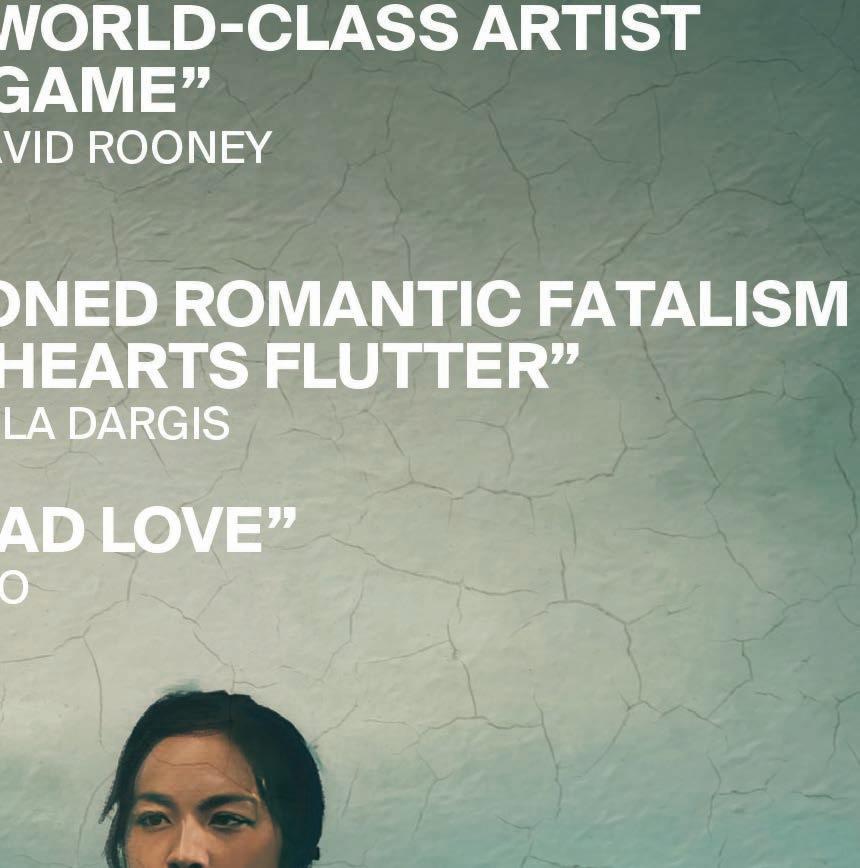







doesn’t want to look, and Mamie just says… “We have to look.”
Indeed. We have to look. That’s the message, isn’t it really? We have to look, we have to talk about it. We have to think about it. Not to depress the hell out of us, but because as I see it, personally, as a visitor to the United States, not much has changed.
And there’s great fury in combating the truth of those experiences. Who are we? We can’t complain about it and then turn around and say: “We don’t want to see it either.” They’ve just said they don’t want to see it. Now you’re saying you don’t want to see it? That’s two sides of the same coin. There’s a resistance to actually releasing. There’s a great global grief that needs to be had. And I think that when people come out of the lm—or at least the people I’ve interfaced with—they feel a great release, a great climax of pent-up mourning.
Is that something all people can feel, or is it just Black people? Oh no, this is everybody. Because every parent is having a reaction, a visceral reaction. White mothers, Black mothers, Asian mothers and Latino mothers. I’ve interfaced with them all, and they’ve all come. Everyone fears that. And we’ve just been in this moment of an extended moment. The pandemic is not over but it’s “over”. We’re all in that. We’ve missed someone’s funeral, or this person was ill because they didn’t get something… There’s a lot of loss. Loss has many faces, many masks. And this is all couched in that same thing. You can for sure mourn what we are witnessing on the screen and the truth of that history. But it’s all deeply connected to what’s happened now. What are the residual e ects of racism and white terrorism in this country? And why are certain people getting medical support and other people are not? You can connect it to any theme of human rights in this country. So, yes, it’s there.
You didn’t come out of your mother’s womb saying, “I want to be an actor,” necessarily, but when you were young, you knew it was something you wanted to explore? Yes, I did. Well, my mother corrected me. I’ve been telling people when I was three or four, she saw me dancing in front of the TV to Soul Train She said, “Wow, Danielle, it was two. I should know.” I’m like “OK, you’re right. Forgive me.” And that, I think, was the beginning.
She just put me in everything. Dance was the rst medium, which was a natural segue to theater. Those two things are o en combined. Movement and dance are just like, Kent Gash [artistic director of The Acting Company] told me this, intermediate language. It doesn’t need translation. And I understand that. It’s always about the physical for me, it begins there. And that just led me into all of the other mediums that I’ve been a part of.
My sister, she’s a screenwriter and playwright. So, I’ve kind of been led down the artistic pipeline through her, but forging my own in other ways; writing and poetry or focusing on being an actor as opposed to her. And my mom’s just supported all of it. It’s just always been there. And even though I didn’t major in theater or performance studies in any capacity, it’s always been sort of my life. So, the academic, which was driven by history, American studies, creative writing, investigations, I knew that art had
to be a part of that. The art and the academics have to run parallel.
Was that something that your parents insisted on?
I think it was me, and de nitely in conversation with my sister. My parents didn’t know what that was. My parents had been traditional workers. My mom worked in legal administration and my dad was in a railroad as a supervisor and in an executive position for over 25-30 years. So, my dad’s retired and my mom, she should retire.
To portray Mamie what were the physical aspects you had to build?
I had to be much more disciplined and rigorous. Thinking about 1950s beauty, there’s an elegance. There’s an erectness. There’s great pride. There’s no room to be slovenly. That’s not Black life. At least not with someone of her in uence and her family’s in uence. We’re deep church-going people and proud, prideful people. Black life in Chicago or Mississippi for that matter, you’re dressing up for the public, you’re presenting well. And so that physicality calls for something. The string is pulled tight, all the way up to heaven, as they call it. You stretch your body up to the skies. [Costume designer] Marci Rodgers’ wardrobe calls for you to do that.

What else was involved in the construction of her?
Well, I think for me it was setting the
tone of the environment. That’s getting into the headspace of cultural, social dynamic, understanding the in uence of the family. Her mother moved from Mississippi to Chicago and therein became a kind of reception for people who were moving there a er. So, she’s this kind of person interfacing with everyone who’s there already and those who come. And sharing resources to a community. So, it’s a person of in uence, a family of in uence. And then painting the picture of what that looks like in 1950s Chicago. What their community was, how far their reach is; their in uencing the church and then what that does in connection to Mississippi.
So, I was doing a political, and social and cultural historical diving. But everything wasn’t totally necessary. I did a lot for my own sake. All of the violence that was taking place before she [Mamie] got there. What kind of restorm he [Emmett] walked into that precipitated that kind of horror. Painting that full picture and thinking about womanhood in comparison to Carolyn Bryant [the white woman who claimed Emmett had assaulted her]. Those were the kind of things we were getting into.
What were the discussions that you and Chinonye Chukwu had before the cameras rolled? Was there something that really stuck? Making her human. We always see a gure who’s pedestal-ized, who is this great mother of service for the civil rights movement. But they’re human beings making choices, who are awed, and who have a growth period. That whole experience, the rest of her life, is this massive, beautiful growth into mothering the world. And so, it was really important for us to talk about the rage that rightly wasn’t able to be witnessed.
She’s negotiating. What does it mean to go through this with family? Who is she ghting for at di erent points of this terrible, yet joyful, e ort at legacy and justice? Those are our intentions. ★
DEADLINE.COM/ AWARDSLINE LYNSEY WEATHERSPOON/UNITED ARTISTS RELEASIN /COURTESY EVERETT COLLECTION
Jalyn Hall and Danielle Deadwyler in Till







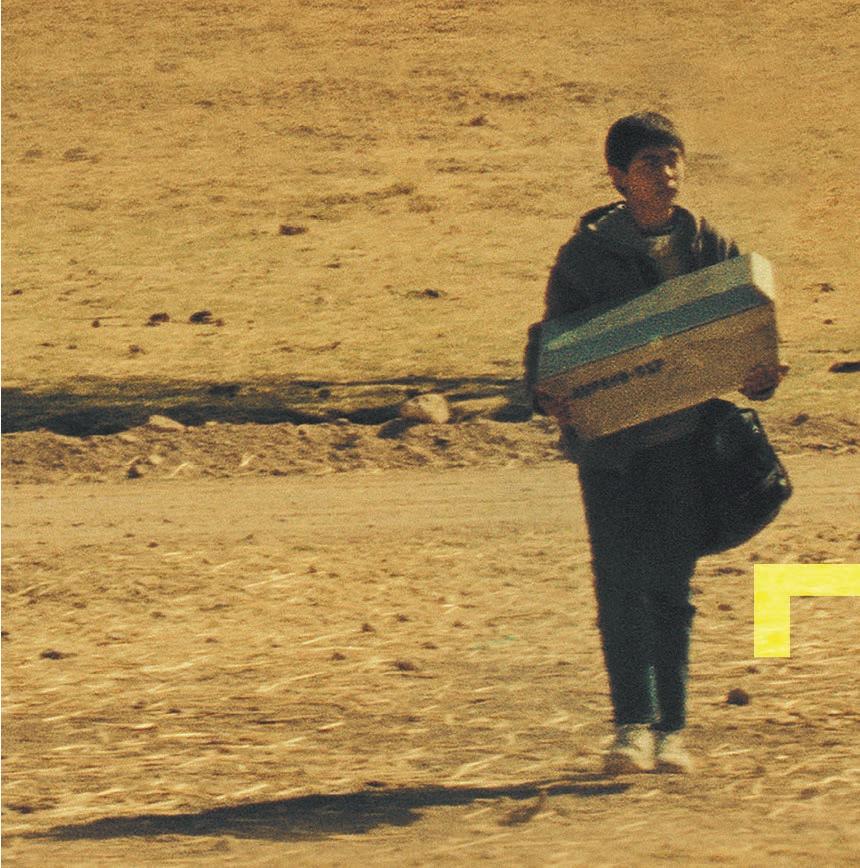





 STEVIE WONG
STEVIE WONG
The Whale is such a rarity these days as chamber pieces with a small cast don’t make it to the big screen anymore.
You’re absolutely right. It’s really rare to see a movie with such a small, intimate cast. I think nowadays, maybe it’s for nancial reasons, movies seem to be really sprawling, packing as many famous people as you can into one movie. So, to have something like The Whale which kept the parameters of the original play, I’m just so glad that they didn’t open it up to a bigger world and bring in 20 di erent extra characters.
Also coming out of the Covid lockdown, the industry was just getting back up on its feet. To get something like The Whale that is so ambitious in terms of the story, with all of these characters who were so rich, it just felt like a miracle really.
As my rst job a er the industry got back up, this was just incredible.
Because everyone had to take time off during lockdown, did you have to relearn how to approach acting again?
I think a lot of actors will say this, they feel like with every new job, they feel like they don’t know how to act. And that was de nitely true for me. In my personal life, I also had my rst child during that time. I found out I was pregnant right as lockdown happened. And so, I was pregnant, had my baby, and I was totally happy for it, because I felt like I wasn’t missing out on anything. And it was actually a really beautiful time for me, even though there was all of this craziness going on in the world.
I wasn’t really looking to get back to work immediately, even when the industry got back up. I had waited a long time to be a parent, and I just really wanted to do just that. But then I got the script for The Whale
Were you familiar with Samuel D. Hunter’s award-winning play of the same name?
Unfortunately, one of the things about living in LA is that you don’t keep up with what’s going on in theater in New York. And so, I did not know who Sam Hunter was or was familiar with the play, it just never came onto my radar. I read it and I just knew that it would require so much, and I didn’t think I was at the right place in my life to tackle something like that. I knew how much work it would take, and I just didn’t feel like I could do it.
Also, the character in the play wasn’t written to be speci cally Asian. In the stage play, the character was played by a white actress. And even in the screenplay in the adaptation, she wasn’t Asian. So, I just felt like, “Well it’s de nitely not going to be me. There’s just so many other more famous people that they could cast, really wonderful actors, who are more famous than me. So surely, maybe this is just an exercise where they’re just doing their due diligence and seeing everybody.”
I felt like I never really had a real
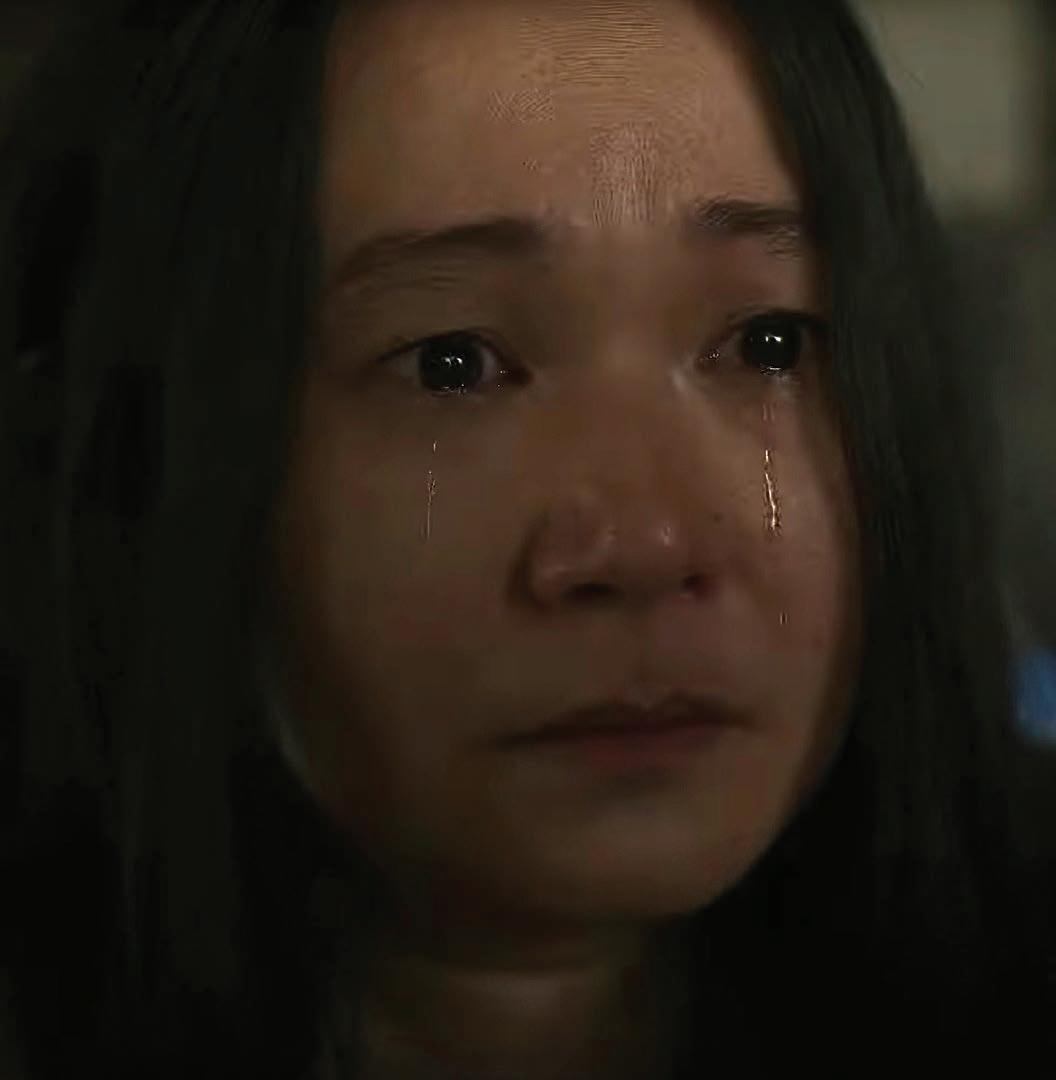
6 DEADLINE.COM/ AWARDSLINE A /COURTESY EVERETT COLLECTION The scene-stealing
looks back with surprise on her
year
★ ★ ★ ★ ★ Hong CHAU C A Downsizing. N D A The Whale L E C S S . A L C C L .
star of The Whale
whirlwind "nutty"
BY














chance at it. And I told my agent, I was like, “Look, of course I love the script, and I love Darren Aronofsky and think that he’s amazing, but I just don’t think that this is going to happen. So, I’m not even going to try to throw my hat in the ring for this. I’m happy for whoever gets it, because I think it’s a great role, but I don’t think that this is for me right now.” He was respectful about that, and just let it sit for about a week, came back and he was like, “Are you sure? It’s Darren Aronofsky, and he’s really interested in seeing you for it.” And I thought, “Well if he’s specically saying me, then this feels a little bit di erent.” Then I panicked a bit because the character has these long monologues that I felt needed a lot of preparation, and I didn’t think I could do a good job, because I had this little baby on me.
That must have been a very interesting audition.
We were in quarantine in this little two-bedroom apartment in LA, and it was just a hard time. Just trying to record an audition tape for Darren was so di cult to do, but we did it. I ended up FaceTiming with Darren pretty much a couple hours a er he saw my audition tape, so, that was amazing that it happened so quickly.
Was there a rehearsal period for everyone to get to know each other and feel comfortable with the script?
We had a three-week rehearsal period, which is such a luxury. A lot of lm directors don’t like to rehearse, because they feel like they might lose that sense of spontaneity that you get without rehearsal. And with lm, you’re always trying to capture that lightning in a bottle.
But since this was based o of a play, it was really necessary for us to get that rehearsal period in. And from the very rst table read, I just felt like all of the actors were so committed, and so generous, and so interested in, not only their own character’s journey, but the other
characters in the story. I love it when actors will say like, “Oh, I really love that line of yours that your character says here.” And I de nitely had that with Brendan, Sadie, Ty [Simpkins] and Samantha Morton, who Zoomed in from the UK as much as possible.
Liz is full of contradictions as a character, what is your takeaway of her?
Liz is the best friend, but she’s denitely not the typical best friend that you get. She’s got a lot of di erent qualities about her where she’s obviously a caretaker, but she’s also incredibly caustic, and a little bit mean at times. Even though those are di erent qualities, I feel that it’s so accurate to people in real life who have very stressful jobs, where they are taking care of other people, and have so much responsibility and weight on their shoulders. They have to let it out somehow. It was about nding those moments of levity inside of a very heavy, serious atmosphere. And I really enjoy playing that type of character who has so many layers of complexity and dimension.
I did struggle when Liz was less kind to Charlie. I mean, have you met Brendan? He’s immediately lovable. I don’t know how you can talk to Brendan and not immedi ately want to hug him.
Because all the characters come and go in Charlie’s apartment, there’s a real need to establish who you are the second we see them. What tools did you use to enter the room that way?
I did come up with my own backstory for the character. Since she wasn’t written as Asian, they added the line about her being adopted once I was cast. So, I had to gure out what it took for Liz to not only be adopted, but to live with this very oppressive family. I imagined that she had some really wild rebellious days when she was younger, which is why I asked for tattoos for my character. You never see them on camera, but it was really just for me.
Every day, Judy Chin, our makeup artist, would put these tattoos on both of my arms and on the back of my neck. And it just felt so special because it was really just for me, and it helped me tremendously in terms of how I was feeling about the character. Just tapping into that darkness, her sense of despair and loneliness that she was also feeling. Even though Liz is taking care of Charlie, I don’t think she’s doing well either. She works a lot and keeps busy which is how she copes with things going on in her life. So, she doesn’t really take care of herself through her appearance. And that’s what you see in the movie.
Did being in that headspace allow for your performance to have any spontaneous moments or did you have to stick to the script closely?
There was one scene in particular, where Charlie nearly choked to death, and I just remember being so angry with him that I hit him. A erwards, Darren was like, “I don’t think that that’s where we want to go.” And we talked about it, and I explained where I was coming from, and how I felt that it would be true to this relationship. And a er he had
talked to his team, and the medical consultants regarding the sensitivities surrounding this group of people, we discovered that it comes up pretty frequently with caregivers who are exceptionally close to their patients. So, I’m glad that it’s still in there in the movie.
wicked sense of humor that shows up unexpectedtly.
Liz is always trying to say something funny and take the piss out of Charlie. I think throughout their relationship, there’s a sense of glossing over certain things and trying to put a better wrapping paper on it even when the situation is very bleak.
Speaking of humor, you take a complete 180-degree turn in your The Menu in which you play Elsa, a terrifying maître d'. It’s brilliant to see you be able to play such completely different roles this season.
There wasn’t a lot there on the page in terms of Elsa in The Menu, but I got to have a creative back and forth with [director] Mark Mylod and we came up with the tone of Elsa on the screen. It was a gamble, but I’m just happy how it turned out.
To be honest, I’ve just been really dumbfounded by the amazing directors and material that I’ve gotten to work on. I really was not expecting to work a er I had a baby. And then in 2021, from a lady who just wanted to stay at home and do nothing, I did four movies that year.
In January, I le to go do The Whale in New York, and then while I was shooting in New York, I got the o er to do Kelly Reichardt’s Showing Up in Portland. When I was in Portland shooting, I got the o er to do The Menu in Savannah. And then when I was in Savannah, I had to leave to go to Spain to do Wes Anderson’s Asteroid City, and then come back to The Menu. None of it was by design. They just magically showed up, so it was a really nutty year for me. ★
DEADLINE.COM/ AWARDSLINE
I really was not expecting to work after having a baby. And then in 2021, from a lady who just wanted to stay at home and do nothing, I did four movies that year.
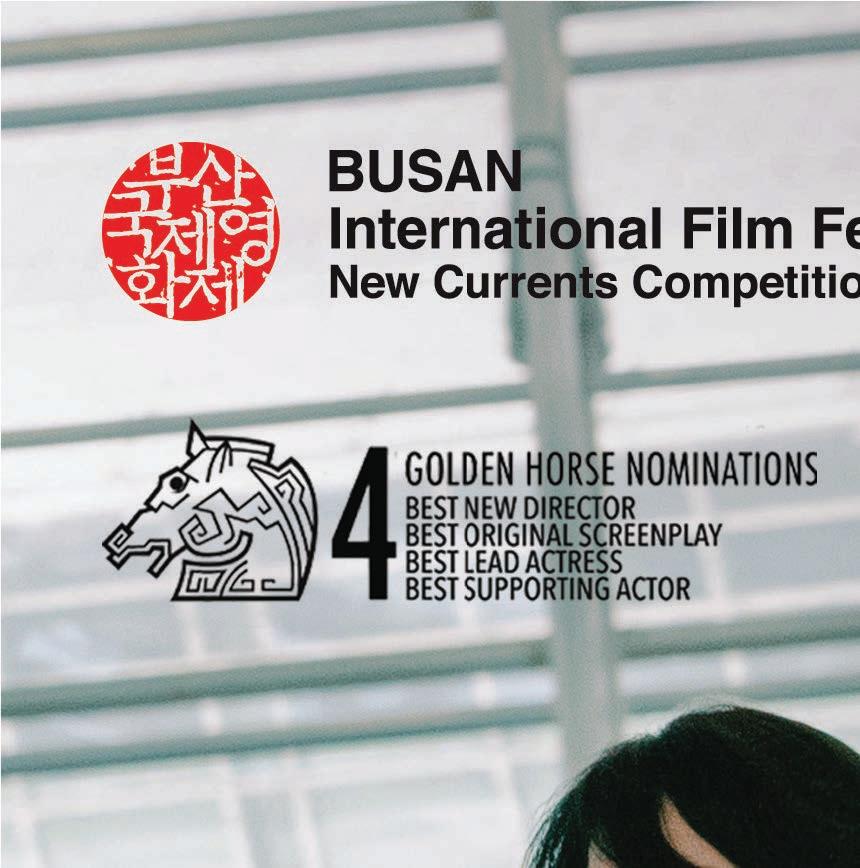













Andrea RISEBOROUGH




When she isn’t tormenting Matilda , the British star is sending letters of redemption To Leslie
BY JOE UTICHI
Andrea Riseborough’s acclaimed performance as the title character in To Leslie might be something of an underdog this season, but a recent Independent Spirit Award nomination for the actress suggests . D M M


.
someone so vivacious become trapped by that is quite an unusual experience. It’s not presented in the lm apologetically, and that’s unique. Michael and I talked a lot about the notion of Leslie as a female antihero, which is not an idea lm has focused on much.
It was so wonderful. Two things. First, and I think this is bigger than just that screening, is this feeling of real complicity among the audi ence. Everybody slowly starts to recognize that they’ve felt what Leslie feels. This strange sort of honesty or awakening happens in the audience, and camaraderie comes from that. The second thing

is that the narrative is so subtle in the way it’s presented. There are huge periods of movement, breath and visual cues to enjoy. And Michael fearlessly committed to those. So it’s a wonderful thing to step into a completely di er ent realm for a time, and I don’t think lms like this exist much these days. We shot it in 19 days, all on lm, and the feeling you get from that ignites people into being reminded what an intimate experi ence cinema can be.
When any of us look back at our lives a decade on, we recognize that we’re cellularly di erent people. And there will be things we recognize about ourselves and things we don’t. For Leslie, it’s the unchanging parts that she struggles with most, and as wild and free as she is—as much of a truth-teller as she is—she’s still trapped in her victimhood. Watching
The story isn’t presented in a linear way, narratively, and because of that, you’re a orded the ability to hold understanding for both periods of Leslie’s life because they’re presented right next to each other, but distant from one another. So o en a lm gives you all the answers before you’ve even asked the questions, but here it’s about trying to understand how Leslie has lost her compass, and how the one true direction—her North Star—is her son.
I think all of those things hold because it’s based on a true story. It’s written from the perspective of a child who watched their mother experience this very same thing. It’s as if Ryan has given his mother, who was from a very di erent place and background, a chance at redemption. What’s important about the story is that it’s this that makes the lm so beautifully hopeful, but Leslie isn’t just set free as a mechanism
6 DEADLINE.COM/ AWARDSLINE MOMENTUM PICTURES
★ ★ ★ ★ ★
. A O
To Leslie -




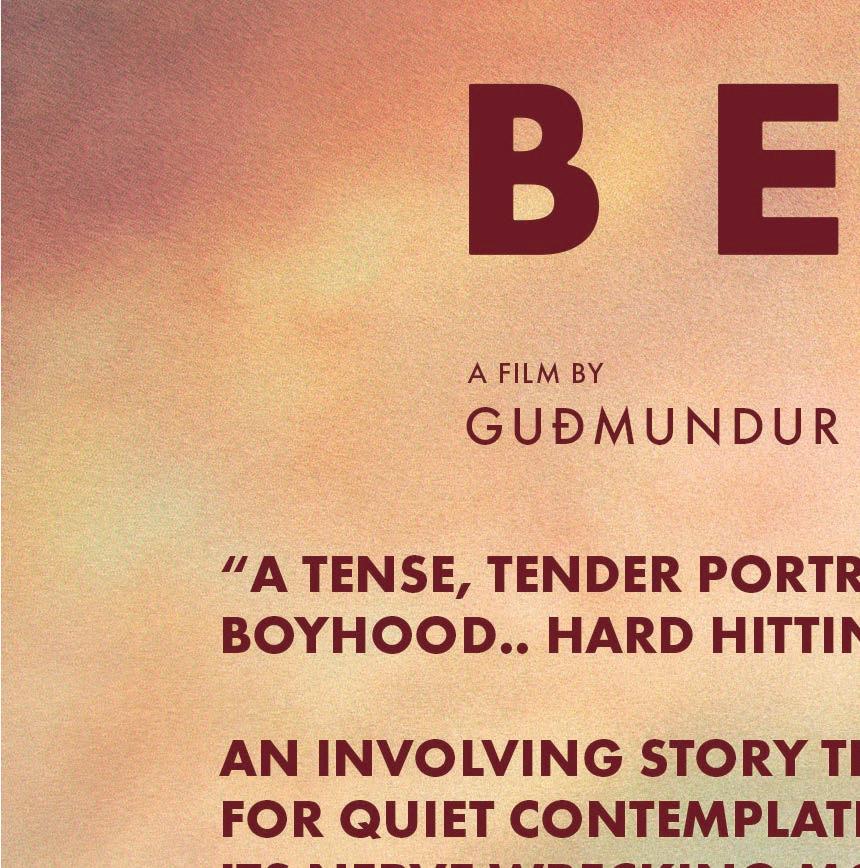








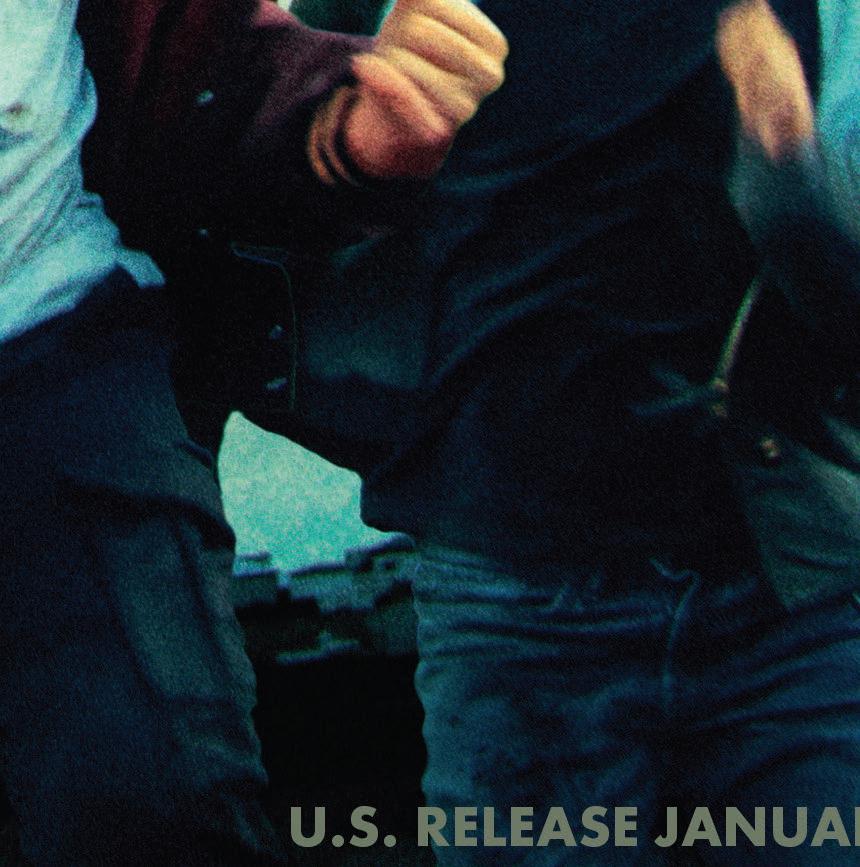
for the storytelling. The lm doesn’t rely on her being redeemed. She will continue to pull out a bottle and put it away for the rest of her life. It’s a realistic depiction of what the a ermath of that maelstrom looks like.
What did you make of how the
Watching the lm, some of the moments you feel closest to Leslie are those ones where she’s happy. There’s an honesty to having her turn to drink in moments of hap piness, because that’s the most human re ex. “I’m happy, I want to celebrate. I want to be even hap pier.” Happiness is such a transient beast for all of us.
Nobody chooses to be an addict, and it doesn’t matter whether it’s nature or nurture that pushes them there when there’s clearly no choice in the matter. I think one of the things that the lm inspires is a feeling in the audience about their own relationship to addiction, either their own or people they care about, because you feel so desperately for Leslie’s son, and for Leslie’s disap pointment in herself that she can’t be the mother she wants to be.
It stirs up all those feelings in us where, time and time again, despite knowing better, we attempt to save someone, or save ourselves, and it really feels like it’s going to be possible. Mark Maron’s character, Sweeney, embodies that. He knows he can’t ll that hole inside of Les lie, but he can’t stop himself from trying. It’s a natural compulsion to protect those we love from the wreckage of their own behavior.
The character, then, just starts to sink in. I’ve just played Audrey With ers in a lm about Lee Miller, who was a model who became a war correspondent for Vogue during the Second World War. And when you look at Lee Miller’s photographs from Dachau, you can’t unsee them.
There are things that once you’ve witnessed you can’t unsee. I think it’s the same with any character, and with any expression of truth, really. Leslie lived with me for quite some time, and you start to build a life for her.

She’s a woman from a very dif ferent place, which helps. Michael honed in on Texas, which felt right in every way, and expansive and con icted. The way Leslie is, she re ects her state in many ways. And then we really narrowed it down into the speci cs: I mapped out what her life would be, and those tools come from having trained, and from having worked with the most extraordinary directors.
performances from others. I’m not particularly interested in anything that’s particularly careful, which is not to say that’s not valuable. It’s just not my approach. I think that’s a received way of performing, and it’s not necessarily an accurate re ection of human nature.
Musical
Doing that was so much fun. I’ll tell you what wasn’t fun, though, and that was shouting at poor Alisha Weir, who plays Matilda. I think I apologized to that poor child at the end of every take, because of course Matilda just has such a raw deal.
But conjuring the life of the Wormwoods was just so much fun, and there was actually a big songand-dance number that’s not in the lm that I think we worked on for four or ve months. So, there was dancing and singing and joy and colors—so many colors—and Mat thew Warchus, who runs the Old Vic theater, is such a wonderful director who comes from the same world I do. There were a lot of theaterdriven performers in the cast.
Also, I’d like to say that my favor ite line of dialogue—and I don’t even know if it has made the nal cut—is this one: “We’ll have a television in every room, just like Madonna!” I hope that wasn’t cut [laughs].
I think there were two years before we got to the shoot. Michael had sent the script to me and expressed that he wanted us to do it together.
But I think, no matter what you do, if you’re unable to fully commit yourself to telling the story, it just isn’t going to work. I’m brutally hon est about the many wonderful and sordid and complicated ways that people behave, and how I want to re ect that. That’s what I’m looking for in terms of feeling satis ed as an actor, and it’s those qualities I gravi tate towards in all of my favorite
There are probably di erent reviews on that [laughs]. My partner would say that he’s very ready to be done with certain characters when I n ish some of them, and sometimes a erwards as I try to nish pro cessing them posthumously. But I think, for the most part, I really try to enjoy my life. I do enjoy life, and I really enjoy people, and engaging with them as much as possible. A character can’t help but have an e ect, but I do think I have a mus cle that has become more re ned over the years of holding them at arm’s length. I can slip in and out of characters relatively quickly and easily, and it doesn’t make the experience any less deep. The dive, I think, might actually be deeper because you feel safer to know that you will emerge.
I’m a trained singer and dancer, both classical, so just being able to explore that again was fun. I’m so pleased it’s coming to me now—though my splits might have been better 15 years ago—because I knew earlier on in my career that it wasn’t a direction I wanted to com mit to. It wouldn’t have been right for me then, even though I was as capable of doing those things as I was at drama.
So o en, as a performer, you have to choose whether to go down one road or another, which is a strange thing when you’re capable of both, but certainly literature had driven me, and so had classical music, more so than musical theater. But when you’re working with someone like Tim Minchin, who makes it such a joy, it almost feels illegal to get to be so cheeky at work. ★
6 DEADLINE.COM/ AWARDSLINE O ENTU PICTURES/COURTESY EVERETT COLLECTION
To Leslie Matildathe
Andrea Riseborough in To Leslie

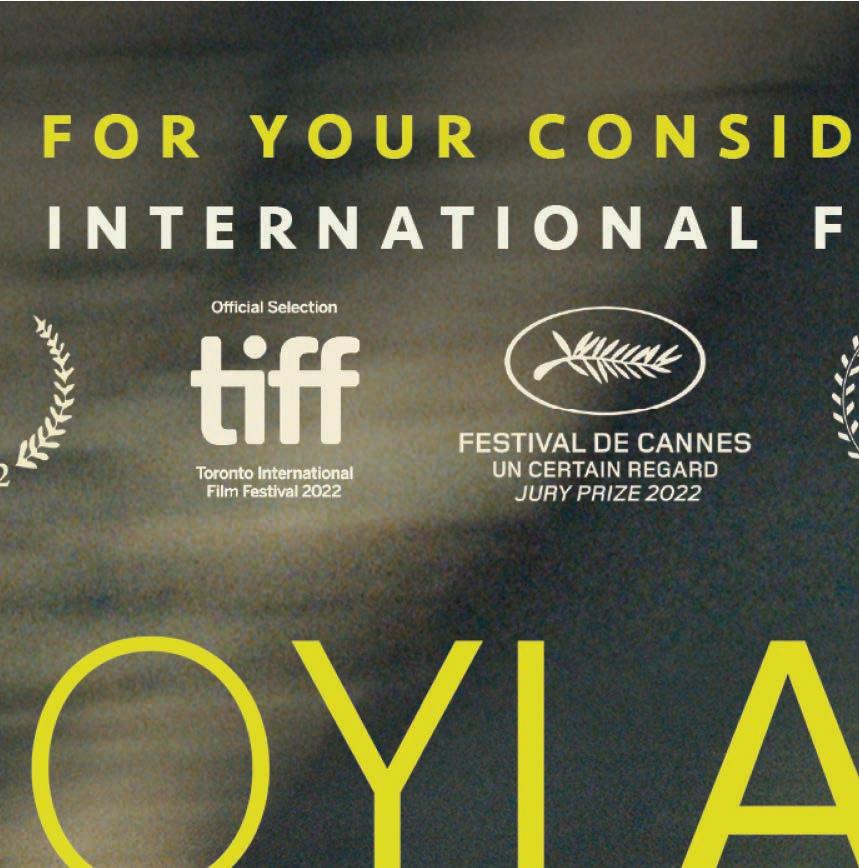












The artist formerly known as the Queen explains why she learned a lot from listening to Women Talking
BY DAMON WISE
Claire Foy is nothing if not versatile. In 2018, after winning an Emmy as Elizabeth II in The Crown, the 38-year-old Brit appeared on Jimmy Fallon’s show and threw down the intro to The Sugarhill Gang’s hit “Rapper’s Delight”. The same year, she was astronaut Neil Armstrong’s wife in First Man, but in Oscar hopeful Women Talking she plays Salome, for whom the moon landing is pie in the sky. Directed by Sarah Polley and produced by Frances McDormand, it takes place in a strict religious community where women and girls have been abused by their menfolk. A meeting is called: do they stay, or do they go?

You must have known Women
Talking was going to be hard work from the moment you saw the script. Why did you sign up for it?
Sarah, really. She was the gatekeeper to the whole project, and a pretty impressive one. I just had the loveliest time talking to her. It was during Covid. I did lots of Zoom meetings,
and hers was the most relaxed and enjoyable Zoom that I had during that whole period. We talked about everything. I nd her a really inspiring person to talk to: she’s incredibly intelligent and emotionally engaged. It was only when I found out I’d got it that I realized what a responsibility I’d been given. I was slightly afraid
because I didn’t know where it was going to take me. But she cast the most extraordinary group of people, and the crew likewise. I knew I was in a safe and respectful environment.
How did you prepare?
Well, I was very lucky: there’s a book [by Miriam Toews]. Also, the lm is based on a Mennonite community, and so there was a little bit of research I could do around that. But there were other things I couldn’t investigate for myself, so I had to trust that, through the writing and the living of it in the moment, it would all come out. What I didn’t expect was the camaraderie and support created by Sarah and the other actors. It’s irrelevant what I did or didn’t do, because we did it together. It was a completely collective experience.
It does actually look like you're miles from nowhere. But I suspect that wasn’t the case. Fran’s dream was that we’d all live in the community: all our children would come, and we’d all live there in the Mennonite houses. We’d wash
like Mennonites, we’d have no electricity, and then we’d go and shoot. But obviously, that’s impossible. And, who knows, it might not have gone as well if that had been the case, if we were living with each other dayin, day-out. So we were on location for the exteriors and the barn was built in a studio in Toronto.
The discussions are incredibly intense. How were they to shoot?
Though there was obviously a collective discussion that was going on, what was really fascinating was that everyone had their own point of view. I know that sounds a bit silly, but there were very distinct voices within the haylo , very distinct characters. As an actor, when you’re preparing your part—looking at the lines and the beats of the scene—obviously, you can’t prepare for what other actors are going to do in the room. And with this, they really came alive. Your approach could be completely di erent, take to take, depending on what the other actors were giving you. I was constantly surprised.
It must have been incredibly difcult for Sarah to wrangle all those
6 DEADLINE.COM/ AWARDSLINE ICHAEL I SON/ORION PICTURES/COURTESY EVERETT COLLECTION
★ ★ ★ ★ ★
Claire FOY














di erent performances and still get all the coverage she needed. We would do 10 pages of dialogue over a few days, then we’d do the next block, and then the next block. So, it was quite technical. There were some slightly delirious days, but it was an amazing experience.
Were you always clear about Salome’s motivations?
Salome is always very clear that she wants to stay and ght. She wants to stay and she wants to have some sort of justice be done. I think the great injustice she feels is that these men will not know what they have done, and they will not feel the weight of what they have done. That, quite rightly, infuriates her and makes her incredibly angry.
It’s similar to the way that some one in a war-torn country has to make a choice about whether or not to leave. Home is a very signi cant thing, especially for these women. They don’t have the freedoms that we have. They can’t read or write, they don’t know what a map is. They don’t believe there’s anything outside of their colony. What happens in their colony is their world, and we can’t underestimate the signi cance of that. The choice to leave is huge. Not just for them, but the next genera tions of their children. The impact is going to be wide-ranging for forever.
Is it easy for you to get into a character like that?
With Salome, I didn’t disagree with her. I thought everything she did was bang-on. I was behind every choice that she made and all of her opinions. I’ve got a lot of tolerance in my life from doing my job, because I understand that people do things that hurt people, or they make the wrong decisions. But that doesn’t necessarily mean that they have done the wrong thing. My job is not to be in a position of judgment but to try to understand.
Did your theater background help on this movie?
Yeah, it de nitely helped. Having worked for as long as I have also helped. I’ve got a lot of experience now. I trained at drama school, so I had lots of training to fall back on, and I also had experience of having to make [scripts] fresh and alive, having done them 150 times on stage. It didn’t make it any easier, but it de nitely helped quite a lot.
What made you want to act?
I didn’t understand that it was a job. I didn’t know any actors. It was like this magical, parallel world. I used to watch people on screen and I just believed that they were the character. I just didn’t put two and two together, for some reason [laughs]. It all made sense to me when I was at drama school: that acting was about expressing and connecting with an emotional thought, or a feeling, and getting it out of your body so that it exists outside of yourself as an actual living, breathing thing other than you.
I couldn’t live without it. I think I’d be an absolute nightmare if I didn’t do it. I already am a nightmare. But… imagine! I’d just be howling and cry ing every ve minutes, probably.
Was there anything you could’ve done instead?
It’s really bizarre, now that I think about it. I just was in denial, because I didn’t want to expect anything of myself, and I also didn’t want anyone else to expect anything either. I just was so embarrassed by that concept that I pretended I didn’t have any
expectations at all. I was like, “I don’t know what’s going to happen. Maybe I’ll make it, maybe I won’t.”
But I always had a job. I’ve had a job since I was 13, so I always had jobs while I was trying to nd acting work as well. I’m sure I would’ve eventually found something I was also passionate about, but acting was the thing. Film acting was what I was most passionate about—from being a teenager—and theater, whether it involved acting or not. I probably would’ve done something else in that world. Something behind the scenes, I reckon.
asking me to do a period drama, and Matthew Macfadyen was in it, so I was gonna do it! I just had a bit of a meltdown. Not because of Little Dorrit, I just had to come to terms with a lot about myself. It’s been a very long, long road to acceptance, of feeling, “I’m worthy of being here. It’s OK I’ve followed something that I wanted to do, even if everyone else thinks I shouldn’t be doing it.” So, yeah, it’s been a long old road.

When did you realize it was going to happen?
My rst acting job was Being Human for BBC3, with Russell Tovey and Andrea Riseborough, which is an incredibly exciting cast. I was absolutely shocking in it. We didn’t do lm work at my drama school, so it was a baptism of re, and—looking back now—I just am morti ed. I didn’t know how to do it, so I had to learn very fast. Then I did a couple of plays at the National Theatre, then I did [U.K. soap] Doctors, and then, very quickly a er that, I got LittleDorrit And that was the point where I was like, “Oh, God, I’m doing it.” Basically, I had an existential crisis. I was like, “But why am I doing it? I’m not good at it! What’s going on?”
How did you get through it? How could I not do it? The BBC were
You segued back into the more sedate world of British cinema, with The Lady in the Van and Breathe. And then, of course, The Crown. That’s a big role to be offered. How did you deal with it? I know it sounds crazy now, but it was unknown territory. Net ix had never shot anything in the U.K. I remember when I was doing the contract, there were things in it that just would never have never come up before—because they didn’t exist. And there were other things I couldn’t get my head around. I mean, Stephen Daldry is an extraor dinary director, and I’d always admired him. Peter Morgan had won an Oscar for doing a lm about the Queen, and they’d done TheAudi ence together. So, in my head, I was like, “Well, this is going to be the clanger then, isn’t it? This is going to be the one that brings down the whole thing.”
Did you ever get any unexpected feedback from royal channels?
No. But something really weird did happen with that show. I only know about it because people around me, especially Matt Smith, would tell me about it. People would say stu on set to other people that they would never say to me. And he said, “It’s because they think you are the Queen.” I was like, “That can’t be the reason.” But he insisted: “I think that’s what it is. People don’t want to approach you.” It was really bizarre. Because everyone around me got lots of information, and I was just stood there going, “Oh, OK.” ★
66 DEADLINE.COM/ AWARDSLINE ICHAEL I SON/ORION PICTURES COURTEST EVERETT COLLECTION
From left: Rooney Mara, Judith Ivey, Claire Foy and director Sarah Polley.

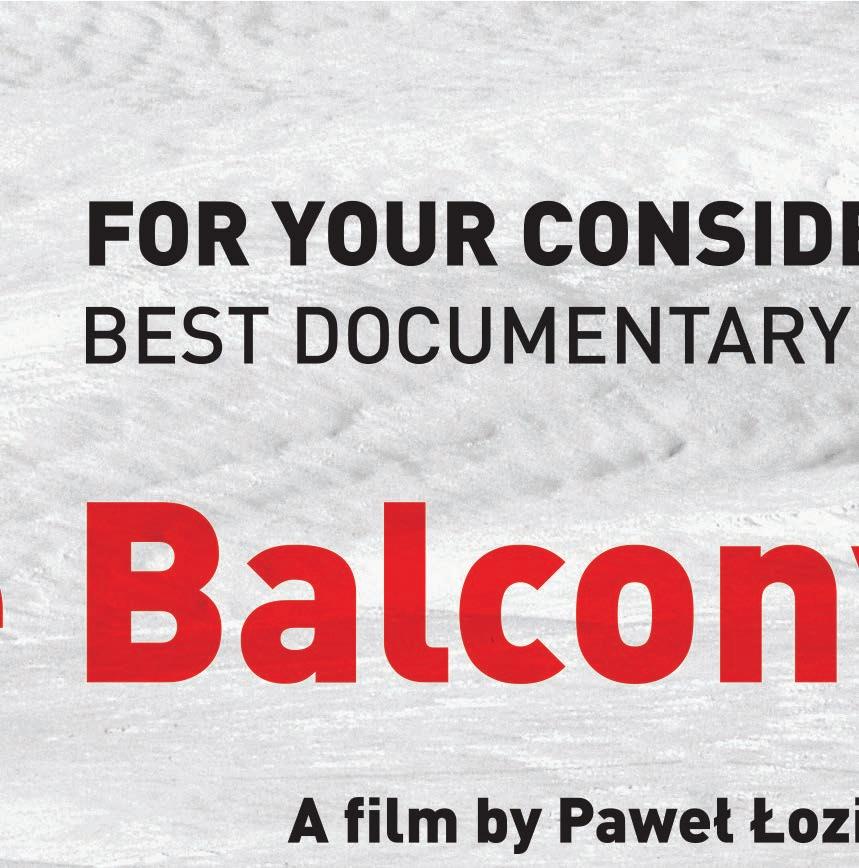









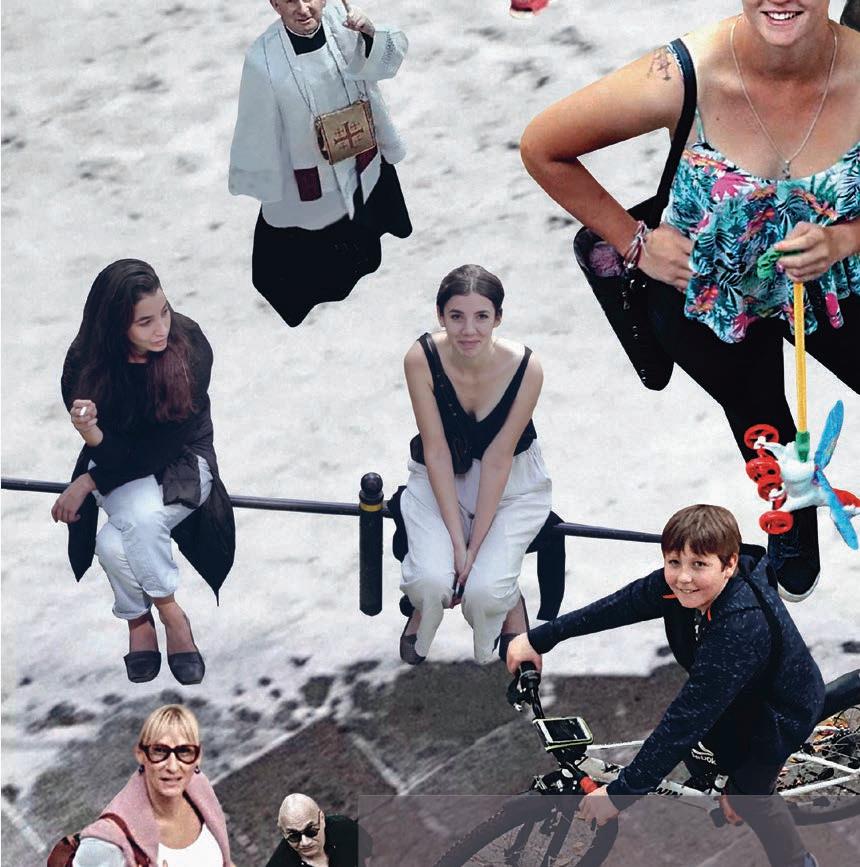

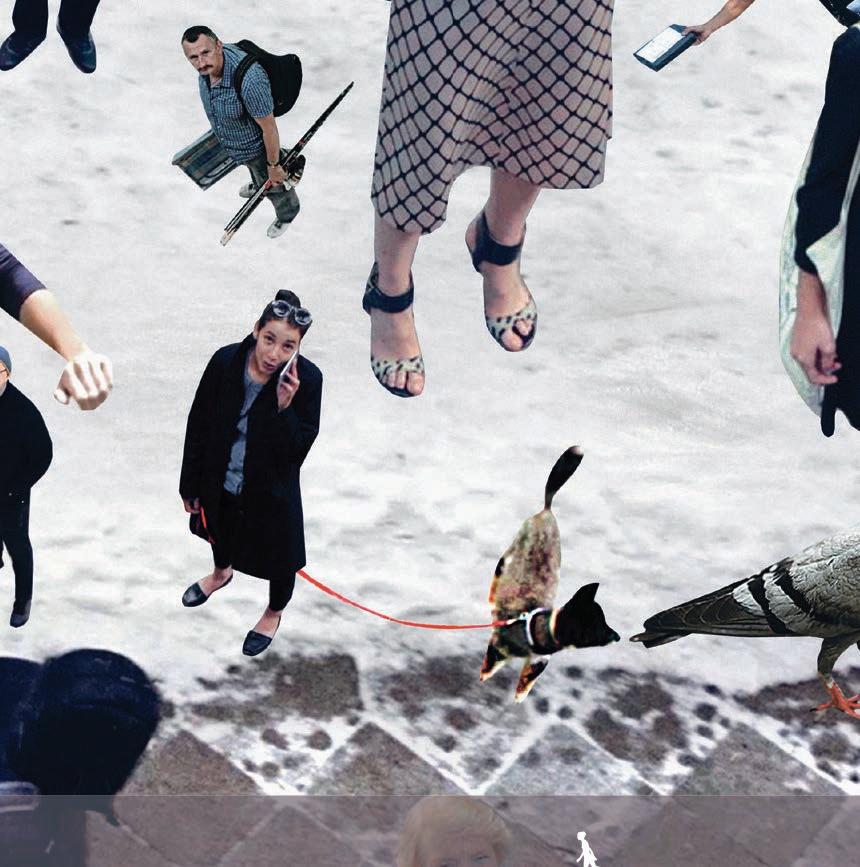 BY JOE UTICHI
BY JOE UTICHI
Everything Everywhere All at Once seems to be at the forefront of a -
Absolutely—I feel like our movie was a launching pad for everybody to say, “Wait, movies are back. OK, here we go. Let’s get back into editing and let’s keep pushing each other further and further.” I feel it is de ning something new, and I think I’ve been waiting for mainstream cinema to change people again, to make people eager to get back to the theaters. The fact that I’m getting to experience that renaissance with a project I love so deeply is mindblowing to me, and I feel it’s been really encouraging.

One of the things about the movie is that it has this great spirit of
togetherness and of being with the ones you love. Knowing how hard it is to even get out of the door to a theater, sharing the movie has felt like holding someone’s hand and saying, “I want to show you a little piece of something that reached me, and I want you to get it too.”
I’ll tell you a story, which is that the Daniels and I were going to the Hamptons Film Festival together, and we were on the same ight. Daniel Scheinert was sitting next to a man who started watching the movie, but he didn’t say anything. Then that guy talked to another guy, and he started watching the movie. So, they nished the movie on the ight, and then came together in the cabin and hugged each other and were talking about it. And then Daniel said something to me, and I went
6 DEADLINE.COM/ AWARDSLINE ALLYSON RI S/A /COURTESY EVERETT COLLECTION Life’s an infinite bagel for the Everything Everywhere All at Once villain, who freaks out airline passengers
★ ★ ★ ★ ★
HSU
Everwhere All
.
is M E . R S O .
Stephanie
Stephanie Hsu has a whole heap of challenges to deal with in the Daniels’ hit Everything
at Once
Not least of which











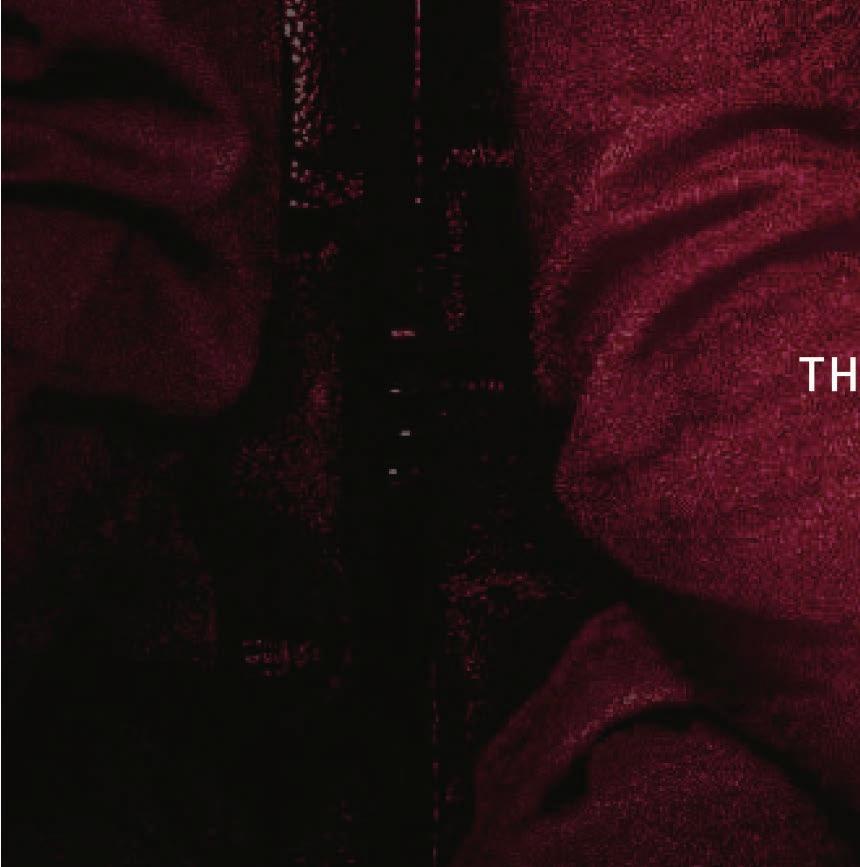
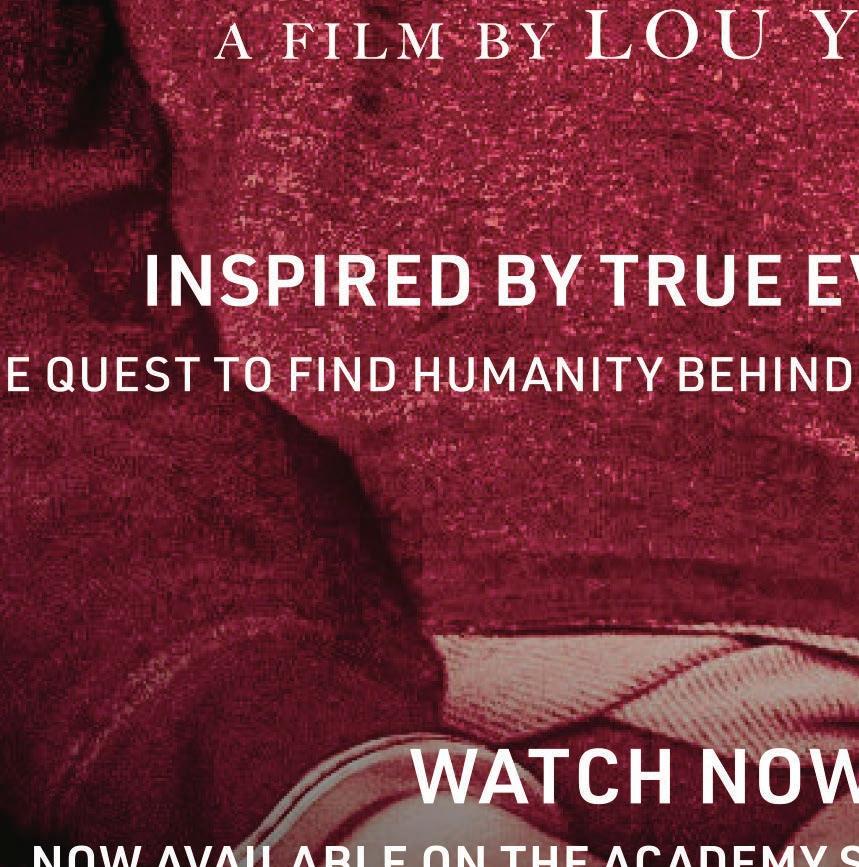

into the aisle. The guys were like, “Wait. Are you… Is this… Is she…” It must be intense to watch this movie and then nd yourself in a con ned space with Jobu Tapaki. [laughs] But it was so special to get to see them witness it right next to us.
Where does your journey begin?
I was born in the South Bay, and then I lived in New York for 11 years. That. I think, was the huge thing that shaped me. I always thought I’d be bicoastal, and I go all the time for work, but I don’t need to plant myself there as much any more. But I worked on a farm when I was in college. I really love agricul ture, and valuing something outside of what this industry is just keeps me sane and healthy.
I started in experimental theater and comedy. I never wanted an agent, never wanted to do commercial stu . Truth be told, I think I was really afraid to sell out, because at that time there was no Crazy Rich Asians. I was one of two Asian people in my acting class, and then one of maybe less than 10 people of color in the whole department. We weren’t having the conversations we’re having now. So, I think the experimental theater scene was a lot more international, and it felt like we were pushing boundaries. Now I can see that it’s also limited in its scope and also elitist in some ways, but it was fun to make shit that you felt really passionate about.
I always say that people kept opening doors for me that I didn’t know existed. Someone was doing a table read of a SpongeBob musical, and they asked me to do some extra voices. I ended up being in that project for six years. Then I get a call one day, “Do you want to come to Broadway?” I mean, yes, I’ve never been before. And then another musical I’d done in New Jersey, that ended up being a weird internet cult sensation. We recorded an album and it became a sensation on the dark web of musical theater, so then ve years later it came to Broadway totally
driven by the power of the people.
The long story short is that right before this movie I was doing that show, Be More Chill, on Broadway, playing the female lead and shoot ing the third season of The Marvel ous Mrs. Maisel at the same time. Rachel Brosnahan and I went to college together, and though we didn’t know each other, we had mutual friends. I kept having friends tell me, “There’s this character on Maisel that everybody thinks should be you. Make sure you get in there.” I was in tech, doing eight shows a week, but they were like, “They want to make it work.” So, I ended up get ting that job, and I was still doing eight shows a week, but on Mon days I would lm for Maisel
When that nished, Bowen Yang, before he was on SNL, called me because he was doing a show with Awkwa na that was an all-Asian cast. So, a er my musical and Maisel wrapped, I did an episode of Nora from Queens, and my directors were the Daniels. We fell deeply in love with each other. The rst day we worked together, they blew a leaf blower into my face, made me speed rap against a green screen and then Daniel Scheinert got up on a ladder to dump mud on me. I said, “These are my guys,” and followed them out to LA. Within a week of getting there, they called me to say, “Hey, we’re working on this movie. No pressure, but we think you’d be perfect for it.”
I think the biggest thing I feel grateful for, especially with the suc cess of Everything Everywhere, is that I’ve managed to do this whole thing simply by following people that I love working with. Because I didn’t see many people like me, and didn’t see a path for myself, I’ve just been bushwhacking with the desire just to make things I’m really pas sionate about.
of Everything Everywhere
favorite scenes is the one where Jobu is describing the bagel, and it’s this ultra closeup and I think that’s a perfect Joybu moment, because you get to see that there’s something beneath the villain. It’s the window.
I’m such a nerd about cra , and you never get roles that ask this much of you as a thinker, so to be able to make space for that little window was so satisfying.I think a lot of that happened beforehand, while we were in preproduction. Once we were o to the races, the shoot was 30 days. We spent a lot of time, speci cally with Jobu, wrapping our heads around the idea that she’s so all-knowing that it doesn’t even phase her. It was about creating a villain that also has a supreme philosophy, heart, and thinks it’s all stupid, actually.
You’re right that Jobu is both everything else and also still Joy, and Joy has Jobu within her. The Daniels and I talked about the concept of that particular character track, because it’s so essential to the movie making sense, even through the chaos. We did try to weave that into the fabric of the lm, and one of my favorite shorthands for it was “Joybu”. A combination of both Joy and Jobu. It wasn’t a real thing, but we knew what it meant, so when the seams start to pull apart a bit, sometimes we’d do something in a scene that was clearly Jobu, like the hallway scene, but then we’d say, “OK, let’s do it again, but this time let’s do it Joybu.” It made sense of the meta, because if someone can jump and be everywhere all at once, they can also still be the daughter.
I loved Joybu, because I feel that’s where we got the scene. One of my
The hallway scene was the rst I shot with Michelle Yeoh, in the rst week of the shoot. The Daniels and I, we’re good at throwing paint at the wall, and I trust them immensely. It’ll be like, “OK, the camera’s here, now go wild.” So, we’d worked on Jobu together and went really ham with her. But in that moment in front of Michelle, it was like, “Oh my God, wait, what?” I didn’t realize it would ever be public. All of a sudden it dawned on me: “I’m about to swing these nunchaku at Michelle Yeoh.” I was so nervous, because I was about to be a freak.
But the thing about Michelle is that she’s actually really silly as well. And while the Daniels can feel like silly guys who give everyone the rope to create, they’re also extraordinary cra smen. I want the world for them, because I want more people in the industry to know that it’s possible to value the people you’re working with and give them that room, and that great art can come from trust and love, and from not taking ourselves too seriously, but always holding the cra with responsibility. ★
DEADLINE.COM/ AWARDSLINE









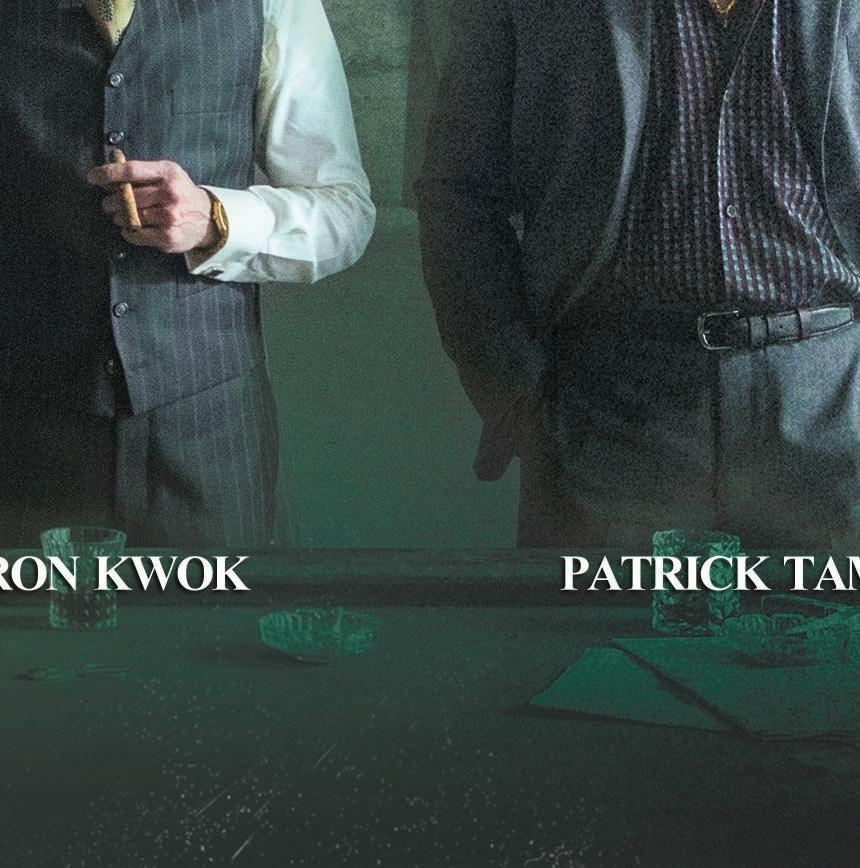




Closer to Home









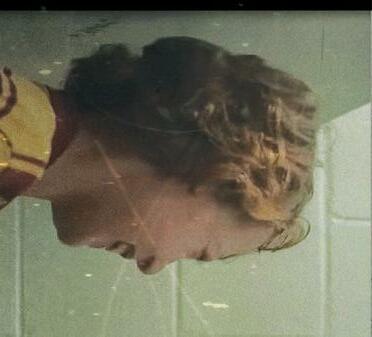
How cinematographers Darius Khondji , Lachlan Milne and Janusz Kaminski brought directors’ personal stories to the screen
 By Ryan Fleming
By Ryan Fleming


Every director brings a piece of themselves to their work, but this Oscar season has seen lms becoming ever more personal. And it’s up to the cinematographer to work with their director to bring those stories to life.
James Gray explores his relationship with his grandfa ther and a pivotal childhood friendship in Armageddon Time; a young, gay Black man looks for his mother’s approval by joining the Marines in The Inspection, using actual quotes from Elegance Bratton’s mother; and Steven Spielberg’s The Fabelmans shows the early life of a young lmmaker and his family’s in uence on his art.







A / OCUS EATURES/UNIVERSAL PICTURES/COURTESY
COLLECTION
EVERETT




















FOR YOUR CONSIDERATION BEST INTERNATIONAL FEATURE FILM – NORWAY 95th ACADEMY AWARDS® “VISCERAL AND EMOTIONAL” David Rooney,The Hollywood Reporter WEDNESDAY,DECEMBER 7, 3:30PM, UTA FRIDAY,DECEMBER 9, 7:00PM,CRESCENT SCREENING ROOM SUNDAY,DECEMBER 11TH, 5: 0PM,CRESCENT SCREENING ROOM MONDAY,DECEMBER 12TH, 7:00PM, LAEMMLE MONICA WAR SAILOR A FILM BY GUNNAR VIKENE AMPAS, HFPA AND PRESS PLEASE RSVP AT RSVP.WARSAILOR@GMAIL.COM “THE BEST KIND OF WAR MOVIE” Alex Heeny, Seventh Row
Armageddon Time
Armageddon Time brings the viewer into 1980s Queens to follow Paul Graff (Banks Repeta), a Jewish-American boy on the cusp of adolescence. Paul is a stand-in for James Gray, who wrote and directed this, his own coming-of-age story. Cinema tographer Darius Khondji, who had just wrapped up Alejandro G. Iñárritu’s surreal exploration of trauma with Bardo , worked closely with Gray to highlight Paul’s emotional journey. “I love having the director himself telling me, in his own words, what he was really feeling,” says Khondji.
Getting into the director’s emotional state was key, as the film dove into meaningful relationships that shaped his childhood. One relationship was with his grandfather, played by Anthony Hopkins. “The scenes are very different with his grandpa,” says Khondji. “When we were filming [Hopkins], the voice of reason, we were filming his face. His face was almost like a library, like opening an incredible book of who his grandfather was.”

The connection between Paul and his grandfather
contrasts with the relationship between Paul and his father, played by Jeremy Strong. “The scene with his father was much more strong and violent, sharper and more vivid,” says Khondji. After Paul gets in trouble at school, he locks himself in the bathroom to avoid his father, who comes in and beats him with a belt. “The bathroom was quite challenging because the rooms we were shooting in were always small. We had to put ourselves in small corners and shoot very straightforward, directly at the father and [Paul].”
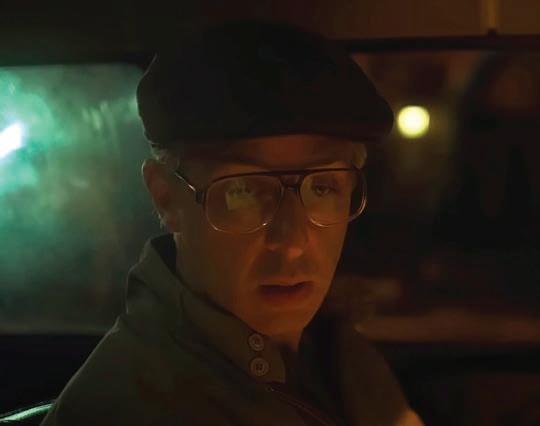
Since everything in the film is from Paul’s perspective, the scenes with adults are shot from a lower angle, to simulate looking up. “The camera was always lower, almost like another floor,” says Khondji. For Paul’s relationship with fellow classmate Johnny (Jaylin Webb), the change in camera angle represented an equality between the boys as neither was an imposing force from above. “It was very interesting because with the children, it was more about the movements. It was against the film about faces.”

Clockwise, from top: Paul (Banks Repeta) and his grandfather Aaron (Anthony Hopkins); Paul with his friend Johnny (Jaylin Webb); a family dinner; Jeremy Strong as Paul’s father Irving.

FOCUS FEATURES














The Inspection

Writer-director Elegance Bratton brings a painful exploration of a long ing for acceptance in The Inspection . Ellis (Jeremy Pope) is a young, gay Black man who seeks acceptance from his mother (Gabrielle Union) and decides to join the Marines. Bratton charged cinematographer Lachlan Milne with bringing his story to the screen. “I’m a big fan of trying to not influence things photographically too much if it feels like it takes away from the story,” says Milne.
When Milne and Bratton connected to discuss creative influences, they found a common reference in Claire Denis’ 1999 French film Beau Travail . “Both for the masculinity and the tone of the film, but also the photography,” he says. “It had quite a documentary style at times, which we wanted to bring into certain scenes.” Milne decided that the documentary style of filming worked best for exterior shots, in scenes where the camera could be restrained to just observe while the cast played in the wide shot. “We both wanted it to feel as spontaneous as possible, because the performances could change or the actors, particularly Nick [Logan] who played Brooks, would improvise in a really creative, clever way.”
As he joins the Marines during the era of “Don’t Ask, Don’t Tell,” Ellis struggles to disguise his sexual orientation. Milne worked with Bratton to bring Ellis’s sexual thoughts and fantasies to the screen, to contrast the harsher reality. “We talked a lot about color and frame rate, and it was always going to be driven by a strong musical cue” he says. To highlight the fantasy aspect, Milne filtered colors and changed frame rates to create a stylized and heightened look. “It’s something that you would never expect to see visually in that kind of environment, strictly from a color side of things, regardless of whatever the performances might be.”


Unfortunately, due to Covid travel restric tions, Milne was unable to film the scenes between Ellis and his mother, though he was able to give some direction. “We spoke tonally about those scenes,” he says. “[Brat ton] expressed the amount of emotional significance that those things had.” While most of the film was loosely based on Bratton’s personal experiences joining the Marines, the scenes with his mother were different. “Those are the ones that are closest to reality. It’s very hard to see and read those words on a script knowing that it’s drawn from his own personal experiences.”

6 DEADLINE.COM/ AWARDSLINE
A
From top: Jeremy Pope as Ellis French; Ellis and his mother Inez (Gabrielle Union); Ellis with Marine drill instructor Rosales (Raúl Castillo).














The Fabelmans
Cinematographer Janusz Kamiński has worked with Stephen Spielberg since the ’90s with Class of ’61 , so he has seen the director put pieces of himself into many films. “Steven always used his life experience, his fears or his worries to enrich the story that he was making,” Kamiński says. With The Fabelmans , Spielberg gave Kamiński an even greater insight into how the filmmaker got his start. The film follows Sammy (Gabriel LaBelle), a young man growing up in post-World War II era Arizona who finds himself enthralled by the movies.
A large part of the film is Sammy learning how to make movies, which meant that Kamiński was the cinematographer for those films as well. “Sammy’s movies are much more polished than his original movies,” he says. “That was a very conscious choice on our part, because we wanted to show that talent and that genius that he has.” The film tracks Sammy discovering new ways to achieve the effects he wanted, like poking holes in the film to get pops of
light that simulate gunshots.
While Sammy’s films may be crude compared to Spielberg’s current work, Kamiński says that it highlighted how “childish” the process of filmmaking still is. “We still make movies like that. We still throw dust, and shake the cars and move branches across windows—they’re techniques we’ve been using since the beginning of the movies. Stephen employed very sophisticated techniques to make his movies look professional… for a kid who is 12 or 13 making war movies.”

TheFabelmans explores Spielberg’s upbringing and the way his parents influenced his work. “I think the time was right,” says Kamiński. “Unfortunately, what made the time right is that both his parents passed away, so he felt rather obligated to tell the story of his family and how he fits into it.” While some aspects are fictionalized, most story points, like his mother’s affair, are true to life. Kamiński says it was “very brave to expose that to an audience that perhaps has a very ideal view of who this guy is. He’s the most successful director in the world, but we all have our issues. We all have our pain.” ★


DEADLINE.COM/ AWARDSLINE
UNIVERSAL PICTURES
From left: Seth Rogan, Paul Dano and Michelle Williams; Julia Butters and Gabriel LaBelle; Sammy films a family trip.














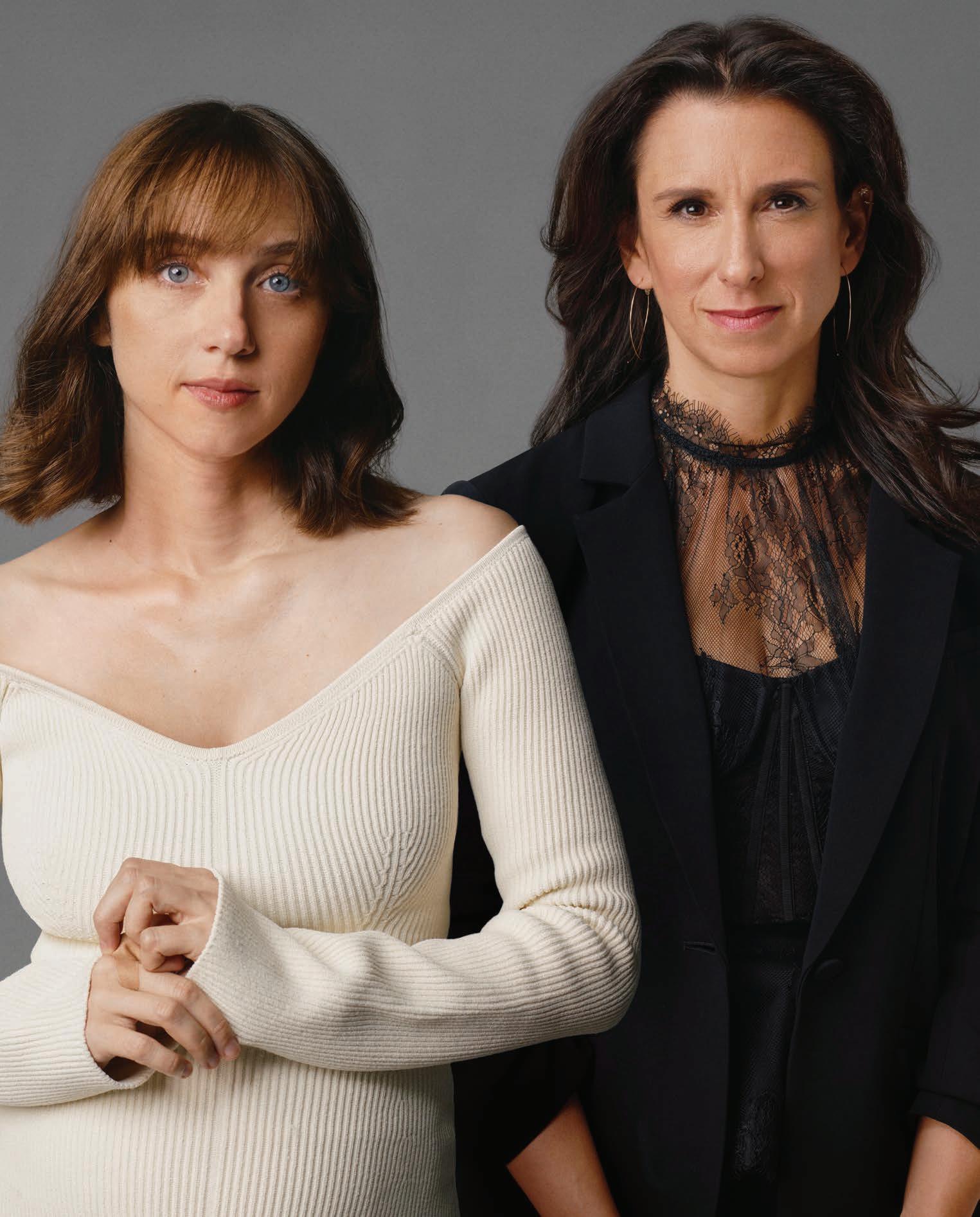
Zoe Kazan & Jodi Kantor
13 No. DEADLINE.COM/AWARDSLINE
CELESTE SLOMAN FOR UNIVERSAL PICTURES
In She Said,
Maria Schrader’s telling of the Harvey Weinstein take-down by New York Times journalists Jodi Kantor and Megan Twohey, we see the birth of a historic moment: The turning of #MeToo from a movement into an unstoppable train of change. Based on Kantor and Twohey’s book, and from a screenplay by Rebecca Lenkiewicz, the reporters painstakingly gather evidence from silenced survivors, many of whom consulted on, and in some cases starred in, the film. For Zoe Kazan, alongside Carey Mulligan as Twohey, playing Kantor meant understanding her humanity, the practical nuts and bolts of reporting life, and the weight of what it is to bring others’ devastating personal truths to light. In conversation with Antonia Blyth, Kazan and Kantor discuss the portrayal of women at work to change the world.
Jodi, when you and Megan wrote the book about breaking this story, did you ever have
JODI KANTOR: No. I mean, listen, I’m not a Hollywood person, but I know enough to know that these things often do not get made, and so the last thing we were doing was swanning around our book-writing office saying, “Well, when the movie gets made...” It was much more a sense of trying to write the best book we could write. We wrote this book as an invitation into our partnership and into our story. I think we wanted company in those moments, and we wanted the rest of the world to understand what we had seen and what we had heard. Whether it’s those very first phone calls, very hushed, very secret, where actresses began
telling me the truth about their experiences with Weinstein, to the very dramatic stuff that happened in the lead up to publication.
We had a series of confrontations with [Weinstein], including him bursting almost unannounced into The New York Times. And so, we were trying to nail those on the page as well as possible and still do yet more in investigation into the story for the book. I mean, we’re still flabbergasted that this film was made, but one of the many reasons we’re grateful to Zoe and the rest of the team is that they’ve given us so much more company in what was initially a very lonely endeavor. And I think enabled, and hopefully helped convince people of what we really feel, which is that a very small group of brave sources really can have enormous impact

and that it is possible to confront a bully. You just have to do it together.
How did you feel about having Zoe cast to play you?
KANTOR: I feel incredibly lucky. This is my first time saying these things to Zoe’s face, so you have to forgive me. It’s sort of two levels, because I think it’s the attention and care that Zoe put into the role, and then there’s what’s up there on the screen. I think Zoe approached this with the actor version of what I felt in approaching this story, which is responsibility. This is a sacred story. And so, I think that both Carey and Zoe, in terms of the technical feat of playing a real-life person, did it so naturally and gracefully. But I think they also accomplished the bigger task on screen, which is to get beyond the not-that-interesting question of, how does Jodi walk down the street, or whatever. And to get at, I think, the bigger question, which is, what’s it like to be under this kind of pressure and what do journalists really feel as they’re doing these jobs?
Throughout the film and in a couple of scenes in particular, I feel that Zoe was able to explain and demonstrate the world of emotions that I had, that I never thought anybody else would understand. I feel like what Zoe taught me about good acting is that it’s really the ability to convey several emotions at once.
For example, in the moment that Ashley Judd goes on record, I just feel all the layers in her performance. I feel the layers of believing for the first time that the story is really going to work. Trying to accept what Ashley did, which is, how do you respond when another woman puts her career on the line for your story? And the combination of feeling this enormous emotion but trying to stay professional about it at the same time, which of course only makes you cry more in the moment. I guess I’m still totally confused about how you did it, Zoe. I know the time we spent together, I know the performance we saw on screen. Everything in between is still sort of a mystery to me.
ZOE KAZAN: Carey and I had a conversation very early in the process where we talked about how we were approaching this, and Carey’s instinct I think was dead on, which is we can’t be doing an imitation, we’re not playing people that everybody knows the inner type of how they behave, and how they talk. We really felt like something would be lost if we made our main aim to sound exactly like Jodi and Megan, and walk like them and talk like them, and that it felt like that’s going to be incredibly distracting for an audience.
We re-watched All the President’s Men and Spotlight , and the thing I really felt was the less acting, the better. I think that Carey and I were really trying to capture an essence of who
DEADLINE.COM/AWARDSLINE
CJ RIVERA/EVERETT COLLECTION
Jodi Kantor, Zoe Kazan, Megan Twohey and Carey Mulligan at the New York Film Festival













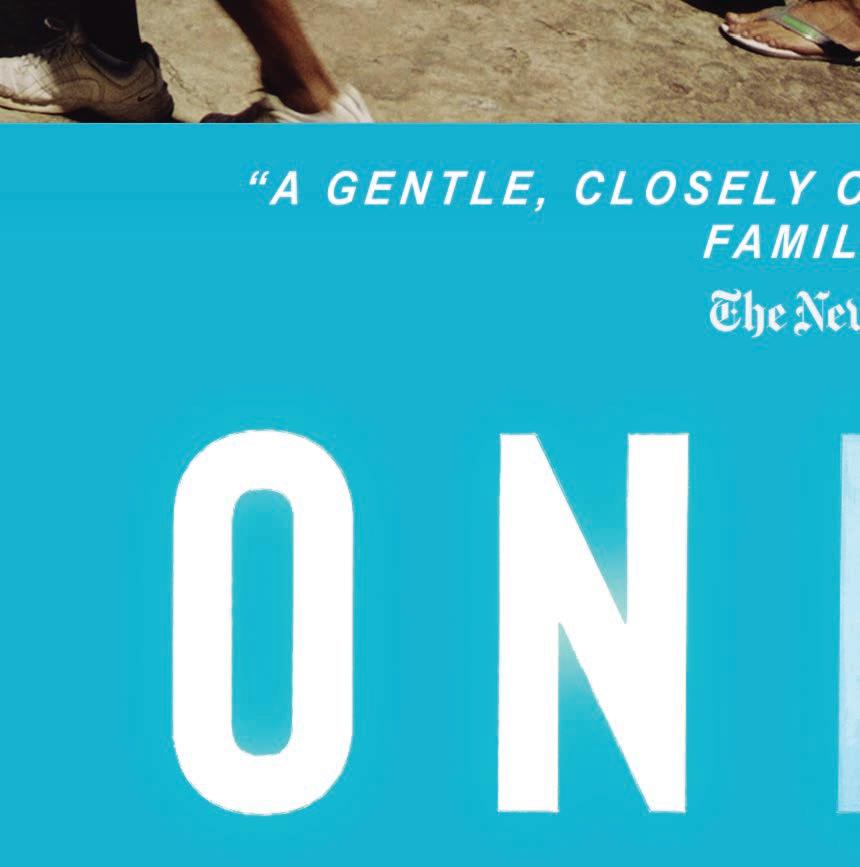
Jodi and Megan are as people and how they approached the work, and what work means to them, and then put ourselves in the imaginary circumstance. So, I think that on screen is somewhere between Jodi and me.
For one of the social media posts there was a clip of me in the movie next to a clip of Jodi talking, and I thought, “Oh, there’s more of Jodi there than I thought there was.”
Zoe, you and Carey are longtime friends, and with Jodi working so closely with Megan, how did you work out the pair dynamic on screen?
KANTOR: From our end, we were trying to give Zoe and Carey license. We wanted to really give them the room and permission to interpret these characters as they wanted. There were tons of recordings of Megan and I in public, we had written a book together, they could observe what they wanted to observe. I’ve only been through this once and it’s a pretty singular experience, but I think you can’t dictate it. In part because even the relationship that I’m in with Megan, it’s like a marriage. Do you know what I mean? Because of all of these internal currents and dynamics… We, I think, shared parts of ourselves with the public, but there’s always been a big part of it that’s been just for us. And so, Zoe, I don’t know if you feel this, but when the four of us were hanging out, I don’t feel that Megan and I were trying to ‘market’ our relationship to you. I think it was much more an act of trust, I think, of just letting you and Carey observe whatever you wanted to observe.
KAZAN: I mean, honestly, I think that just huge kudos goes to Rebecca Lenkiewicz, who wrote
the script, because she had done so much of this work already, so much of the bone structure was already there in terms of just, the movie is not about their relationship, the relationship happens over the course of the movie. And I think she had done a really delicate and careful job of showing these women growing in closeness and growing in partnership over the course of getting this story. Carey has said before, and I think it’s true, that the hardest part for us in portraying this partnership was the parts where they weren’t already super close. We had to remind ourselves to step back and think about where they were at each point in their relationship. Also, Jodi and Megan’s partnership now is years down the line from where they were when they were coming together to get this story. So, I think that we felt incredibly buoyed by Megan and Jodi’s support, and I think inspired by their partnership. I also think it was just a tremendous pleasure for us to get to be in partnership on screen, and even in the parts where we weren’t yet deeply in portraying two people deeply in partnership with each other, feeling the support from the other person.
I have this mental image of you, Zoe, going into The New York Times building and sitting at Jodi’s desk and getting a feel for what it’s like to work there.


KAZAN: Yeah, so I have friends who are journalists, and the first time I met Jodi, I had this feeling of like, “Oh, I know Jodi, I know who this person is.” It felt like some sort of deep recognition. And then of course, as I think one of the great joys of getting to be an actor
is that as you scratch the surface, you realize, of course, that there’s a whole mystery of a person there, that your first impression is only that, a first impression. I asked Jodi a lot of nosy questions about how she conducted herself in interviews, and what her family life looked like, and that helped me fill out my imagination and be very specific about props and things like that, which is hugely important in building the life of a character.
As for your vision for The New York Times, I mean there’s truth in it and then there’s also this other strange [pandemic] reality, which is that Jodi hadn’t been in the office for, what? A year and a half when we filmed this. And walking into The New York Times building was a little bit like walking into a space where everyone had been raptured. There was Valentine’s Day stuff still on people’s desks and Clif bars that people had just left there and never come back for, people’s shoes under the desk.
That’s kind of creepy.
KAZAN: It was. Our production designer, Meredith Lippincott, who’s wonderful, was like, “This is just a treasure trove for me,” because they had to dress certain areas. The area that we used to be Jodi’s desk in the movie is not really her desk, it’s actually the book department, I think, but it was better light for the camera. I also had this really uncanny experience of reading The Times on my phone in The New York Times [office] and having this sense like you do as a child about Santa Claus, like, oh, somewhere else the news is getting produced and there is a New York Times somewhere that’s beaming it into my phone. And then me
DEADLINE.COM/AWARDSLINE
JOJO WHILDEN/UNIVERSAL PICTURES/COURTESY EVERETT COLLECTION
Left: Kazan as Jodi Kantor; above: Kazan, Mulligan, Andre Braugher and Patricia Clarkson.




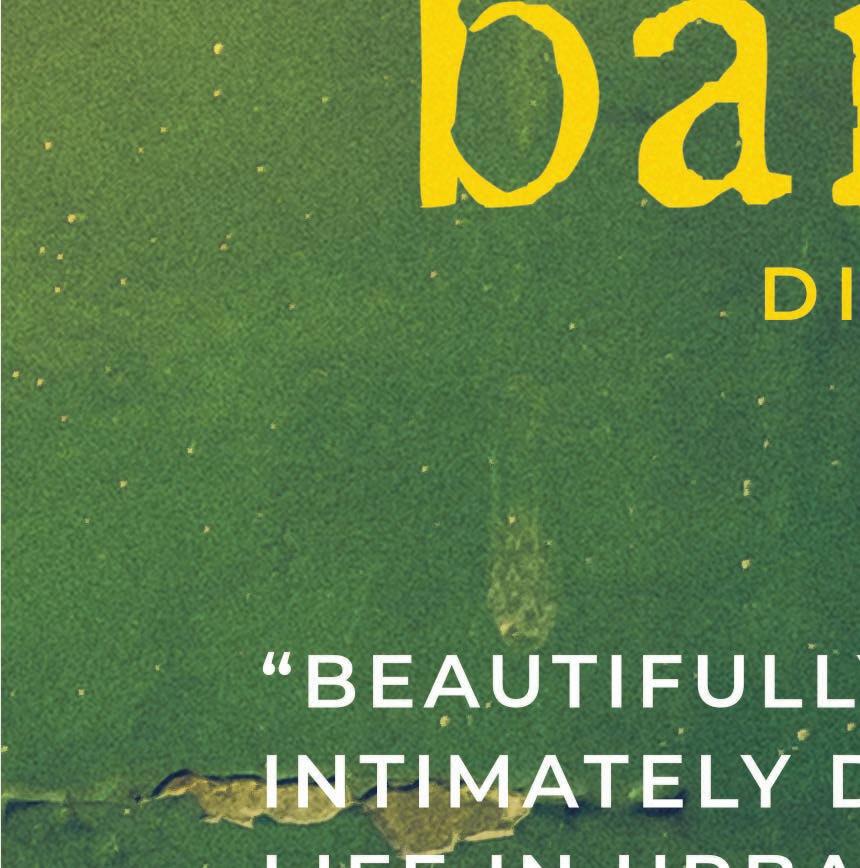


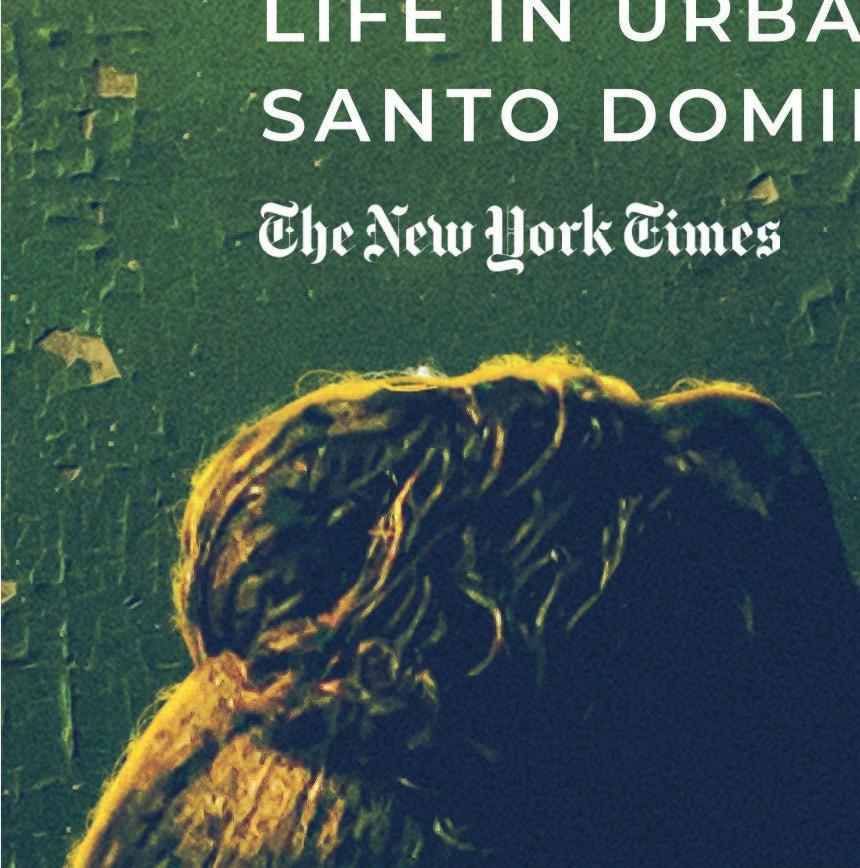






being like, “Oh no, I’m standing in The New York Times building and they’re all in their bedrooms at home, working as I do, crouched over a little desk in my kid’s room or whatever.” So, it was really strange, but totally wonderful. And I think sometimes when a piece of work is particularly meaningful to you, as an actor, you are endowing those objects and those places with a lot of significance. And I had this feeling of like, now when I pass The Times building and, “Oh, there’s my workplace,” I have a little feeling of ownership.
KANTOR: Megan and I watched it with our husbands for the first time. But that was really only the beginning, because we had been warned by the director, Maria Schrader, she gave us very good advice, and she said, “Watching yourself depicted on screen is one of the strangest experiences a person can have.” And she said, “You’re going to need to see the movie several times,” and I found that to be absolutely true. For me, it took me three viewings to be able to absorb it.
I think that one thing I didn’t expect was that there was more I understood about Zoe’s performance each time because it is a pretty subtle, layered performance. In some of the most important scenes, she’s really just listening, very active, [it’s an] emotional kind of listening, but she’s also being professional in the moment. To me, you can see both the professional containment, because you need to be a rock for these women in interviews, you can’t fall apart even when they’re telling you really horrible things.
But of course, Zoe was able to make visible some of the things that I was feeling under the surface as I was listening to things. And I think
what’s also amazing about those scenes is that Zoe, you were able to do such a sensitive job of, in a way, giving the scenes to the women in question—to Zelda Perkins, Laura Madden and Rowena Chiu—and that’s what you try to do as a journalist too. I mean, it’s very unprofessional, as you know, to make it about yourself in those moments, and one of the things you learn as a journalist over the years is to be more and more of a minimalist and just to stop talking, to resist the urge to go on and on and let the other person fully fill the space.

Jodi, I saw this thing that made me think of you that’s from [journalist] Robert Caro’s Instagram, which are his notes from his first interview with Robert Moses in the 1970s and it’s basically a blank page and at the top of it it says, “Shut up.”
KANTOR: Right? Shut up, shut up, shut up, shut up. And on that note, I mean, the last thing I want to say about that is that maybe the two of you can help me with this list. I am trying to think of how many other films there are that are led by two female figures with an emphasis on their professional capacities, where they’re the agents of the action and it’s not their romantic lives that are mostly on display, it’s the work. It’s just their work every single day. I’ve been trying, I’m sure there are other films that do that, but I’m having a little trouble.
Nine to Five,
And I thought of A League of Their Own . It’s a movie that I wore out the VHS tape as a child.
about women having a ticking clock on them in Hollywood or whatever, and I do think that it’s a larger problem of how we think about women as they get older. There are a lot of coming-ofage stories about young women and there are fewer stories about women in the meat of their lives. It’s like we have internalized a marriage plot structure where once a woman becomes of an age where she wouldn’t be seeking out a mate any longer necessarily, we think about them as their story is done. There are no stories to tell about them. And I loved getting to be a person in the swing of their life on screen. The depiction of working motherhood, for instance, was so important to me and how I approach this movie. That juggle is so familiar to me, and I think, just as what Jodi’s saying, I just think you see it on screen very rarely.
I had to compartmentalize as I was playing it and start to feel like I’m not playing this real person that I’m in contact with on text, I’m playing this other version of a person. Also, I felt such a weight of responsibility portraying all these real-life situations where women were coming forward and being so brave and speaking with a journalist, that the weight of those stories felt to me like much more present tense than the weight of Jodi’s story.
There’s been a lot of conversation
I don’t think that we could have made this movie without their involvement. I don’t think that that would’ve felt comfortable to anyone. I don’t think that would’ve been the right way of going about things. And I felt tremendous confidence in [producer] Dede Gardner from our first conversation about the movie. I felt like she is going about this exactly how I would want to go about this, where she’s speaking with all these women, she’s taking their stories into account, she’s letting them have input on the script. Knowing that Ashley would be involved, it just felt like a huge honor to me. I feel such a debt of gratitude to all of those women.
I remember reading Ashley’s account in Jodi and Megan’s story in 2017, and thinking, “Wow, she’s really put herself on the line here.” And I think that what all of those women did, including the women who spoke to Jodi and Megan off the record, that their bravery made such a huge difference and their willingness to take this enormous leap of faith, so having their involvement felt like it blessed our film in a way. ★
JOJO WHILDEN/UNIVERSAL PICTURES/COURTESY EVERTT COLLECTION
Mulligan and Kazan in the newsroom















Saturday,
2022 DGA
Deadline Contenders Film:
November 19,
Theater, Los Angeles
Los Angeles
DEADLINE.COM/AWARDSLINE GETTY IMAGES
The Good Nurse co-stars Jessica Chastain and Eddie Redmayne share a laugh during AwardsLine’s Contenders Film: Los Angeles event





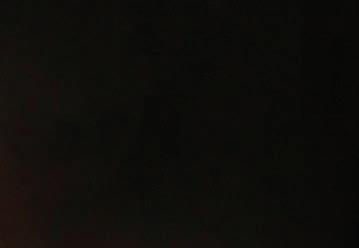




























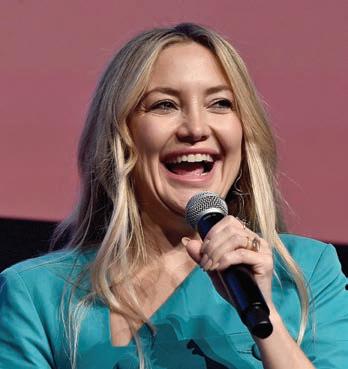



5. Oliver Hermanus 6. Gabriel LaBelle and Judd Hirsch 7. Kate Hudson 8. Angela Bassett 9. Keith Beauchamp, Danielle Deadwyler, Chinonye Chukwu and Jalyn Hall 1 Deadline Contenders Film: Los Angeles November 19, 2022 DGA Theater, Los Angeles 1. Marie Kreutzer 2. Adrien Brody and Ana de Armas 3. Jennifer Connelly 4. Dede Gardner, Sarah Polley, Claire Foy and Ben Whishaw 9 DEADLINE.COM/AWARDSLINE GETTY IMAGES 2 3 4 5 6 7 8 9

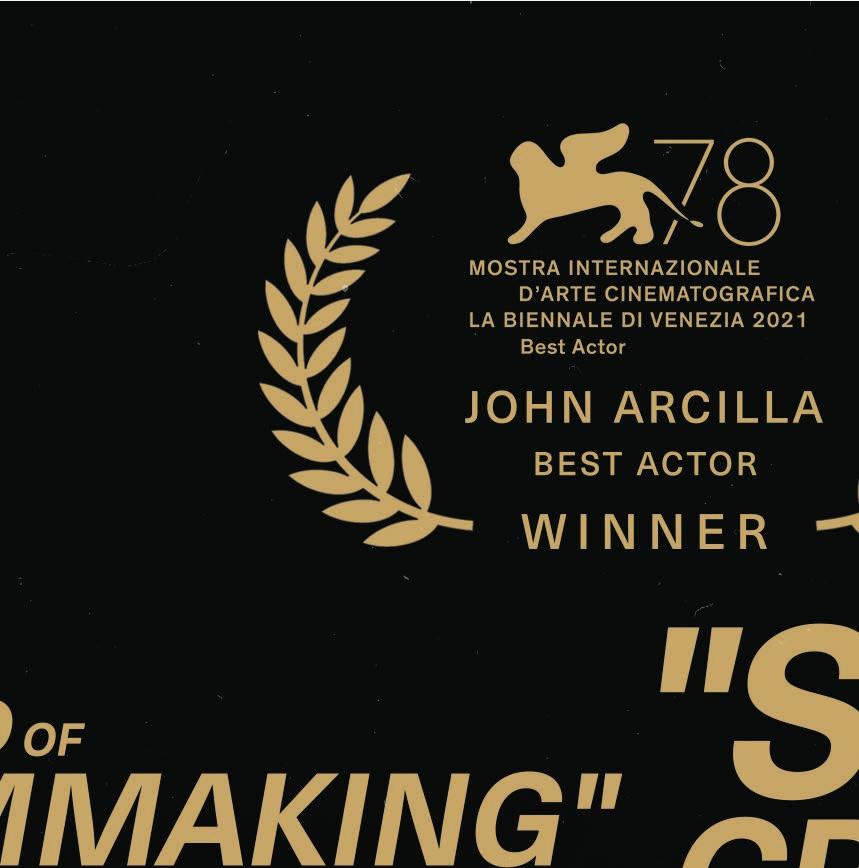






















1.
2.
3.
4.
9 DEADLINE.COM/AWARDSLINE 5. Diego
6. Austin
7. Janelle
8. James
9. Jason
10. Carey
GETTY IMAGES 1 2 3 4 5 6 7 8 9 10
November
DGA
Martín Hernández, Ximena Lamadrid, Daniel Giménez Cacho, Alejandro González Iñárritu, Anna Terrazas and Eugenio Caballero
Florence Pugh
Danny Elfman and Greta Gerwig
Nikyatu Jusu
Calva
Butler
Monáe
Gray and Jeremy Strong
Loftus
Mulligan
Deadline Contenders Film: Los Angeles
19, 2022
Theater, Los Angeles














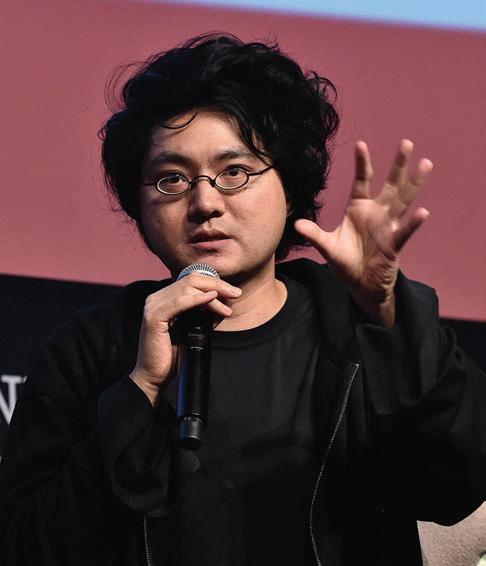

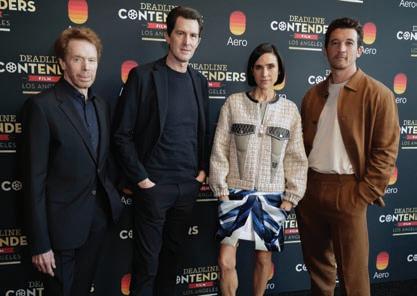






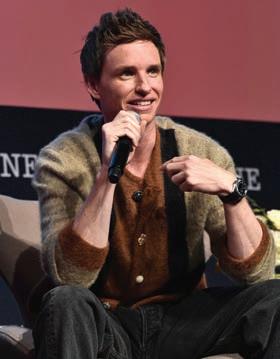
1. Davy Chou 2. Jerry Bruckheimer, Joseph Kosinski, Jennifer Connelly and Miles Teller 3. Ron Howard 4. Zoe Kazan 5. Ewa Piaskowska and Jerzy Skolimowski 6. Laura Dern 7. Eddie Redmayne 8. Park Chan-wook 9. Jalyn Hall 10. Peggy Holmes 9 DEADLINE.COM/AWARDSLINE GETTY IMAGES Deadline Contenders Film: Los Angeles November 19, 2022 DGA Theater, Los Angeles 1 2 3 4 5 6 7 8 9 10


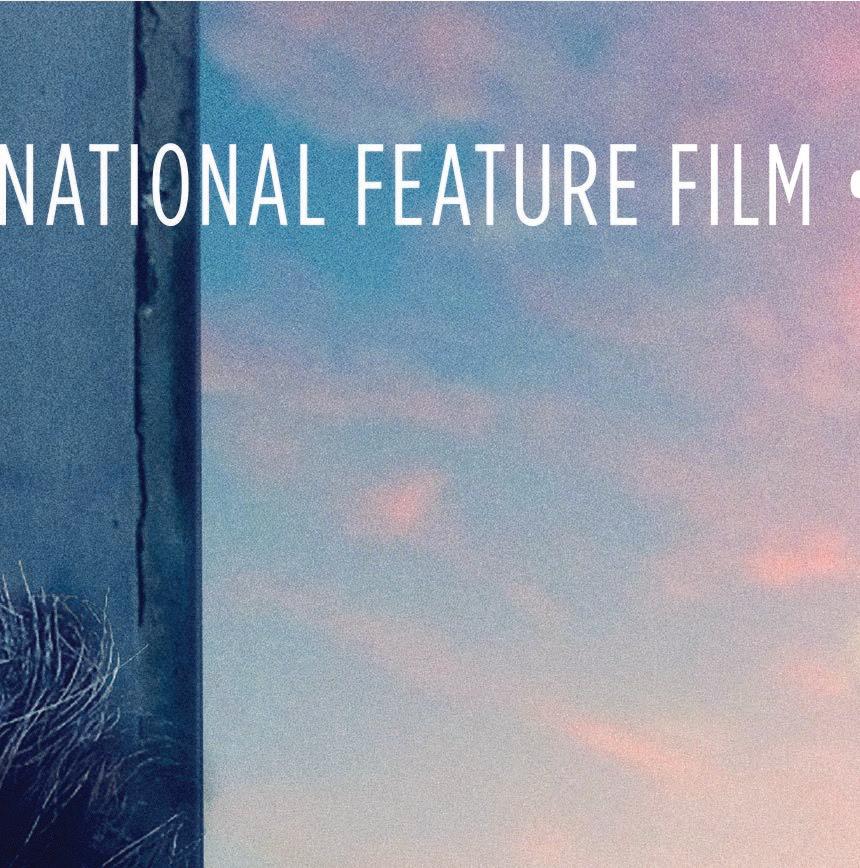


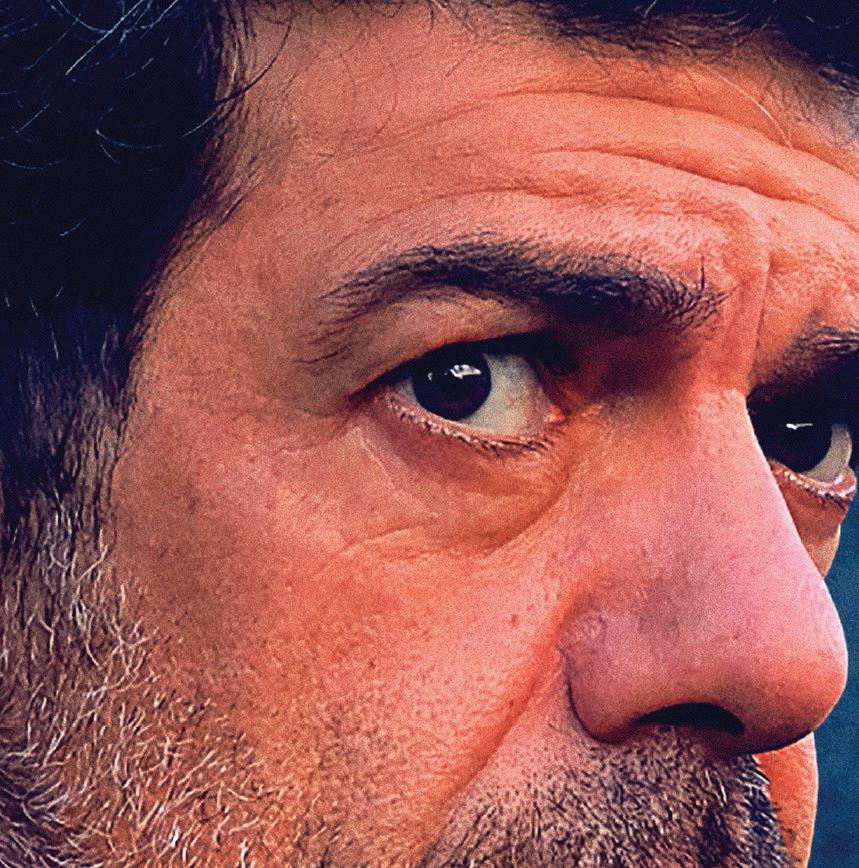

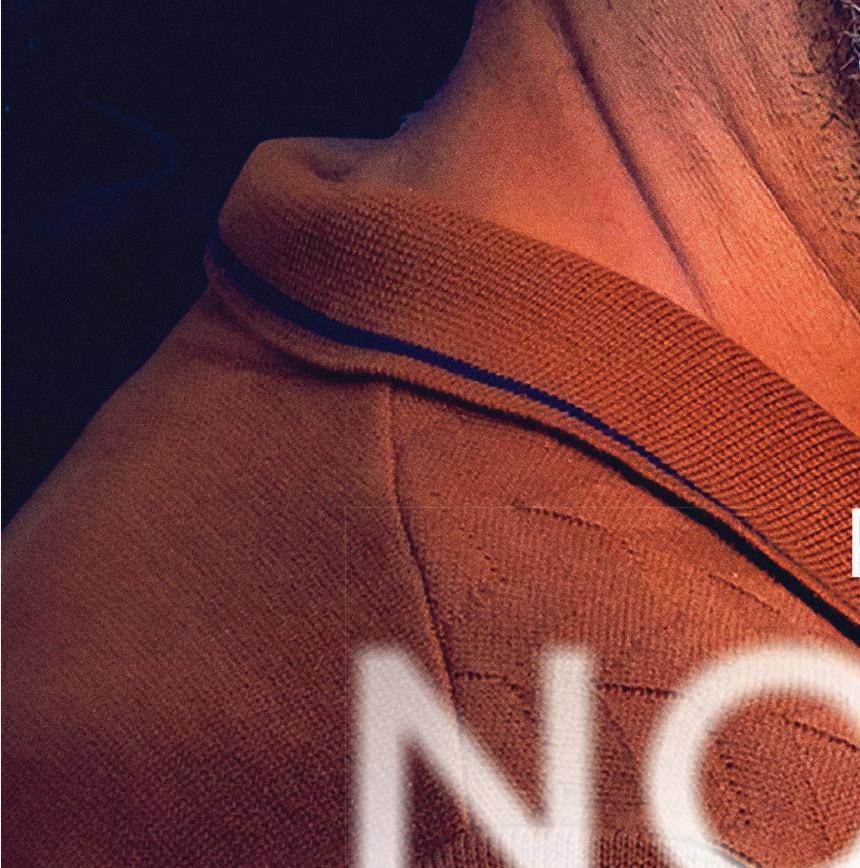












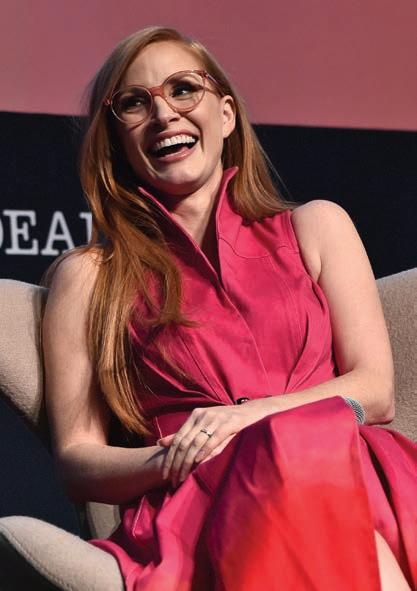






1. Daniel Giménez Cacho 2. Luca Guadagnino 3. Kathryn Hahn 96 DEADLINE.COM/AWARDSLINE 4. Danai Gurira 5. Mark Gustafson, Guillermo del Toro and Alexandre Desplat 6. Miles Teller 7. Lila Neugebauer, Jennifer Lawrence, Brian Tyree Henry and Justine Ciarrocchi 8. Jessica Chastain 9. Sebastián Lelio 10. Claire Foy 11. Benjamin Wallfisch 12. Baz Luhrmann 13. Dylan Cole, Deborah L. Scott and Russell Carpenter
IMAGES Deadline Contenders Film: Los Angeles November 19, 2022 DGA Theater, Los Angeles 1 2 3 4 5 6 7 8 9 10 11 12 13
GETTY








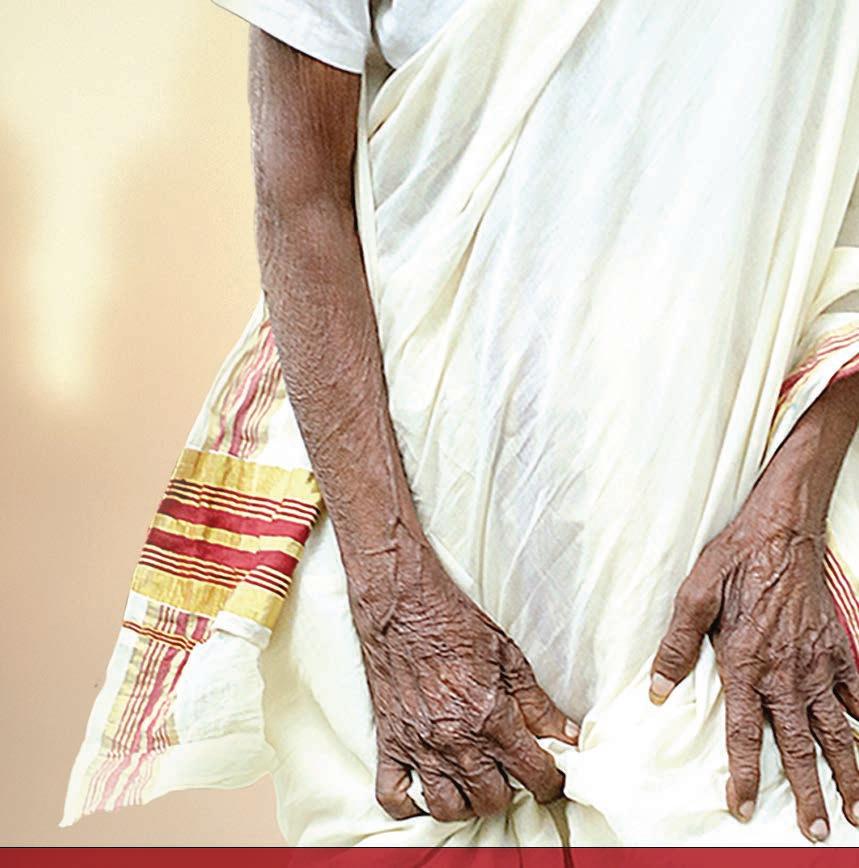


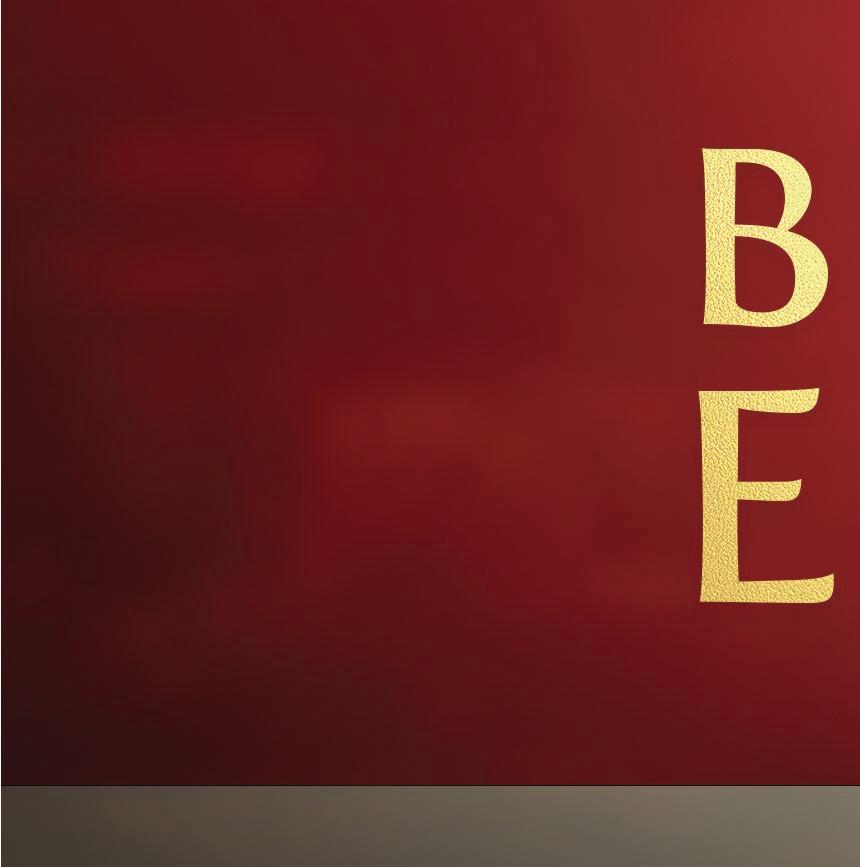






































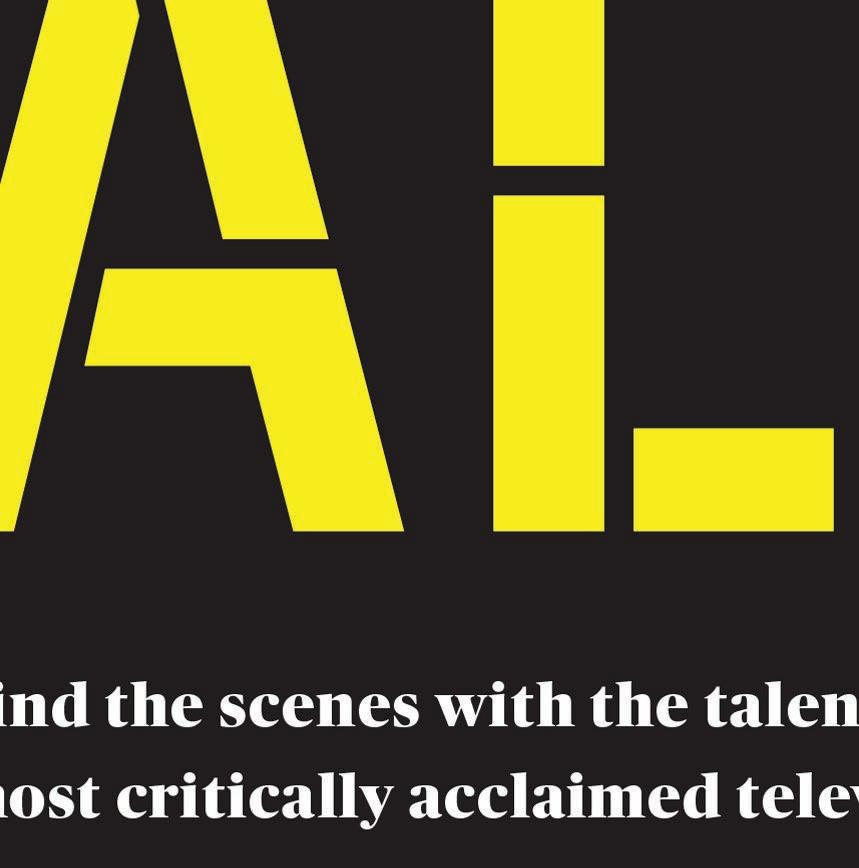























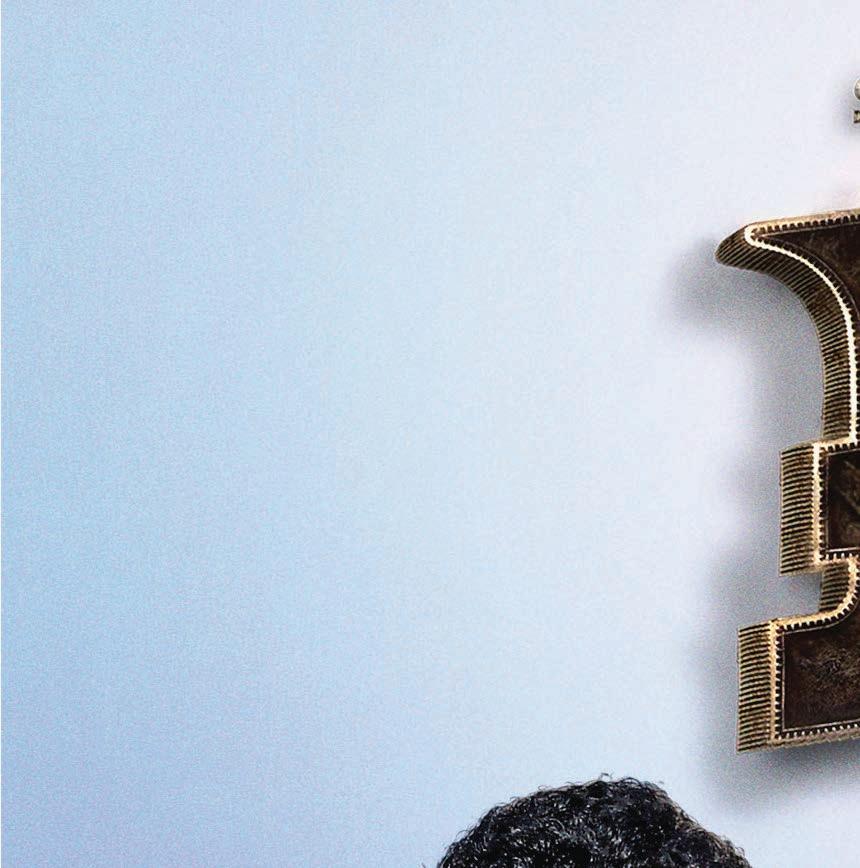



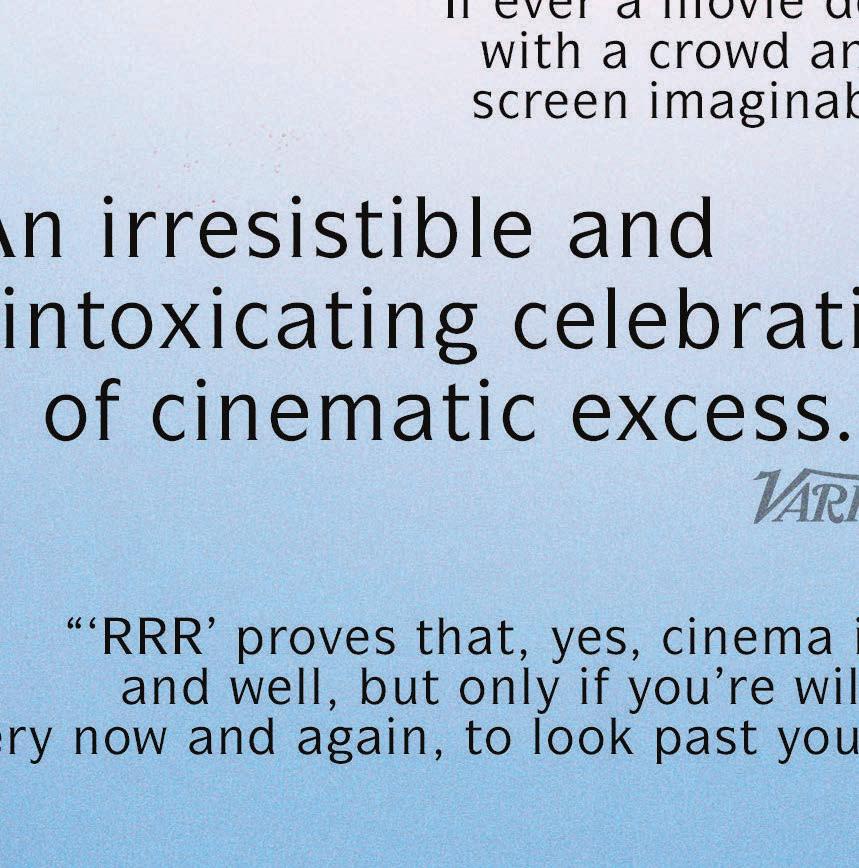





































































































































































































































 From Director CHRIS SMITH and Producer ROBERT DOWNEY JR.
From Director CHRIS SMITH and Producer ROBERT DOWNEY JR.
































































































 Photos by Josh Telles
Photos by Josh Telles
































































































 Colm and Pádraic debate their broken friendship
Farrell and Gleeson at the London Film Festival in October
JE
SPICER/ ETTY
A ES OR WALT DISNEY STUDIOS
OTION PICTURES U /
JONATHAN HESSION/SEARCHLI HT PICTURES/
TH CENTURY STUDIOS
Colm and Pádraic debate their broken friendship
Farrell and Gleeson at the London Film Festival in October
JE
SPICER/ ETTY
A ES OR WALT DISNEY STUDIOS
OTION PICTURES U /
JONATHAN HESSION/SEARCHLI HT PICTURES/
TH CENTURY STUDIOS


































































































 BAZ BAMIGBOYE
BAZ BAMIGBOYE





























 STEVIE WONG
STEVIE WONG






























































































 BY JOE UTICHI
BY JOE UTICHI







































 By Ryan Fleming
By Ryan Fleming




































































































































































































































































































































